Microsoft NHM-10X Dual Band GSM phone with Bluetooth User Manual
Microsoft Mobile Oy Dual Band GSM phone with Bluetooth Users Manual
Users Manual

Nokia 3620 and
Nokia 3660
User Guide
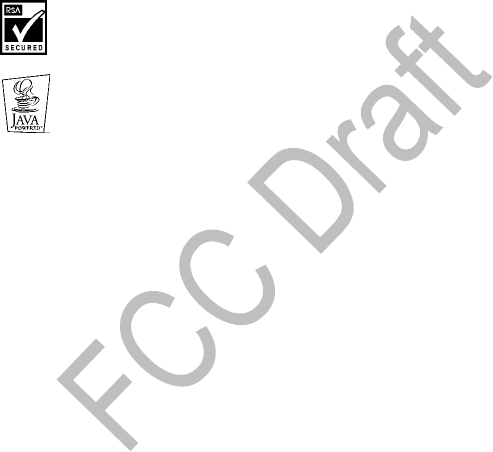
The wireless phones described in this guide are approved for use in the GSM network.
LEGAL INFORMATION
Part No. 9310245, Issue No. 1 1 1
Copyright ©2003 Nokia. All rights reserved.
Nokia, Nokia Connecting People, Nokia 3620, Nokia 3660, and the Nokia Original Accessories
logos are trademarks or registered trademarks of Nokia Corporation. All other product and
company names mentioned herein may be trademarks or tradenames of their respective owners.
Printed in Canada October 2003
US Patent No 5818437 and other pending patents.
T9 text input software Copyright ©1999-2003. Tegic Communications, Inc. All rights reserved.
Includes RSA BSAFE cryptographic or security protocol software from RSA Security.
Java is a trademark of Sun Microsystems, Inc.
Bluetooth is a registered trademark of Bluetooth SIG, Inc.
The information in this user guide was written for the Nokia 3620 and Nokia 3660 phones.
Nokia operates a policy of ongoing development. Nokia reserves the right to make changes and
improvements to any of the products described in this document without prior notice.
UNDER NO CIRCUMSTANCES SHALL NOKIA BE RESPONSIBLE FOR ANY LOSS OF DATA OR
INCOME OR ANY SPECIAL, INCIDENTAL, AND CONSEQUENTIAL OR INDIRECT DAMAGES
HOWSOEVER CAUSED.
THE CONTENTS OF THIS DOCUMENT ARE PROVIDED “AS IS.” EXCEPT AS REQUIRED BY
APPLICABLE LAW, NO WARRANTIES OF ANY KIND, EITHER EXPRESS OR IMPLIED, INCLUDING,
BUT NOT LIMITED TO, THE IMPLIED WARRANTIES OF MERCHANTABILITY AND FITNESS FOR A
PARTICULAR PURPOSE, ARE MADE IN RELATION TO THE ACCURACY AND RELIABILITY OR
CONTENTS OF THIS DOCUMENT. NOKIA RESERVES THE RIGHT TO REVISE THIS DOCUMENT OR
WITHDRAW IT AT ANY TIME WITHOUT PRIOR NOTICE.
EXPORT CONTROLS
This product contains commodities, technology or software exported from the United States
in accordance with the Export Administration regulations. Diversion contrary to U.S. law
is prohibited.
FCC/INDUSTRY CANADA NOTICE
Your phone may cause TV or radio interference (for example, when using a telephone in close
proximity to receiving equipment). The FCC or Industry Canada can require you to stop using
your telephone if such interference cannot be eliminated. If you require assistance, contact
your local service facility. This device complies with part 15 of the FCC rules. This device contains
a radio transceiver and digital circuitry that supports its features. Operation of the digital device
circuitry is subject to the following two conditions: (1) this device may not cause harmful
interference, and (2) this device must accept any interference received, including interference
that may cause undesired operation.
Modifications to this device not authorized by Nokia may void the authority granted for
operation of this device and should not be made.

[ iii ]
Contents
1 For your safety . . . . . . . . . . . . . . . . . . . . . . . . . . . . . 1
2 General information . . . . . . . . . . . . . . . . . . . . . . . . . 3
Register your phone . . . . . . . . . . . . . . . . . . . . . . . . . . . . . . . . . . . . 3
Follow graphic clues. . . . . . . . . . . . . . . . . . . . . . . . . . . . . . . . . . . . 3
Network services. . . . . . . . . . . . . . . . . . . . . . . . . . . . . . . . . . . . . . . 3
Contact Nokia . . . . . . . . . . . . . . . . . . . . . . . . . . . . . . . . . . . . . . . . . 4
Learn about accessibility solutions . . . . . . . . . . . . . . . . . . . . . . . . 5
Nokia 3620 and Nokia 3660 phones at a glance . . . . . . . . . . . . . 6
Understand your phone . . . . . . . . . . . . . . . . . . . . . . . . . . . . . . . . . 7
Menu . . . . . . . . . . . . . . . . . . . . . . . . . . . . . . . . . . . . . . . . . . . . . . . 16
Options lists . . . . . . . . . . . . . . . . . . . . . . . . . . . . . . . . . . . . . . . . . 17
Navigation bar . . . . . . . . . . . . . . . . . . . . . . . . . . . . . . . . . . . . . . . 18
Actions common to all applications . . . . . . . . . . . . . . . . . . . . . . 18
Volume control . . . . . . . . . . . . . . . . . . . . . . . . . . . . . . . . . . . . . . . 20
Loudspeaker . . . . . . . . . . . . . . . . . . . . . . . . . . . . . . . . . . . . . . . . . 20
Headset . . . . . . . . . . . . . . . . . . . . . . . . . . . . . . . . . . . . . . . . . . . . . 21
Shared memory. . . . . . . . . . . . . . . . . . . . . . . . . . . . . . . . . . . . . . . 21
3 Your phone . . . . . . . . . . . . . . . . . . . . . . . . . . . . . . . 22
Make a call . . . . . . . . . . . . . . . . . . . . . . . . . . . . . . . . . . . . . . . . . . 22
Answer a call. . . . . . . . . . . . . . . . . . . . . . . . . . . . . . . . . . . . . . . . . 25
Log—Call log and general log . . . . . . . . . . . . . . . . . . . . . . . . . . . 27
SIM folder . . . . . . . . . . . . . . . . . . . . . . . . . . . . . . . . . . . . . . . . . . . 33
4 Settings. . . . . . . . . . . . . . . . . . . . . . . . . . . . . . . . . . 34

[ iv ]
Change general settings. . . . . . . . . . . . . . . . . . . . . . . . . . . . . . . . 34
Phone settings . . . . . . . . . . . . . . . . . . . . . . . . . . . . . . . . . . . . . . . 34
Call settings . . . . . . . . . . . . . . . . . . . . . . . . . . . . . . . . . . . . . . . . . 36
Connection settings . . . . . . . . . . . . . . . . . . . . . . . . . . . . . . . . . . . 38
Access points . . . . . . . . . . . . . . . . . . . . . . . . . . . . . . . . . . . . . . . . 40
Date and time . . . . . . . . . . . . . . . . . . . . . . . . . . . . . . . . . . . . . . . . 45
Security . . . . . . . . . . . . . . . . . . . . . . . . . . . . . . . . . . . . . . . . . . . . . 46
Call restriction (system service). . . . . . . . . . . . . . . . . . . . . . . . . . 50
System . . . . . . . . . . . . . . . . . . . . . . . . . . . . . . . . . . . . . . . . . . . . . . 51
Accessory settings . . . . . . . . . . . . . . . . . . . . . . . . . . . . . . . . . . . . 51
5 Contacts. . . . . . . . . . . . . . . . . . . . . . . . . . . . . . . . . 52
Create contact cards . . . . . . . . . . . . . . . . . . . . . . . . . . . . . . . . . . 52
Copy between SIM card and phone memory . . . . . . . . . . . . . . . 52
Edit contact cards. . . . . . . . . . . . . . . . . . . . . . . . . . . . . . . . . . . . . 53
View a contact card . . . . . . . . . . . . . . . . . . . . . . . . . . . . . . . . . . . 54
Manage contact groups . . . . . . . . . . . . . . . . . . . . . . . . . . . . . . . . 59
Import data from other Nokia phones . . . . . . . . . . . . . . . . . . . . 60
6 Camera and images . . . . . . . . . . . . . . . . . . . . . . . . 61
Take pictures . . . . . . . . . . . . . . . . . . . . . . . . . . . . . . . . . . . . . . . . . 61
Store pictures in images . . . . . . . . . . . . . . . . . . . . . . . . . . . . . . . 65
7 Video recorder . . . . . . . . . . . . . . . . . . . . . . . . . . . . 69
Record a video clip . . . . . . . . . . . . . . . . . . . . . . . . . . . . . . . . . . . . 69
Watch a video clip . . . . . . . . . . . . . . . . . . . . . . . . . . . . . . . . . . . . 70
8 RealOne Player™. . . . . . . . . . . . . . . . . . . . . . . . . . . 71
Play media files. . . . . . . . . . . . . . . . . . . . . . . . . . . . . . . . . . . . . . . 71

[ v ]
Send media files . . . . . . . . . . . . . . . . . . . . . . . . . . . . . . . . . . . . . . 73
Change the settings . . . . . . . . . . . . . . . . . . . . . . . . . . . . . . . . . . . 73
9 Messaging . . . . . . . . . . . . . . . . . . . . . . . . . . . . . . . . 75
Messaging—General information . . . . . . . . . . . . . . . . . . . . . . . . 77
Write text . . . . . . . . . . . . . . . . . . . . . . . . . . . . . . . . . . . . . . . . . . . 78
Copy text . . . . . . . . . . . . . . . . . . . . . . . . . . . . . . . . . . . . . . . . . . . . 82
Create and send new messages. . . . . . . . . . . . . . . . . . . . . . . . . . 82
Text messages . . . . . . . . . . . . . . . . . . . . . . . . . . . . . . . . . . . . . . . . 83
Multimedia messages. . . . . . . . . . . . . . . . . . . . . . . . . . . . . . . . . . 85
E-mail messages . . . . . . . . . . . . . . . . . . . . . . . . . . . . . . . . . . . . . . 88
Inbox . . . . . . . . . . . . . . . . . . . . . . . . . . . . . . . . . . . . . . . . . . . . . . . 90
My folders . . . . . . . . . . . . . . . . . . . . . . . . . . . . . . . . . . . . . . . . . . . 94
Remote mailbox . . . . . . . . . . . . . . . . . . . . . . . . . . . . . . . . . . . . . . 95
Outbox . . . . . . . . . . . . . . . . . . . . . . . . . . . . . . . . . . . . . . . . . . . . . 100
View messages on a SIM card . . . . . . . . . . . . . . . . . . . . . . . . . . 101
Cell broadcast (system service) . . . . . . . . . . . . . . . . . . . . . . . . . 101
Service command editor. . . . . . . . . . . . . . . . . . . . . . . . . . . . . . . 101
Messaging settings. . . . . . . . . . . . . . . . . . . . . . . . . . . . . . . . . . . 102
10 Profiles . . . . . . . . . . . . . . . . . . . . . . . . . . . . . . . . . 109
Change the profile . . . . . . . . . . . . . . . . . . . . . . . . . . . . . . . . . . . 109
Customize profiles . . . . . . . . . . . . . . . . . . . . . . . . . . . . . . . . . . . 109
11 Favorites . . . . . . . . . . . . . . . . . . . . . . . . . . . . . . . . 111
Add shortcuts . . . . . . . . . . . . . . . . . . . . . . . . . . . . . . . . . . . . . . . 111
Shortcut options . . . . . . . . . . . . . . . . . . . . . . . . . . . . . . . . . . . . . 112
12 Calendar and To-do. . . . . . . . . . . . . . . . . . . . . . . . 113

[ vi ]
Create calendar entries . . . . . . . . . . . . . . . . . . . . . . . . . . . . . . . 113
Set calendar alarms . . . . . . . . . . . . . . . . . . . . . . . . . . . . . . . . . . 116
Send calendar entries. . . . . . . . . . . . . . . . . . . . . . . . . . . . . . . . . 117
To-do . . . . . . . . . . . . . . . . . . . . . . . . . . . . . . . . . . . . . . . . . . . . . . 117
Import data from other Nokia phones . . . . . . . . . . . . . . . . . . . 118
13 Extras. . . . . . . . . . . . . . . . . . . . . . . . . . . . . . . . . . 119
Calculator . . . . . . . . . . . . . . . . . . . . . . . . . . . . . . . . . . . . . . . . . . 119
Composer. . . . . . . . . . . . . . . . . . . . . . . . . . . . . . . . . . . . . . . . . . . 120
Converter. . . . . . . . . . . . . . . . . . . . . . . . . . . . . . . . . . . . . . . . . . . 121
Notes . . . . . . . . . . . . . . . . . . . . . . . . . . . . . . . . . . . . . . . . . . . . . . 123
Clock . . . . . . . . . . . . . . . . . . . . . . . . . . . . . . . . . . . . . . . . . . . . . . 123
Recorder . . . . . . . . . . . . . . . . . . . . . . . . . . . . . . . . . . . . . . . . . . . 124
Memory card. . . . . . . . . . . . . . . . . . . . . . . . . . . . . . . . . . . . . . . . 124
14 Services (XHTML) . . . . . . . . . . . . . . . . . . . . . . . . . 128
Basic steps for accessing the web. . . . . . . . . . . . . . . . . . . . . . . 128
Phone browser service settings . . . . . . . . . . . . . . . . . . . . . . . . . 129
Browsing . . . . . . . . . . . . . . . . . . . . . . . . . . . . . . . . . . . . . . . . . . . 132
View saved pages . . . . . . . . . . . . . . . . . . . . . . . . . . . . . . . . . . . . 133
Download through the browser. . . . . . . . . . . . . . . . . . . . . . . . . 134
End a connection . . . . . . . . . . . . . . . . . . . . . . . . . . . . . . . . . . . . 135
Browser settings . . . . . . . . . . . . . . . . . . . . . . . . . . . . . . . . . . . . . 135
15 Java™ Applications . . . . . . . . . . . . . . . . . . . . . . . . 137
Install a Java application . . . . . . . . . . . . . . . . . . . . . . . . . . . . . . 138
Java application settings . . . . . . . . . . . . . . . . . . . . . . . . . . . . . . 139
16 Manager. . . . . . . . . . . . . . . . . . . . . . . . . . . . . . . . 140

[ vii ]
Install applications and software . . . . . . . . . . . . . . . . . . . . . . . 140
Install software . . . . . . . . . . . . . . . . . . . . . . . . . . . . . . . . . . . . . . 141
Remove software . . . . . . . . . . . . . . . . . . . . . . . . . . . . . . . . . . . . 142
View memory consumption . . . . . . . . . . . . . . . . . . . . . . . . . . . . 143
17 Connectivity . . . . . . . . . . . . . . . . . . . . . . . . . . . . . 144
Bluetooth connection. . . . . . . . . . . . . . . . . . . . . . . . . . . . . . . . . 144
Infrared connection . . . . . . . . . . . . . . . . . . . . . . . . . . . . . . . . . . 150
Connect your phone to a computer . . . . . . . . . . . . . . . . . . . . . 152
Use your phone as a modem . . . . . . . . . . . . . . . . . . . . . . . . . . . 153
18 PC Suite . . . . . . . . . . . . . . . . . . . . . . . . . . . . . . . . 154
PC Suite documentation and help. . . . . . . . . . . . . . . . . . . . . . . 154
Software and hardware requirements . . . . . . . . . . . . . . . . . . . 155
Install PC Suite . . . . . . . . . . . . . . . . . . . . . . . . . . . . . . . . . . . . . . 155
Connect your phone to the PC. . . . . . . . . . . . . . . . . . . . . . . . . . 157
Start PC Suite . . . . . . . . . . . . . . . . . . . . . . . . . . . . . . . . . . . . . . . 157
Online and offline modes. . . . . . . . . . . . . . . . . . . . . . . . . . . . . . 158
Connection status. . . . . . . . . . . . . . . . . . . . . . . . . . . . . . . . . . . . 158
PC Suite applications . . . . . . . . . . . . . . . . . . . . . . . . . . . . . . . . . 159
Remove PC Suite from your PC . . . . . . . . . . . . . . . . . . . . . . . . . 161
19 Reference information. . . . . . . . . . . . . . . . . . . . . . 163
Battery statements . . . . . . . . . . . . . . . . . . . . . . . . . . . . . . . . . . . 163
Use proper care and maintenance. . . . . . . . . . . . . . . . . . . . . . . 164
Understand important safety information . . . . . . . . . . . . . . . . 165
Certification information (SAR). . . . . . . . . . . . . . . . . . . . . . . . . 169
Accessories . . . . . . . . . . . . . . . . . . . . . . . . . . . . . . . . . . . . . . . . . 170
Nokia 3620 technical information . . . . . . . . . . . . . . . . . . . . . . 176

[ viii ]
Nokia 3660 technical information . . . . . . . . . . . . . . . . . . . . . . 177
Troubleshooting . . . . . . . . . . . . . . . . . . . . . . . . . . . . . . . . . . . . . 178
Message from the CTIA . . . . . . . . . . . . . . . . . . . . 187
Message from the FDA . . . . . . . . . . . . . . . . . . . . . 191
Index . . . . . . . . . . . . . . . . . . . . . . . . . . . . . . . . . . 197
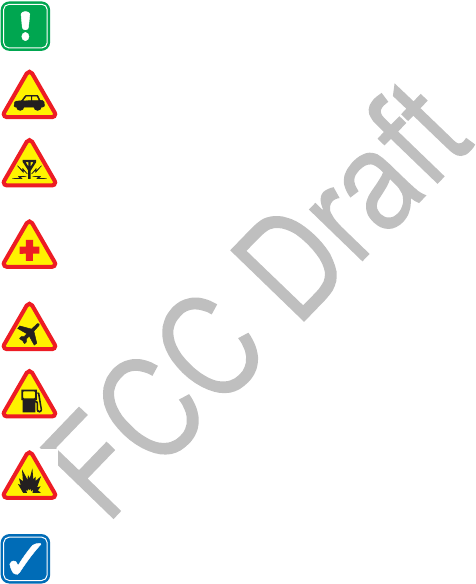
[ 1 ]
For your safety
1 For your safety
Read these simple guidelines. Breaking the rules may be dangerous or
illegal. Further detailed information is given in this user guide.
Do not switch the phone on when wireless phone use is
prohibited or when it may cause interference or danger.
ROAD SAFETY COMES FIRST
Don’t use a hand-held phone while driving.
INTERFERENCE
All wireless phones may get interference, which could affect
performance.
SWITCH OFF IN HOSPITALS
Follow any regulations or rules. Switch the phone off near
medical equipment.
SWITCH OFF IN AIRCRAFT
Wireless devices can cause interference in aircraft.
SWITCH OFF WHEN REFUELING
Don’t use the phone at a refuelling point. Don’t use near fuel
or chemicals.
SWITCH OFF NEAR BLASTING
Don’t use the phone where blasting is in progress. Observe
restrictions, and follow any regulations or rules.
USE SENSIBLY
Use only in the normal position. Don’t touch the antenna
unnecessarily.
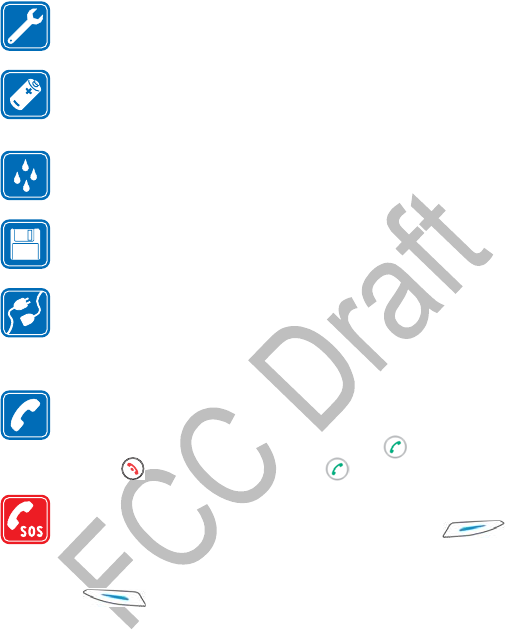
[ 2 ]
QUALIFIED SERVICE
Only qualified personnel may install or repair phone equipment.
ACCESSORIES AND BATTERIES
Use only approved accessories and batteries. Do not connect
incompatible products.
WATER-RESISTANCE
Your phone is not water-resistant. Keep it dry.
BACKUP COPIES
Remember to make backup copies of all important data.
CONNECTING TO OTHER DEVICES
When connecting to any other device, read its user guide
for detailed safety instructions. Do not connect incompatible
products.
CALLING
Ensure the phone is switched on and in service. Enter the phone
number, including the area code, then press . To end a call,
press . To answer a call, press .
EMERGENCY CALLS
Ensure the phone is switched on and in service. Press
as many times as needed (e.g. to exit a call, to exit a menu, etc.)
to clear the display. Enter the emergency number, then press
. Give your location. Do not end the call until told
to do so.

[ 3 ]
General information
2 General information
Congratulations on your purchase of a Nokia mobile phone. Your phone
provides many functions which are practical for daily use, such as a digital
camera, a video recorder, messaging, e-mail, a clock, an alarm clock, a
calculator, and a calendar. A variety of Xpress-on™ color covers are also
available. Your phone can connect to a PC, laptop, or other device using a
data cable, Bluetooth technology, or the built-in IR port. For more information
on connectivity, refer to the PC Connectivity Guide. The PC Connectivity
guide, Nokia PC Suite, and all related software can be downloaded from
the U.S. Mobile Phone products section of www.nokia.com.
• REGISTER YOUR PHONE
Make sure to register your phone at www.warranty.nokiausa.com or call
1-888-NOKIA-2U (1-888-665-4228) so that we can serve your needs
better if you should need to call the center or have your phone repaired.
When you register your phone, you can sign up for the Nokia e-newsletter,
Nokia Connections. You will receive tips and tricks on using your phone,
accessory information, and special offers.
• FOLLOW GRAPHIC CLUES
This guide uses certain icons to alert you to important information.
Note: Explains a feature or points out an important concept.
Important: Indicates critical information on using a feature.
Warning: Helps you avoid personal injury, damage to the phone,
or property damage.
• NETWORK SERVICES
The wireless phones described in this guide are approved for use on the
following networks:
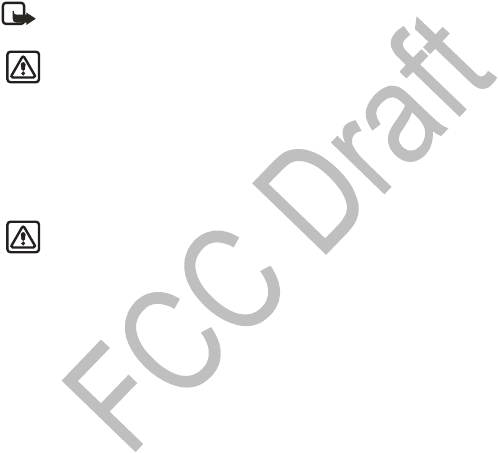
[ 4 ]
• Nokia 3620: GSM 850 and 1900
• Nokia 3660: GSM 900, 1800, and 1900
A number of features included in this guide are called Network Services.
These are special services that you arrange through your wireless service
provider. Before you can take advantage of any of these Network Services,
you must subscribe to them through your service provider and obtain
instructions for their use from your service provider.
Note: Some networks may not support all language-dependent
characters and/or services.
Warning:All of the features in this device, other than the alarm,
require the phone to be switched on to use the features. Do not
switch the phone on when wireless phone use may cause
interference or danger.
Check the model number of any charger before use with this device. This
device is intended for use when supplied with power from ACP-12U,
ACP-8U, LCH-9, and LCH-12.
Warning:Use only batteries, chargers, and accessories approved
by the phone manufacturer for use with this particular phone
model. The use of any other types may invalidate any approval or
warranty applying to the phone and may be dangerous.
For availability of approved accessories, please check with your dealer.
When you disconnect the power cord of any accessory, grasp and pull the
plug, not the cord.
• CONTACT NOKIA
To help Nokia promptly answer your questions, please have the following
information available before contacting the Nokia Customer Care Center:
• Your phone model number:
Nokia 3620
Nokia 3660
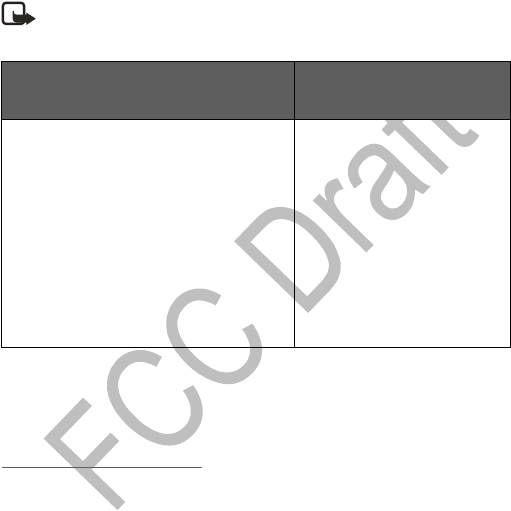
[ 5 ]
General information
• Type number
•IMEI number
• Your local zip code
• The phone or accessory in question
Note: The model, type, and IMEI numbers are located on the back
of your phone under the battery and memory card.
• LEARN ABOUT ACCESSIBILITY SOLUTIONS
Nokia is committed to making mobile phones easy to use for all
individuals including those with disabilities. For more information, visit
www.nokiaaccessibility.com.
For more information on accessibility accessories, see “Mobile Inductive
Loopset LPS-3” on p. 173 and “Phone Adapter HDA-9” on p. 173.
Nokia Customer Care Center, USA Customer Care,
Canada
Nokia Mobile Phones
7725 Woodland Center Blvd.
Suite #150
Tampa, Florida 33614
Tel: 1-888-NOKIA-2U
(1-888-665-4228)
Fax: 1-813-249-9619
For TTY/TDD users: 1-800-24-NOKIA
(1-800-246-6542)
Nokia Products Ltd.
601 Westney Road South
Ajax, Ontario L1S 4N7
Tel: 1-888-22-NOKIA
(1-888-226-6542)
Website: www.nokia.ca
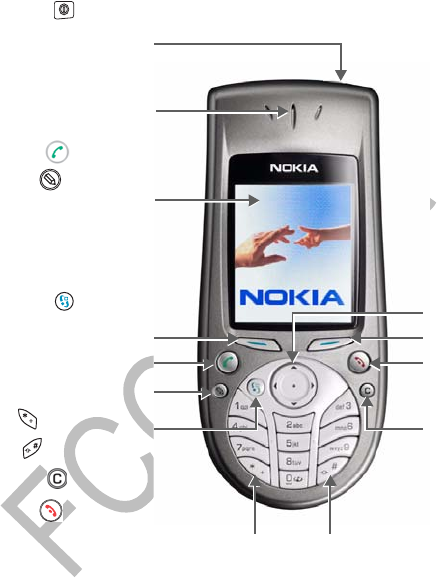
[ 6 ]
• NOKIA 3620 AND NOKIA 3660 PHONES AT A
GLANCE
1Power key ( )
(on top of the phone)
2Earpiece
3Display screen
4Left selection key
5Send key ( )
6Edit key ( )
Insert numbers,
symbols, or
punctuation into
text messages.
7Menu key ( )
Opens the main
menu screen.
Accesses all
applications.
8* key ( )
9# key ( )
10 Clear key ( )
11 End key ( )
12 Right selection key
13 Scroll key
Used to navigate up, down, left, and right on the display screen and
adjust volume during a call. Press the center to select or open items,
snap pictures, etc.
1
2
3
4
5
7
8
6
9
10
13
12
11
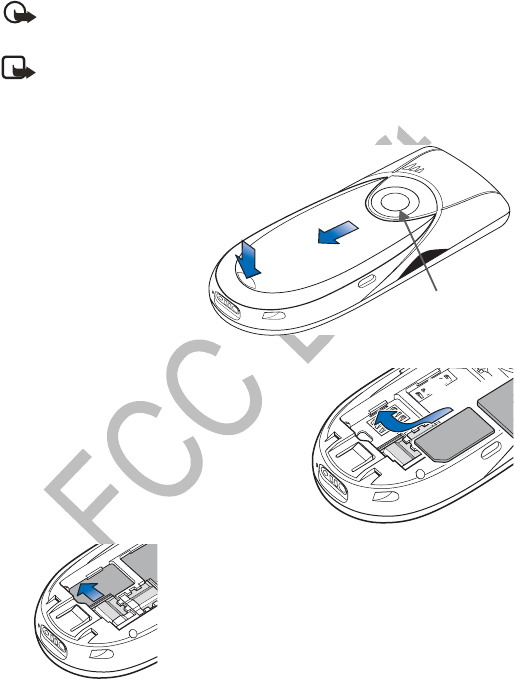
[ 7 ]
General information
• UNDERSTAND YOUR PHONE
Insert the SIM card and load the battery
Important:Keep all miniature SIM cards out of the reach of small
children.
Note: Before removing the covers, always switch off the power and
disconnect the phone from the charger or any other device. Always
store and use the phone with the covers attached.
1Open the cover with
the back of the phone
facing you. Press the
locking catch (1) in
the direction of the
arrow and slide the
cover (2).
2Remove the battery
and find the SIM card
slot (3).
3Place the SIM card carefully into the
slot. Make sure that the beveled corner
on the SIM card faces the bottom of
the phone and that the golden contact
area on the card faces downward.
4Slide the silver catch over the SIM card to
secure it. (4).
Camera lens
1
2
3
4
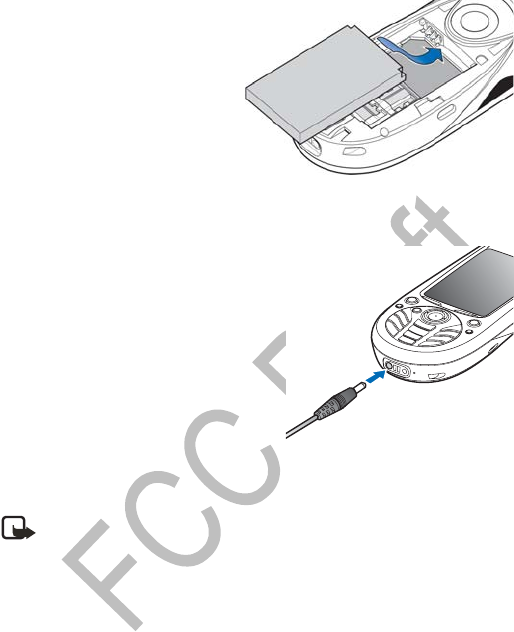
[ 8 ]
5Replace the battery (5).
Align the golden contacts
of the battery with the
corresponding connectors
on the phone, and push the
opposite end of the battery
until it snaps into place.
Replace the cover.
Charge the battery
1Connect the lead to the charger. You will hear it click into place.
2Connect the charger to an ac wall
outlet.
3Connect the lead from the charger
to the base of the phone. The
battery indicator bar starts
scrolling. Note, that you can use
the phone while charging.
4When the battery is fully charged,
the bar stops scrolling. Disconnect
the charger from the phone and then from the ac outlet. See also
“Battery statements” on p. 163.
Note: Remove the battery only when the phone is switched off.
5
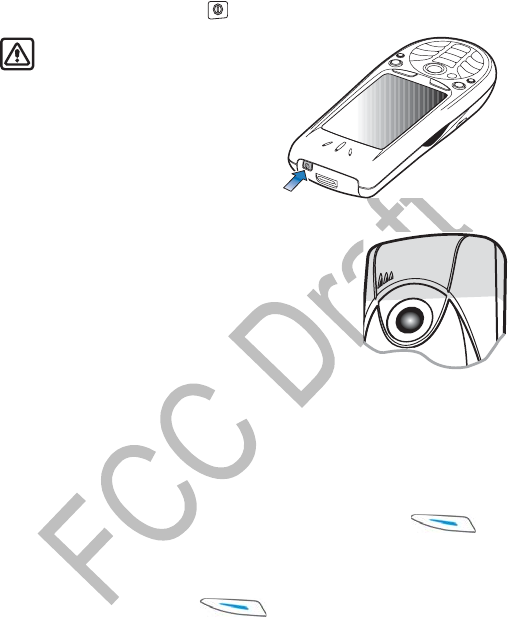
[ 9 ]
General information
Switch the phone on or off
Press and hold the power key located on top of the phone.
Warning:Do not switch on the
phone when wireless phone
use is prohibited or when it
may cause interference or
danger.
Antenna
Your phone has a built-in antenna (gray area in
picture). As with any other radio transmitting
device, do not touch the antenna unnecessarily
when the phone is switched on.
Contact with the antenna affects call quality
and may cause the phone to operate at a higher
power level than otherwise needed. Not touching
the antenna area during a phone call optimizes
the antenna performance and the talk time of
your phone.
PIN code
The PIN code is usually supplied with the SIM card. If you are requested to
enter a PIN code, Key in the code (displayed as ****) and press OK.
Security code
If you are requested to enter a security code, key in the security code
(displayed as *****) and press OK.
The factory setting for the security code is 12345. For more information
on the access codes, see “Security” on p. 46.
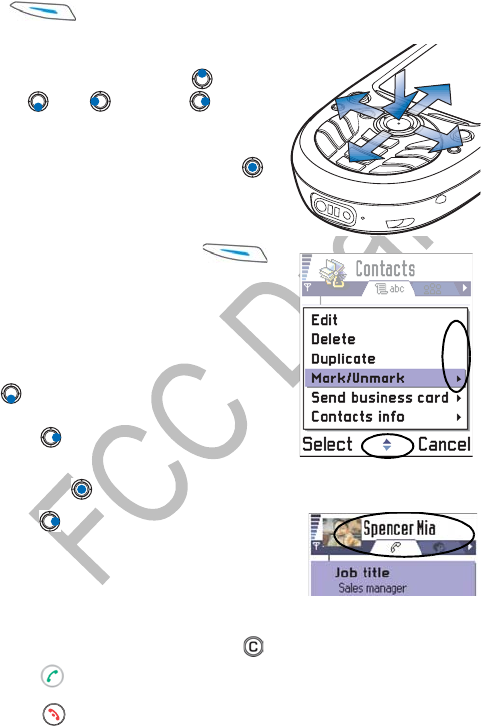
[ 10 ]
Time and date
Use the number keys 1–9 to key in the current time and then the date.
Press OK to accept the settings.
The Scroll key
Press the Scroll key on the top ,
bottom , left and right (shown
with blue arrows 1 to 4) to move in the
Menu. Scroll to an application or a folder
and press the Scroll key in the middle
(shown with blue arrow 5) to open it. For
example:
1To open an Options list, press
Options. The small arrow at the bottom
of the display (1) indicates if the list
contains more items. The lighter the
arrow, the fewer the items left in the list.
2To scroll down the Options list, press
. A small arrow to the right (2)
indicates a sublist. To open a sublist,
press .
To start an action, scroll to a command
and press .
3Press to go to a tab (3), a new page, or
view in an application.
Make a call
1In the standby mode, key in the phone number, including the area
code. If you make a mistake, press to clear numbers.
2Press and wait for the answer.
3Press to finish the call (or to cancel the call attempt).
1
2
3
4
5
2
1
3
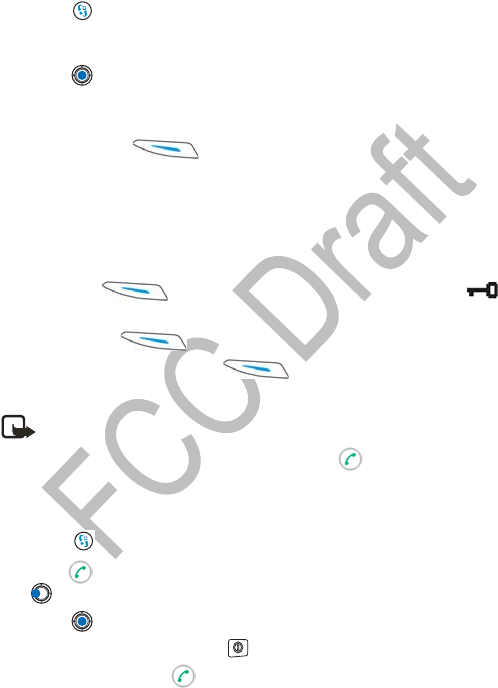
[ 11 ]
General information
Copy from SIM card to phone memory
If you have stored names and phone numbers on a SIM card, you can copy
them to the phone memory.
1Press to open the main Menu.
2Use the Scroll key to move to Contacts.
3Press to open Contacts.
4When you open Contacts for the first time, the phone asks you if you
want to copy all your contact data from the SIM card to the phone
memory. Press OK.
See also “Copy between SIM card and phone memory” on p. 52.
Keyguard
Use the keyguard (keypad lock) to prevent the keys from being
accidentally pressed.
To lock: Press and the * key. When the keys are locked,
appears on the display.
To unlock: Press and the * key.
When the keyguard is on, press to answer a call. During a call,
the phone can be operated normally.
Note: When Keyguard is on, calls to the emergency number
programmed into your phone (for example, 911) may be possible.
Key in the emergency number and press . The number is
displayed after you have keyed in the last digit.
Shortcuts in the standby mode
• Press to open the main Menu.
• Press to open a list of the last dialed numbers. You can then press
to view received and missed calls lists.
• Press to open Contacts.
• To change the profile, press briefly and select the profile.
•Press the 1 key and to call your voice mailbox. See “Call your
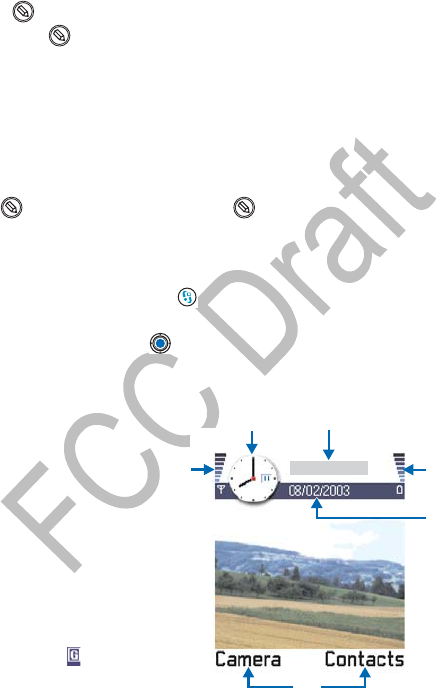
[ 12 ]
voice mailbox” on p. 23.
Shortcuts in editors
• Press to open a list of commands related to writing and editing
text. Press to switch between predictive, traditional text input
and number mode (Predictive text→ Predictive text on, Alpha mode,
or Number mode).
• As you write, press the 1 key repeatedly to access different kinds of
special characters, or press the * key to open a list of special
characters.
•Press the 0 key to enter a space.
• Use to mark items. Press and hold and at the same time, move
the Scroll key to mark text to be copied or erased.
Other shortcuts
In the main Menu, press and hold to view all the applications that are
currently open. From this view, you can switch between applications by
scrolling to one and pressing .
Standby mode
The indicators described are
shown when the phone is ready
for use, with no characters
keyed in. In this state, the
phone is in the standby mode.
A Shows the signal strength
of the cellular network at
your current location. The
higher the bar, the stronger
the signal. The antenna
symbol is replaced with the
GPRS symbol when the
A
BC
D
E
F

[ 13 ]
General information
GPRS connection has been set to When available and a connection is
available in the system or in the current cell. See “GPRS Packet data”
on p. 39, and “GPRS” on p. 45.
B Shows an analog or a digital clock. Also see settings for “Date and
time” on p. 45 and settings for Background image in “Standby mode”
on p. 36.
C Indicates which cellular system the phone is currently using.
D Shows the battery charge level. The higher the bar, the more charge
there is left in the battery.
E Navigation bar: shows the currently active profile. If the selected
profile is Normal, the current date is displayed instead of the profile
name. For further information, see “Navigation bar” on p. 18 and
“Profiles” on p. 109.
F Shows the current shortcuts assigned for the selection keys
and .
Note: Your phone has a screen saver. If there are no actions for five
minutes, the display is cleared and a screen saver becomes visible. To
deactivate the screen saver, press any key. See “Display” on p. 36.
You can change the selection key shortcuts and the background image.
See the settings for “Standby mode” on p. 36.
Icons
Several icons may appear on the main screen while the phone is in the
standby mode. The icons that are displayed depend on whether they are
related to activity, data connections, or accessories.
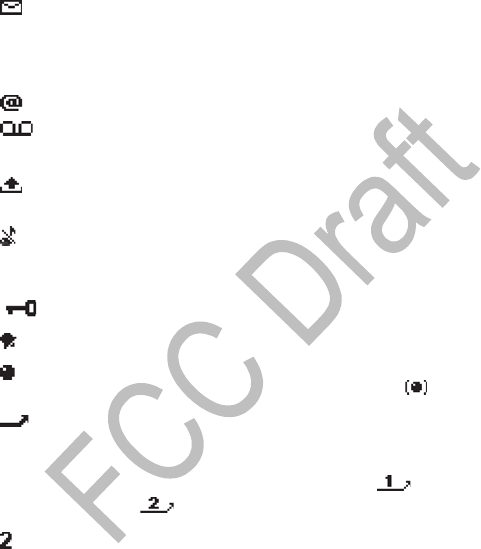
[ 14 ]
ACTIVITY INDICATORS
One or more of the following icons may be shown to indicate that an
activity has occurred:
Indicates that you have received new messages to the Inbox in
Messaging. If the indicator is blinking, the phone memory is low
and you must delete some data. For further information, see
“Memory low” on p. 178.
Indicates that you have received new e-mail.
Indicates that you have received one or more voice messages.
See “Call your voice mailbox” on p. 23.
Indicates that there are messages waiting to be sent in Outbox.
See “Outbox” on p. 100.
Indicates that Ringing options has been set to Silent and
Message alert tone to None in the currently active profile.
See “Profiles” on p. 109.
Indicates that the phone’s keypad is locked.
Indicates that you have an active alarm. See “Clock” on p. 123.
Indicates that a Bluetooth connection is active. Note that, when
data is transmitted using a Bluetooth connection, is shown.
Indicates that all calls to the phone are forwarded. Indicates
that all calls to the phone are forwarded to a voice mailbox. See
“Settings for call forwarding” on p. 27. If you have two phone
lines, the forward indicator for the first line is and for the
second line . See “Line in use (system service)” on p. 37.
Indicates that you can make calls using phone line 2 only
(system service). See “Line in use (system service)” on p. 37.
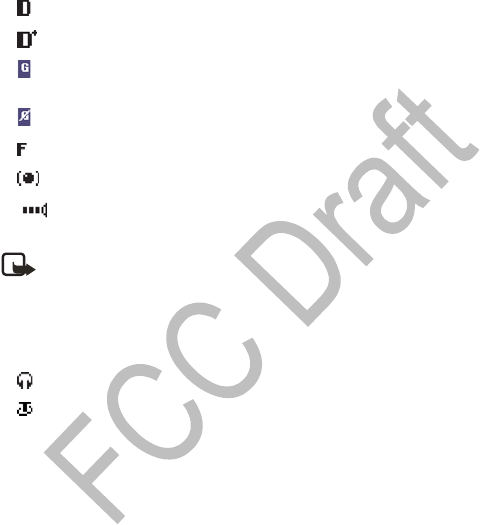
[ 15 ]
General information
DATA CONNECTION INDICATORS
When an application is establishing a data connection, one of the
indicators below blinks in the standby mode. When an indicator is shown
continuously, the connection is active.
Note: Check with your service provider for availability of
high-speed data calls.
ACCESSORY INDICATORS
The following icons indicate that an accessory is connected to your phone:
for a data call
for a high-speed data call
shown instead of the antenna symbol when there is an active
GPRS connection
for when the GPRS connection is put on hold during voice calls
for a fax call
for a Bluetooth connection
for an infrared connection
a headset is connected
a Loopset is connected
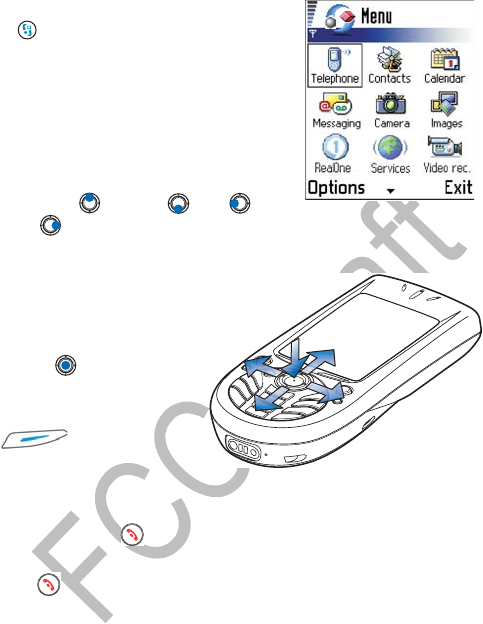
[ 16 ]
•MENU
Press (Menu key) to open the main
Menu. In the Menu, you can access all the
applications in your phone.
Options in the Menu are: Open, List view /
Grid view, Move, Move to folder, New folder,
Help, and Exit.
• Move in the Menu—Press the Scroll key
on the top , bottom , left and
right (shown with blue arrows 1 to 4)
to move in the Menu.
• Open applications or
folders—Scroll to an
application or a folder and
press the Scroll key in the
middle to open it.
• Close applications—
Backstep by pressing
Back or Exit as
many times as is needed to
return to the standby mode
or select Options→ Exit.
If you press and hold , the phone returns to the standby mode and the
application is left open in the background.
Pressing always ends a call, even if another application is active
and displayed.
When you switch the phone off, applications are closed and any unsaved
data is saved automatically.
Select Options→ List view if you want to view the applications in a list.
Use the Scroll key to move
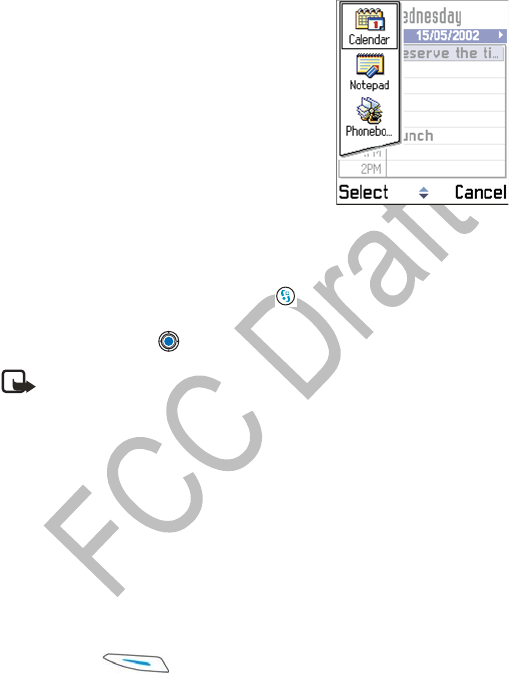
[ 17 ]
General information
Rearrange the Menu
You can rearrange the Menu in any order you
like. You can move applications that you use
more often from a folder to the Menu, and
place applications you use less often in
folders. You can also create new folders.
1Scroll to the item you want to move and
select Options→ Move. A check mark is
placed beside the application.
2Move the selection where you want the
application to be and press OK.
Switch between applications
If you have several applications open and want to switch from one
application to another press and hold (Menu key). The application
switching window opens showing a list of open applications. Scroll to an
application and press .
Note: If memory is getting low, the phone may close some
applications. The phone saves any unsaved data before an
application is closed.
• OPTIONS LISTS
In this user guide, you can see the Options list commands that tell you what
commands are available in different views and situations. The available
commands change depending on the view you are in. In some situations,
when you press the Scroll key, a shorter options list appears showing only
the main commands available in the view.
Online help
Your phone has a help function that you can access from any application
or view. Press Options→ Help to access the online help.
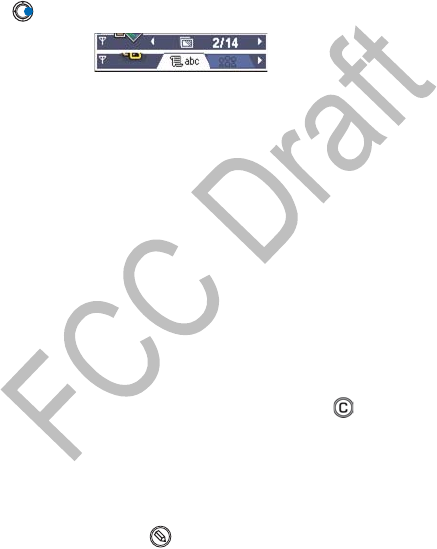
[ 18 ]
• NAVIGATION BAR
In the navigation bar, you can see:
• Small arrows or tabs which tell you if there are more views, folders,
or files you can move to.
• Editing indicators, see “Write text” on p. 78.
• Other information, for example, 2/14 in the following figure means
that the current picture is the second of 14 pictures in the folder.
Press to see the next picture.
• ACTIONS COMMON TO ALL APPLICATIONS
Open items for viewing
If you want to open an item when you are viewing a list of files or folders,
scroll to the item and press the Scroll key, or select Options→ Open.
Edit items
To open an item for editing, you sometimes need to first open it for viewing
and then select Options→ Edit, if you want to change its contents.
Rename items
To give a new name to a file or folder, scroll to it and select
Options→ Rename.
Remove, delete items
Scroll to the item and select Options→ Delete or press . To delete
many items at a time, you first need to mark them.
Mark an item
There are several ways to select items when you are in a list.
• To select one item at a time, scroll to it and select Options→ Mark/
Unmark→ Mark or press and the Scroll key at the same time.
A check mark is placed next to the item.
• To select all items in the list, select Option→ Mark/Unmark→ Mark all.
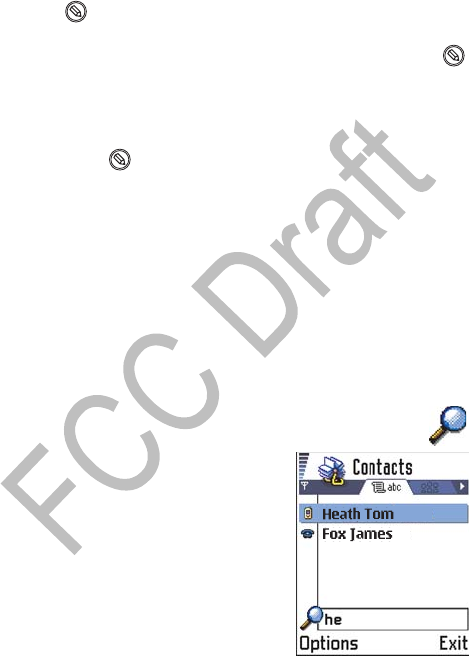
[ 19 ]
General information
For information on how to insert text and numbers, see “Write text” on
p. 78.
Mark multiple items
Press and hold and at the same time move the Scroll key down or up.
As the selection moves, a check mark is placed next to the items. To end
the selection, stop the scrolling with the Scroll key and then release .
• After you have selected all the items you want, you can move or
delete them by selecting Options→ Move to folder or Delete.
• To unmark an item, scroll to it and select Options→ Mark/Unmark→
Unmark or press and the Scroll key at the same time.
Create folders
To create a new folder, select Options→ New folder. You are asked to give
a name to the folder (max. 35 letters).
Move items to a folder
To move items to a folder or between folders, select Options→ Move to
folder (not shown if there are no folders available). When you select Move
to folder, a list of available folders opens and you can also see the root
level of the application (for moving an item out of a folder). Select the
location you want the item to be moved to and press OK.
Search for items
You can search for a name, file, folder, or
shortcut by using the search field. In some
situations the search field is not visible
automatically, and you can activate it by
selecting Options→ Find or just by starting
to key in letters.
1To search for an item, start to key in text
in the search field. The phone immediately
starts to search for matches and moves
the selection to the best match.
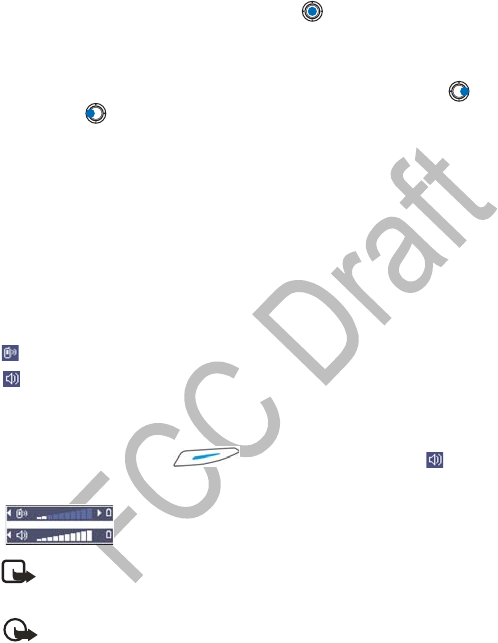
[ 20 ]
To make the search more accurate, key in more letters and the
selection moves to the item that best matches the letters.
2When the correct item is found, press to open it.
• VOLUME CONTROL
When you have an active call or are listening to a sound, press to
increase or to decrease the volume level.
•LOUDSPEAKER
Your phone has a loudspeaker for handsfree use. The loudspeaker allows
you to speak and listen to the phone from a short distance without having to
hold the phone to your ear. The loudspeaker can be used during a call, with
sound applications, and when viewing multimedia messages. RealOne Player™
uses the loudspeaker by default when you watch a video. Using the
loudspeaker makes it easier to use other applications during a call.
Voice volume icons:
—for earpiece mode.
—for loudspeaker mode.
ACTIVATE THE LOUDSPEAKER
To use the loudspeaker during an already active call, select Options→
Activate loudsp. or press Loudsp.. A tone is played, is shown
in the navigation bar, and the volume indicator changes.
Volume indicators for earpiece and loudspeaker modes
are shown in the navigation bar.
Note: The loudspeaker cannot be activated when you have a
headset connected to the phone.
Important:Do not hold the phone near your ear when the
loudspeaker is in use because the volume may be extremely loud.

[ 21 ]
General information
The loudspeaker needs to be activated separately each time for phone
calls, but the sound applications such as Composer and Recorder use the
loudspeaker by default.
TURN OFF THE LOUDSPEAKER
When you have an active call or a sound is playing, select Options→
Activate handset or press Handset.
• HEADSET
To adjust the volume level when a headset is connected to your phone,
press or or use the headset’s keys.
• SHARED MEMORY
The following features in your phone use shared memory: contacts, text,
text messages, multimedia messages, images and ringing tones, video
recorder and player, calendar and to-do notes, and downloaded applications.
Using any of these features leaves less memory for other features. This is
especially true with heavy use of any of the features. For example, saving
many images may take all of the shared memory and your phone may
display that the memory is full. In this case, delete some of the information
or entries reserving the shared memory.
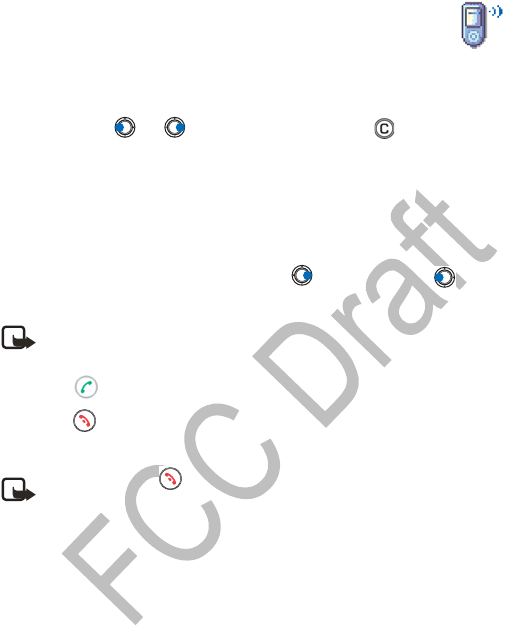
[ 22 ]
3 Your phone
• MAKE A CALL
1In the standby mode, key in the phone number, including the area
code. Press or to move the cursor. Press to remove a
number.
For international calls, press the * key twice for the international
prefix (the + character replaces the international access code) and
then key in the country code, the area code without 0, and the phone
number.
To adjust the volume during a call, press to increase and to
decrease the volume level.
Note: Calls described here as international may, in some cases, be
made between regions of the same nation.
2Press to call the number.
3Press to end the call (or to cancel the call attempt).
Normal position: Hold the phone as you would hold any other telephone.
Note: Pressing will always end a call, even if another
application is active and displayed on the display.
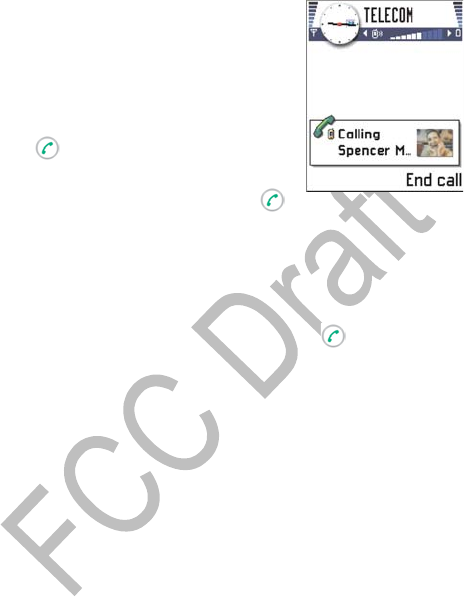
[ 23 ]
Your phone
Make a call using the Contacts directory
1To open the Contacts directory, go to
Menu→ Contacts.
2To find a contact, scroll to the desired
name, or key in the first letters of the name.
The Search field opens automatically and
matching contacts are listed.
3 Press to start the call.
If the contact has more than one phone
number, scroll to the number and press
to start the call.
Call your voice mailbox
The voice mailbox (system service) is an answering machine where callers
who are unable to reach you can leave you voice messages.
• To call your voice mailbox, press the 1 key and in the standby
mode.
• If the phone asks for the voice mailbox number, key it in and press OK.
You can obtain this number from your service provider.
See also “Settings for call forwarding” on p. 27.
Each phone line may have its own voice mailbox number, see “Line in use
(system service)” on p. 37.
If your voice mail requires you to enter a password every time you call to
listen to your voice messages, you may want to add a touch tone number
after the voice mailbox number. This way the password is given
automatically every time you call your voice mail. For example,
1234567p1234# where 1234 is the password and ‘p’ inserts a pause.
Change the voice mailbox number
To change the phone number of your voice mailbox, go to Menu→ Tools→
Voice mail and select Options→ Change number. Key in the number
(obtained from your service provider) and press OK.

[ 24 ]
1-touch dialing
To view the 1-touch dialing grid, go to Menu→ Tools→ 1-touch dial.
• Assign a phone number to one of the 1-touch dialing keys (the 2–9
keys), see “Assign 1-touch dialing keys” on p. 57.
• To call the number: In the standby mode, press the corresponding
1-touch dialing key and . If the 1-touch dialing function is set to
On, press and hold the corresponding 1-touch dialing key until the call
is started.
Make a conference call
Conference calling is a system service that allows you to make a conference
call with a maximum of six participants, including yourself.
1Make a call to the first participant.
2To make a call to a new participant, select Options→ New call.
3Key in or search the memory for the phone number of the participant
and press OK. The first call is automatically put on hold.
4When the new call has been answered, join the first participant in the
conference call. Select Options→Conference.
5To add a new person to the call, repeat step 2 and then select
Options→ Conference→ Add to conference.
• To have a private conversation with one of the participants:
Select Options→ Conference→ Private. Scroll to the desired
participant and press Private. The conference call is put on hold
in your phone, and the other participants can still continue talking
with each other while you have a private discussion with one
participant only. Once you have finished the private conversation,
select Options→ Add to conference to return to the conference call.
• To drop one participant from the conference call, select Options→
Conference→ Drop participant; then scroll to the participant and
press Drop.
6To end the active conference call, press .
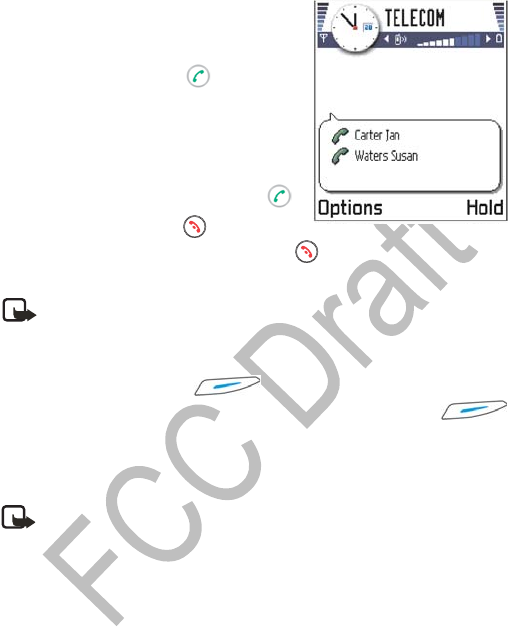
[ 25 ]
Your phone
A conference call with two participants
is shown.
The quickest way to make a new call is to
dial the number and press to start the
call. The existing call is automatically put
on hold.
• ANSWER A CALL
• To answer an incoming call, press .
• To end the call, press .
If you do not want to answer a call, press . The caller will be directed
to voice mail.
Note: If you have activated the Call forward→ If busy function to
forward calls, for example, to your voice mailbox, rejecting an
incoming call will also forward the call. See “Settings for call
forwarding” on p. 27.
When a call comes in, press Silence to quickly mute the ringing
tone. If you then want the call to be directed to voice mail, press
again for Decline.
To adjust the ringing tones for different environments and events, for
example, when you want your phone to be silent, see “Profiles” on p. 109.
Note: It is possible that the phone assigns a wrong name for the
phone number. This happens if the phone number of the caller is not
stored in Contacts but the seven last digits of the number match
another number that is stored in Contacts. In this case, call
identification is not correct.
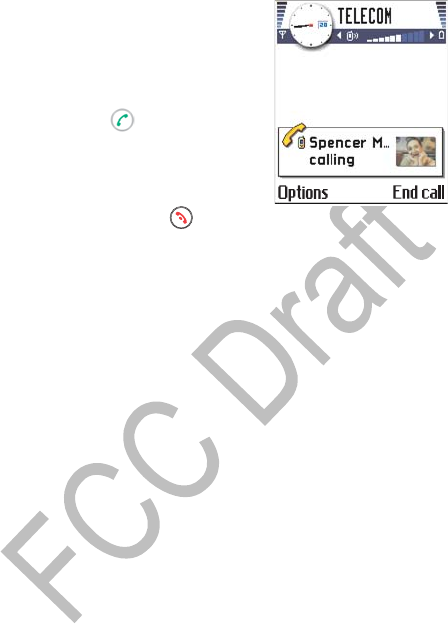
[ 26 ]
Call waiting (system service)
If you have activated the Call waiting service,
the system will notify you of a new incoming
call while you have a call in progress. See “Call
waiting (system service)” on p. 37.
1During a call, press to answer the
waiting call. The first call is put on hold.
To switch between the two calls,
press Swap.
2To end the active call, press .
To end both calls at the same time, select Options→ End all calls and
press OK.
Options during a call
Many options that you can use during a call are system services.
Press Options during a call for some of the following options:
Mute or Unmute, End active call, End all calls, Hold or Unhold, Handset,
BT handsfree, New call, Conference, Private, Drop participant, Answer,
and Decline.
Swap is used to switch between the active call and the call on hold.
Transfer is used to connect an incoming call or a call on hold with an active
call and to disconnect yourself from both calls.
Send touch tones is used to send touch tone strings, for example, passwords
or bank account numbers.
1Key in the digits with the 0–9 keys.
Each keystroke generates a touch tone, which is transmitted while the
call is active. Press the * key repeatedly to produce: *, p (inserts a pause
of about two seconds before, or between touch tone characters.), and w
(if you use this character, the remaining sequence is not sent until you
press Send again during the call). Press the # key to produce #.
2To send the tone, press OK.

[ 27 ]
Your phone
You can also store a sequence of touch tones for a contact card. When
you make a call to the contact, you can retrieve the sequence. Add touch
tones to the phone number or Touch tone fields in a contact card.
Note: Touch tones are the tones you hear when you press the
number keys on the phone keypad. Touch tones allow you to
communicate with voice mailboxes and computerized telephony
systems.
Settings for call forwarding
When call forwarding is activated, you can direct your incoming calls to
another number, for example, to your voice mailbox number. For details,
contact your service provider.
Go to Menu→ Tools→ Forward.
• Select one of the forward options, for example, select If busy to
forward voice calls when your number is busy or when you decline
incoming calls.
• Select Options→ Activate to set the forward setting on, Cancel to set
the forward setting off, or Check status to check whether the forward
is activated or not.
• To cancel all active forwards, select Options→ Cancel all forwards.
For information about the forward indicators, see “Activity indicators”
on p. 14.
Note: Rejection of incoming calls and call forwarding cannot be
active at the same time. See “Call restriction (system service)” on
p. 50.
• LOG—CALL LOG AND GENERAL LOG
Go to Menu→ Log.
In the log you can monitor phone calls, text messages, packet data
connections, and fax and data calls registered by the phone. You can
filter the log to view just one type of event and create new contact
cards based on the log information.
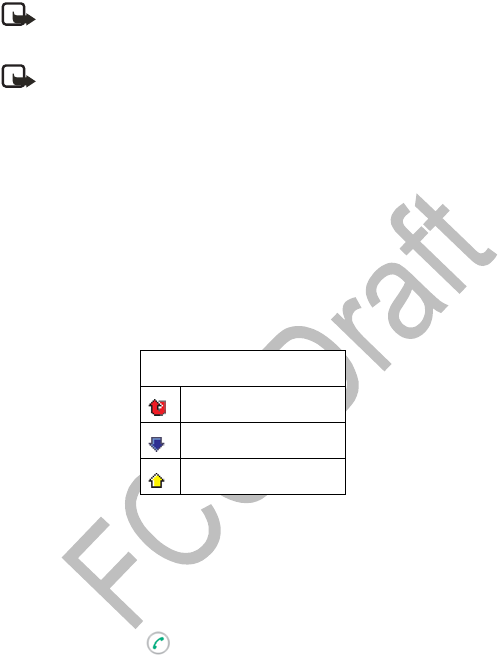
[ 28 ]
Note: The Log does not track sent messages. To view a list of sent
messages, go to Messaging→ Sent.
Note: Connections to your remote mailbox, multimedia messaging
center, or browser pages are shown as data calls or packet data
connections in the general communications log.
Recent calls log
Go to Menu→ Log→ Recent calls.
The phone registers the phone numbers of missed, received, and dialed
calls. The phone registers missed and received calls only if the system
supports these functions, and the phone is switched on and within the
system’s service area.
Options in the Missed, Received, Dialed views are: Call, Use number,
Delete, Clear list, Add to Contacts, Help, and Exit.
MISSED CALLS AND RECEIVED CALLS
To view the phone numbers of the last 20 missed calls, go to Log→ Recent
calls→ Missed calls.
When you see a note in the standby mode about missed calls, press Show
to access the list of missed calls. To call back, scroll to the number or name
you want and press .
To view a list of the 20 numbers or names from which you have most
recently accepted calls (system service), go to Log→ Recent calls→
Received calls.
Icons
for missed calls
for received calls
for dialed numbers
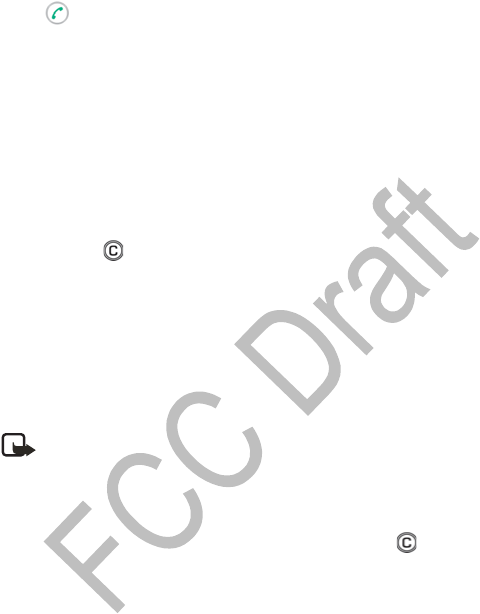
[ 29 ]
Your phone
DIALED NUMBERS
Press in the standby mode to open the Dialed numbers view.
To view the 20 phone numbers that you have most recently called or
attempted to call, go to Log→ Recent calls→ Dialed numbers.
ERASING RECENT CALL LISTS
• To clear all recent call lists, select Options→ Clear recent calls in the
Recent calls main view.
• To clear one of the call registers, open the log you want to erase and
select Options→ Clear list.
• To clear an individual event, open a log, scroll to the event,
and press .
Call timers
Go to Menu→ Log→ Call timers.
Allows you to view the duration of your incoming and outgoing calls. If
you want the call duration timer to be displayed during your active calls,
select Log→ Call timers, and then select Options→ Settings→ Show call
duration→ Yes.
Note: Some timers, including the life timer, may be reset during
service or software upgrades.
Erasing call duration timers—Select Log→ Call timers, and then select
Options→ Clear timers. For this you need the lock code. See “Security” on
p. 46. To clear an individual event, scroll to it and press .
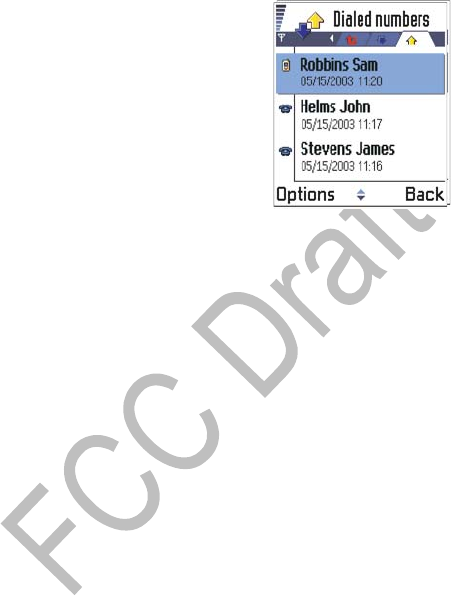
[ 30 ]
Call costs (system service)
Go to Log→ Call costs.
Call costs allows you to check the cost of
the last call or all calls. The call costs are
displayed separately for each SIM card.
The actual invoice for calls and services from
your service provider may vary, depending
upon system features, rounding-off for
billing, taxes, and so forth.
CALL COSTS LIMIT
Your service provider can limit the cost of
your calls to a certain amount of charging units or units of currency.
When the limited charging mode is active, calls can be made only as long
as the preset credit limit (call cost limit) is not exceeded and you are in a
system that supports call cost limit. The number of remaining units is
shown during a call and in the standby mode. When the charging units
have expired, the note Call cost limit reached is displayed. Contact your
service provider for information on the limited charging mode and
charging unit prices.
COST SHOWN AS CHARGING UNITS OR CURRENCY
You can set the phone to show the remaining talk-time in charging units
or units of currency. For this, you may need the PIN2 code. See “Security”
on p. 46.
1Select Options→ Settings→ Show costs in. The options are Currency
and Units.
2If you choose Currency, a note requesting you to write the unit price
is shown. Key in the cost of your home system charging or credit unit
and press OK.
3Write a name for the currency. Use a three-letter abbreviation, for
example, USD.

[ 31 ]
Your phone
Note: When no more charging units or currency units are left, calls
may only be possible to the emergency number programmed into
your phone (such as 911 or other official emergency numbers).
SET A CALL COST LIMIT
1Select Options→ Settings→ Call cost limit→ On.
2The phone requests you to enter the limit in units. For this you may
need the PIN2 code. Depending on the Show costs in setting, enter
either the amount of charging units or currency.
When the charging limit you have set yourself is reached, the counter
stops at its maximum value and the note Reset all calls’ cost counter is
displayed. To be able to make calls, go to Options→ Settings→ Call cost
limit→ Off. For this you need the PIN2 code. See “Security” on p. 46.
Note: The actual invoice for calls and services from your service
provider may vary, depending upon system features, rounding-off for
billing, taxes and so forth.
ERASE CALL COST COUNTERS
Select Options→ Clear counters. For this you need the PIN2 code. To clear
an individual event, scroll to it and press .
GPRS data counter
Go to Log→ GPRS counter.
Allows you to check the amount of data sent and received during packet
data (GPRS) connections. Check with your service provider for information
on how you will be charged.
View the general log
Go to Menu→ Log and press .
In the general log, for each communication event, you can see the
sender or recipient name, phone number, name of the service provider,
or access point.
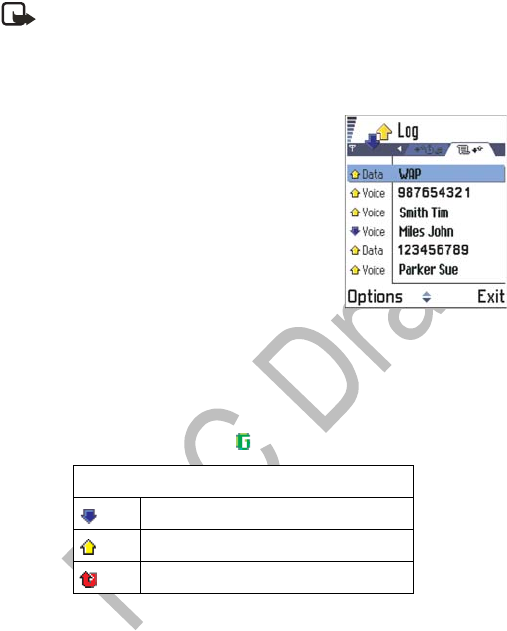
[ 32 ]
Note: Sub-events, such as a text message sent in more than one
part and packet data connections, are logged as one
communication event.
FILTER THE LOG
1Select Options→ Filter. A list of
filters opens.
2Scroll to a filter and press Select.
You cannot get to the Filter option unless
there are already calls in the log.
ERASE THE CONTENTS OF THE LOG
To permanently erase all the log contents,
recent calls log, and messaging delivery
reports permanently, select Options→ Clear
log. Confirm by pressing OK.
PACKET DATA COUNTER AND CONNECTION TIMER
To view how much data, measured in kilobytes, has been transferred and how
long a certain GPRS connection has lasted, scroll to an Incoming or Outgoing
event with the access point icon and select Options→ View details.
Icons
for incoming
for outgoing
for missed communication events
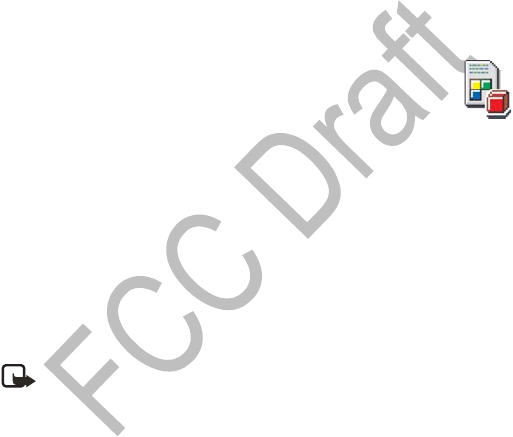
[ 33 ]
Your phone
LOG SETTINGS
Select Options→ Settings. The list of settings opens.
•Log duration—The log events remain in the phone memory for a set
number of days after which they are automatically erased to free
memory.
If you select No log, all the log contents, Recent calls log, and
Messaging delivery reports are permanently deleted.
•For Call duration, Show costs in, Call cost limit, see “Call timers” on
p. 29 and “Call costs (system service)” on p. 30.
• SIM FOLDER
Go to Menu→ SIM.
Your SIM card may provide additional services that you can
access in this folder. See also “Copy between SIM card and phone
memory” on p. 52, “Confirm SIM service actions” on p. 48, “Fixed dialing”
on p. 47, and “View messages on a SIM card” on p. 101.
In the SIM directory, you can see the names and numbers stored on the
SIM card, you can add or edit them, and you can make calls. To view the
SIM directory, go to Go to Menu→ SIM→ SIM direct.
Options in the SIM directory are: Open, Call, New SIM Contact, Edit,
Delete, Mark/Unmark, Copy to Contacts, Own numbers, SIM details, Help,
and Exit.
Note: For availability, rates and information on using SIM services,
contact your SIM card vendor, e.g. system operator, service
provider, or other vendor.
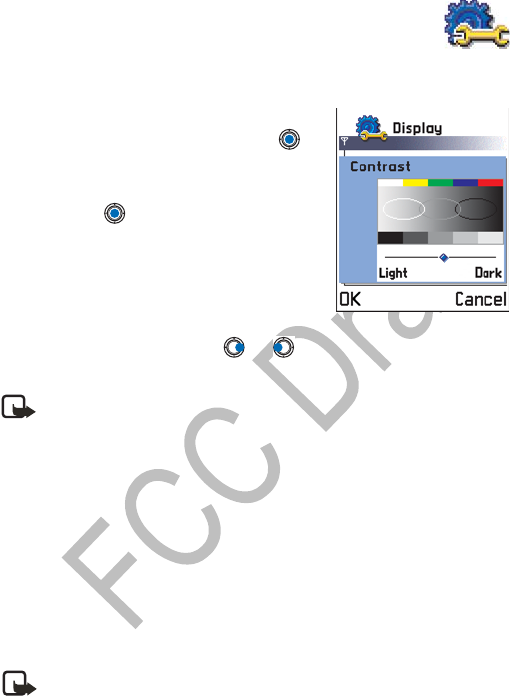
[ 34 ]
4 Settings
• CHANGE GENERAL SETTINGS
Go to Menu→ Tools→ Settings.
1Scroll to a setting group and press
to open it.
2Scroll to a setting you want to change
and press to
• switch between options if there are
only two (On/Off).
• open a list of options or an editor.
• open a settings slider such as the
Contrast setting. Press or
to increase or decrease the value.
Note: You may be able to receive some settings from your service
provider in a text message.
• PHONE SETTINGS
General
Phone language—You can change the language for the display texts in
your phone. This change will also affect the format used for date and time
and the separators used, for example, in calculations. There are three
languages installed in your phone. If you select Automatic, the phone
selects the language according to the information on your SIM card. After
you have changed the display text language, you must restart the phone.
Note: Changing the settings for Phone language or Writing
language affects every application in your phone and the change
remains effective until you change these settings again.
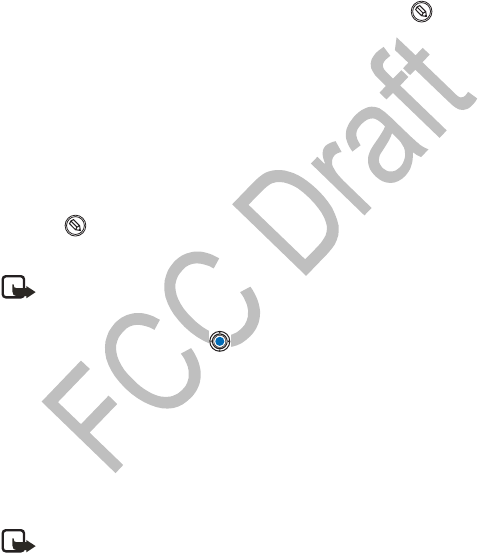
[ 35 ]
Settings
Writing language—You can change the writing language of your phone
permanently. Changing the language affects:
• The characters available when you press any key (1–9).
• The predictive text dictionary used.
• The special characters that are available when you press the * and the
1 keys.
You can also make this change in some of the editors. Press and select
Writing language.
Example: You are using a phone where the display texts are in English but
you want to write all your messages in French. After you change the
language, the predictive text dictionary searches for words in French and
the most common special characters or punctuation marks used in the
French language are available when you press the * and 1 keys.
Predictive text—Sets the predictive text input On or Off for all editors in
the phone. You can also change this setting when you are in an editor by
pressing and selecting Predictive text→ Predictive text on or
Predictive text→ Off.
Note: The predictive text dictionary is not available for all
languages.
Welcome note or logo—Press to open the setting. The welcome note
or logo is displayed briefly each time you switch on the phone. Select
Default if you want to use the default image or animation. Select Text to
write a welcome note (max. 50 letters). Select Image to select a photo or
picture from Images.
Orig. phone settings—You can reset some of the settings to their original
values. To do this, you need the lock code. After resetting the settings, the
phone may take a longer time to power on.
Note: All documents and files that you have created are left as
they are.
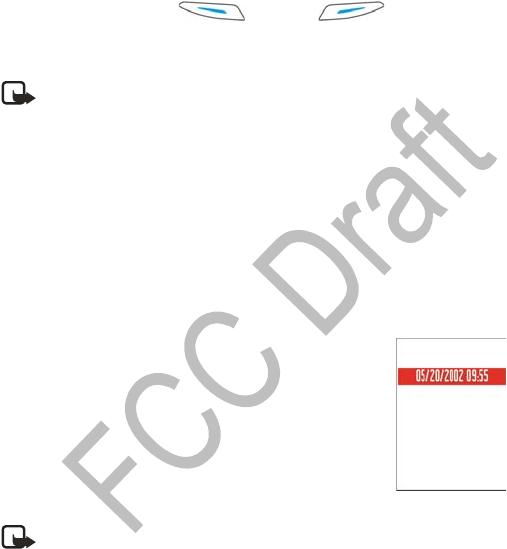
[ 36 ]
Standby mode
Background image—You can select any image to be used as a background
image in the standby mode. Select Yes to select an image from Images.
Left selection key and Right selection key—You can change the shortcuts
that appear over the left and right selection keys in
the standby mode. In addition to the applications, you can have the
shortcut point to a function, for example, New message.
Note: You cannot have a shortcut to an application that you have
installed.
Display
Contrast—To change the contrast of the display to lighter or darker.
Color palette—To change the color palette used on the display.
Screen saver timeout—The screen saver is activated when the screen saver
time-out period is over. When the screen saver is active, the display is
cleared and you can see the screen saver bar.
To deactivate the screen saver press any key.
Screen saver—Select what is shown on the screen
saver bar: time and date or a text you have written
yourself. The location and background color
of the screen saver bar changes in one minute
intervals. Also, the screen saver changes to indicate the
number of new messages or missed calls.
• CALL SETTINGS
Note: To change the settings for call forwarding, see “Settings for
call forwarding” on p. 27.
Send my caller ID
This system service allows you to set your phone number to be displayed
(Yes) or hidden (No) from the person to whom you are calling. Or, the value
may be set by your service provider when you make a subscription (default).

[ 37 ]
Settings
Call waiting (system service)
The system will notify you of a new incoming call while you have a call
in progress. Select Activate to request the system to activate call waiting,
Cancel to request the system to deactivate call waiting, or Check status
to check if the function is active or not.
Automatic redial
When this setting is activated, your phone will make a maximum of ten
attempts to connect the call after an unsuccessful call attempt.
Press to stop automatic redialing.
Summary after call
Activate this setting if you want the phone to briefly display the duration
and cost of the last call. To show costs, the Call cost limit must be activated
for your SIM card.
1-touch dialing
Select On, and the numbers assigned to the 1-touch dialing keys (2–9)
can be dialed by pressing and holding the key.
Anykey answer
Select On, and you can answer an incoming call by briefly pressing any
key except , , and .
Line in use (system service)
This setting is shown only if the SIM card supports two subscriber
numbers, that is, two phone lines. Select which phone line (Line 1 or
Line 2) you want to use for making calls and sending text messages. Calls
on both lines can be answered irrespective of the selected line.
Note: You will not be able to make calls if you select Line 2 and
have not subscribed to this system service.
To prevent line selection, select Line change→ Disable if supported by
your SIM card. To change this setting, you need the PIN2 code.
To switch between the phone lines, press and hold the # key in the
standby mode.
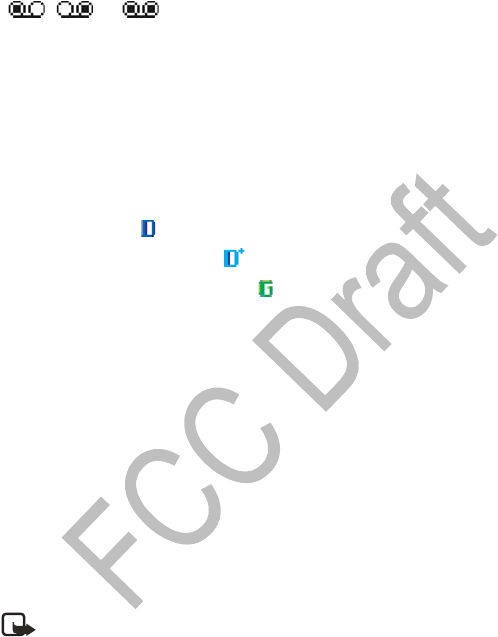
[ 38 ]
Voice message indicators:
, , or is shown if you have one or more voice messages.
• CONNECTION SETTINGS
Data connections and access points
To define settings for access points, go to Settings→ Connection
settings→ Access points.
A data connection is required to connect to an access point. Your phone
supports three kinds of data connections:
• GSM data call ( )
• GSM high-speed data call ( )
• Packet data (GPRS) connection ( )
There are three different kinds of access points that you can define: MMS
access point, browser access point, and Internet access point (IAP). Check
with your service provider for the kind of access point needed for the service
you wish to access. You need to define access point settings, if you want to
perform the following actions:
• Send and receive multimedia messages
• Send and receive e-mail
• Browse pages
• Download Java applications
• Use Image upload
• Use your phone as a modem
Note: Access point—The point where your phone connects to the
Internet by way of a data call or packet data connection. An access
point can be provided, for example, by a commercial Internet
service provider (ISP), or service provider. For more information, see
“Access points” on p. 40.
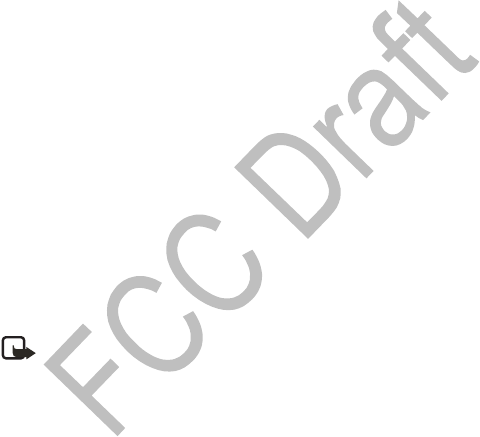
[ 39 ]
Settings
GSM DATA CALLS
A GSM data call enables data transmission rates to a maximum of
14.4 kb/s. For availability and subscription to data services, contact
your service provider.
Minimum settings needed to make a data call
To insert a set of basic GSM data call settings, go to Settings→ Connection→
Access points and select Options→ New access point. Fill in the following:
• Data bearer: GSM data
• Dial-up number: User defined
• Session mode: Permanent
• Data call type: Analog
• Maximum data speed: Automatic
See “Access points” on p. 40 for further information on how to create,
delete, and edit an access point.
High-speed data call (High-Speed Circuit Switched Data, HSCSD)
High-speed data enables data transmission rates to a maximum of 43.2
kb/s, which is three times faster than the standard data rates of the GSM
system. HSCSD is comparable to the speed of many computer modems
that communicate with today’s fixed telephone systems.
For availability and subscription to high-speed data services, please
contact your service provider.
Note: Sending data in HSCSD mode may drain the phone’s battery
faster than normal voice or data calls, as the phone may send data
more frequently to the system.
The Settings wizard program included in the PC Suite can help you
configure access point and mailbox settings. You can also copy existing
settings, for example, from your computer to your phone. See the CD-
ROM supplied in the sales package.
GPRS PACKET DATA
Packet data, or General Packet Radio Service (GPRS), uses packet data
technology where information is sent in short bursts of data over the
mobile system. The benefit of sending data in packets is that the system
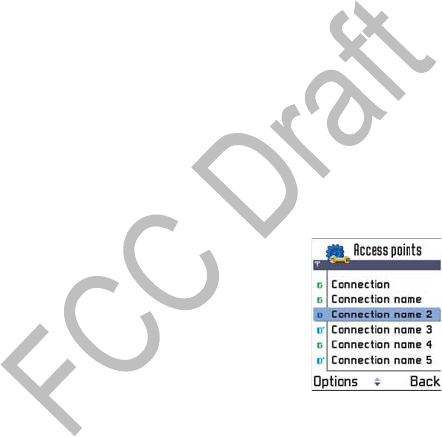
[ 40 ]
is occupied only when sending or receiving data. Because GPRS uses the
system efficiently, it allows for quick data connection set up and fast data
transmission speeds.
Minimum settings needed to make a packet data connection
• You need to subscribe to the GPRS service. For availability and
subscription to GPRS, contact your service provider.
•Go to Settings→ Connection settings→ Access points and select
Options→ New access point. Fill in the following: Data bearer: GPRS
and Access point name: enter the name given to you by your service
provider. See “Create an access point” on p. 40 for further information.
Pricing for packet data and applications
Both the active GPRS connection and the applications used over GPRS
require a fee (for example, using services, sending and receiving data, and
text messages). For more detailed information on fees, contact your
service provider.
• ACCESS POINTS
Create an access point
Options in the Access points list are: Edit,
New access point, Delete, Help, and Exit.
You may have preset access point settings in
your Nokia mobile phone. Or, you may receive
access point settings in a smart message from
a service provider.
If no access points are defined when you open Access points, you will be
asked if you want to create one.
If access points are defined, to create a new access point, select
Options→ New access point and select:
•Use default settings to use the default settings. Make the needed
changes and press Back to save the settings.

[ 41 ]
Settings
•Use existing settings to use existing setting information as the basis
for the new access point settings. A list of existing access points is
opened. Select one and press OK. Access point settings are opened
with some fields already filled.
Delete an access point
In the list of access points, scroll to the access point you want to remove
and select Options→ Delete.
Edit an access point
When you open Access points, the list of already available access points
opens. Scroll to the access point you want to edit, and press .
Options when editing access point settings are: Change, Advanced
settings, Help, and Exit.
Here you can see a short explanation for every setting that may be needed
for different data connections and access points.
Note: Start entering settings on Connection name and go down
the list from there because depending on which data connection
you select (Data bearer) or whether you need to insert a Gateway
IP address, only certain setting fields are available.
Note: Follow the instructions given to you by your service provider
very carefully.
Connection name—Give a descriptive name for the connection.
Data bearer—The options are GSM data, High speed GSM, and GPRS.
Depending on what data connection you select, only certain setting fields
are available. Fill in all fields marked with Must be defined, or marked
with a red asterisk. Other fields can be left empty, unless you have been
instructed otherwise by your service provider.
See also “Settings for multimedia messages” on p. 103, “Settings for e-
mail” on p. 105, and “Phone browser service settings” on p. 129.
Note: To use a data connection, the system service provider must
support this feature, and if necessary, activate it for your SIM card.

[ 42 ]
Access point name (for packet data only)—The access point name is
needed to establish a connection to the GPRS system. You obtain the
access point name from your service provider.
Dial-up number (for GSM data and high-speed data only)—The modem
telephone number of the access point.
User name—Write a user name if required by the service provider. The user
name may be needed to make a data connection, and is usually provided
by the service provider. The user name is often case-sensitive.
When you are writing, press the * key to open the special characters table.
Press the 0 key to enter a space.
Prompt password—If you must key in a new password every time you log
on to a server, or if you do not want to save your password to the phone,
choose Yes.
Password—A password may be needed to make a data connection, and is
usually provided by the service provider. The password is often case-
sensitive. When you are writing the password, the characters you enter
are shown briefly and then changed to asterisks (*). The easiest way to
enter numbers is to press and select Insert number and then continue
entering letters.
Authentication—Normal / Secure.
Gateway IP address—The IP address used by required browser gateway.
Homepage—Depending on what you are setting up, enter one of
the following:
• the service address
• the address of the multimedia messaging center
Note: ISDN connections are a way to establish a data call between
your phone and your access point. ISDN connections are digital
from end to end and as such offer quicker set-up times and faster
data rates than analog connections. In order to use an ISDN
connection, both your service provider and your Internet service
provider must support it.
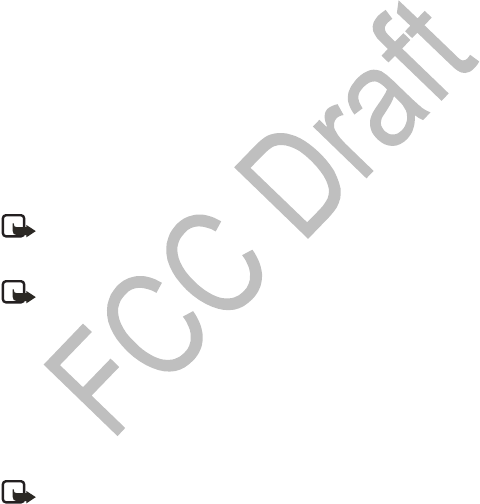
[ 43 ]
Settings
Connection security—Choose whether Transport Layer Security (TLS) is
used for the connection. Follow the instructions from your
service provider.
Session mode—Permanent / Temporary.
Data call type (for GSM data and high-speed data only)—Analog, ISDN
v.110, or ISDN v.120 defines whether the phone uses an analog or digital
connection. This setting depends on both your GSM service provider and
Internet Service Provider (ISP), because some GSM systems do not support
certain types of ISDN connections. For details, contact your ISP. If ISDN
connections are available, they establish connections more quickly than
analog methods.
Maximum data speed (for GSM data and high-speed data only)—The
options are Automatic / 9600 / 14400 / 19200 / 28800 / 38400 / 43200,
depending on what you have chosen in Session mode and Data call type.
This option allows you to limit the maximum connection speed when
high-speed data is used. Higher data rates may cost more, depending on
the system service provider.
Note: The speeds above represent the maximum speed at which
your connection will operate. During the connection, the operating
speed may be less, depending on system conditions.
Note: DNS—Domain Name Service. An Internet service that
translates domain names such as www.nokia.com into IP addresses
like 192.100.124.195.
Options→ Advanced settings
Phone IP address—The IP address of your phone.
Primary name server—The IP address of the primary DNS server.
Second name server—The IP address of the secondary DNS server.
Note: If you need to enter the Phone IP address, Primary name
server, or Second name server, contact your Internet service
provider to obtain these addresses.

[ 44 ]
The following settings are shown if you have selected data call and high-
speed data as the connection type:
Use callback—This option allows a server to call you back once you have
made the initial call, so you have a connection without paying for the call.
Contact your service provider to subscribe to this service.
Note: Charges may apply for certain types of received calls, such
as roaming and high-speed data calls. Contact your GSM service
provider for more information.
Note: The phone expects the callback call to use the same data call
settings that were used in the callback-requesting call. The system
must support this type of call in both directions, to and from the
phone.
Callback type—The options are Use server no. / Use other no. Ask your
service provider for the correct setting; it will depend on the service
provider’s configuration.
Callback number—Key in your phone’s data phone number which the dial
back server uses. Usually, this number is the data call phone number of
your phone.
Use PPP compression—When set to Yes, this option speeds up the data
transfer, if supported by the remote PPP server. If you have problems with
establishing a connection, try setting this to No. Contact your service
provider for guidance.
Note: PPP (Point-to-Point Protocol)—a common networking
software protocol that enables any computer with a modem and a
phone line to connect directly to the Internet.
Use login script—The options are Yes / No.
Login script—Insert the login script.
Modem initialization—(Modem initialization string)—Controls your phone
using modem AT commands. If required, enter characters specified by your
GSM system service provider or Internet service provider.
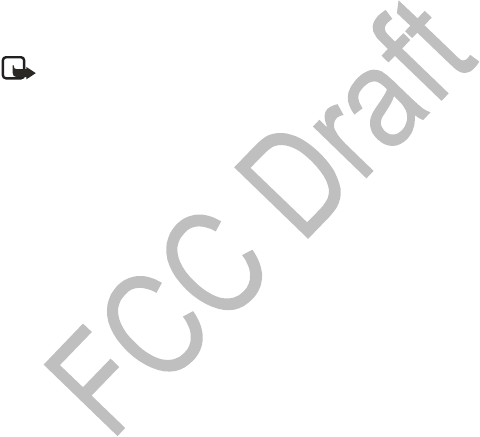
[ 45 ]
Settings
GPRS
Go to Settings→ Connection settings→ GPRS.
The GPRS settings affect all access points using a packet data connection.
GPRS connection—If you select When available and you are in a system
that supports packet data, the phone registers to the GPRS system and
sending text messages will be done using GPRS. Also, starting an active
packet data connection, for example, to send and receive e-mail, is
quicker. If you select When needed, the phone will use a packet data
connection only if you start an application or action that needs it.
The GPRS connection is closed after it is not used by any application.
Note: If there is no GPRS coverage and you have chosen When
available, the phone will periodically try to establish a packet data
connection.
Access point—The access point name is needed when you want to use
your phone as a packet data modem to your computer.
Data call
Go to Settings→ Connection settings→ Data call.
The Data call settings affect all access points using a data call and
high-speed data call.
Online time—If there are no actions the data call is dropped automatically
after a time-out period. The options are User defined, in which case you
enter a time, or Unlimited.
• DATE AND TIME
The date and time settings allow you to define the date and time used in
your phone, as well as change the date and time format and separators.
Choose Clock type→ Analog or Digital to change the clock shown in the
standby mode. Choose Auto time update if you want the mobile phone
system to update time, date, and time zone information to your phone
(system service).

[ 46 ]
For the Auto time update setting to take effect, the phone needs to
be restarted.
• SECURITY
Phone and SIM
Explanations for the different security codes that may be needed:
•PIN code (4 to 8 digits)—The PIN (Personal Identification Number)
code protects your SIM card against unauthorized use. The PIN code
is usually supplied with the SIM card. After three consecutive incorrect
PIN code entries, the PIN code is blocked. If the PIN code is blocked,
you need to unblock the PIN code before you can use the SIM card
again. See the information about the PUK code.
•PIN2 code (4 to 8 digits)—The PIN2 code, supplied with some SIM
cards, is required to access some functions, such as call cost counters.
•Lock code (5 digits)—The lock code can be used to lock the phone
and keypad to avoid unauthorized use.
Note: The factory setting for the lock code is 12345. To avoid
unauthorized use of your phone, change the lock code. Keep
the new code secret and in a safe place separate from your
phone.
•PUK and PUK2 codes (8 digits)—The PUK (Personal Unblocking Key)
code is required to change a blocked PIN code. The PUK2 code is
required to change a blocked PIN2 code. If the codes are not supplied
with the SIM card, contact the operator whose SIM card is in your
phone for the codes.
You can change the following codes: lock code, PIN code, and PIN2 code.
These codes can only include the numbers from 0 to 9.
Note: Avoid using access codes similar to the emergency numbers,
such as 911, to prevent accidental dialing of the emergency
number.
PIN code request—When the PIN code request is active, the code is
requested each time the phone is switched on. Note that deactivating the
PIN code request may not be allowed by some SIM cards.
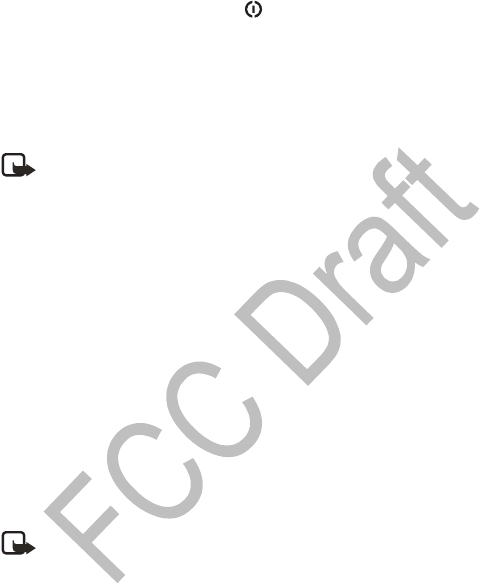
[ 47 ]
Settings
PIN code / PIN2 code / Lock code—Open this setting if you want to change
the code.
To lock the phone manually, press . A list of commands opens. Select
Lock phone.
Autolock period—You can set an autolock period, a time-out after which
the phone is automatically locked and can be used only if the correct lock
code is entered. Key in a number for the time-out in minutes or select None
to turn off the autolock period. To unlock the phone, key in the lock code.
Note: When the phone is locked, calls may be possible to the
emergency number programed into your phone (e.g. 911 or other
official emergency number).
Lock if SIM changed—Select Yes if you want the phone to ask for the lock
code when an unknown, new SIM card is inserted into your phone. The phone
maintains a list of SIM cards that are recognized as the owner’s cards.
Fixed dialing—You can restrict your outgoing calls to selected phone
numbers, if supported by your SIM card. You need the PIN2 code for this
function. When this function is active, you can only call those phone
numbers that are included in the fixed dialing list or which begin with the
same digit(s) as a phone number on the list.
To view the list of Fixed dialing numbers, go to Menu→ SIM→ Fixed dialing.
Options in the Fixed dialing view are:
Open, Call, New contact, Edit, Delete, Add to Contacts, Add from Contacts,
Help and Exit.
Note: When Fixed Dialing is set on, calls may be possible to certain
emergency numbers programmed into your phone (911 or other
official emergency numbers).
To add new numbers to the Fixed dialing list, select Options→ New
contact or Add from Contacts.
Closed user group (system service)—You can specify a group of people to
whom you can call and who can call you. For more information, contact
your service provider. Select Default to activate the default group agreed

[ 48 ]
on with the service provider, On if you want to use another group (you
need to know the group index number), or Off.
Note: When calls are limited to Closed User Groups, calls may be
possible to certain emergency numbers programmed into your
phone (911 or other official emergency numbers).
Confirm SIM services (network service)—You can set the phone to display
confirmation messages when you are using a SIM card service.
Certificate management
In the Certificate management main view, you can see a list of authority
certificates that have been stored in your phone. To manage certificates,
go to Menu→ Settings→ Security→ Certif. management. Press to
see a list of user certificates, if available.
Options in the certificate management main view are:
Certificate details, Delete, Trust settings, Mark/Unmark, Help, and Exit.
Digital certificates are used to verify the origin of browser pages and
installed software. However, they can only be trusted if the origin of the
certificate is known to be authentic.
Digital certificates are needed if you want to:
• Connect to an online bank, another site, or remote server for actions
that involve transferring confidential information.
• Minimize the risk of viruses or other malicious software and be sure
of the authenticity of software when downloading and installing
software.
Authority certificates are used by some services, such as banking services,
for checking signatures or server certificates or other authority
certificates. User certificates are issued to users by a Certifying Authority.

[ 49 ]
Settings
Important:Although the use of certificates makes the risks involved
in remote connections and software installation considerably
smaller, they must be used correctly in order to benefit from
increased security. The existence of a certificate does not offer any
protection by itself; the certificate manager must contain correct,
authentic, or trusted certificates for increased security to be
available.
VIEWING CERTIFICATE DETAILS—CHECKING AUTHENTICITY
You can only be sure of the correct identity of a browser gateway or a
server when the signature and the period of validity of a browser gateway
or server certificate have been checked.
You will be notified on the phone’s display:
• If the identity of the browser server or gateway is not authentic.
• If you do not have the correct security certificate in your phone.
To check certificate details, scroll to a certificate and select Options→
Certificate details. When you open certificate details, Certificate
management checks the validity of the certificate and one of the
following notes may appear:
•Certificate not trusted—You have not set any application to use the
certificate. For more information, see “Change the trust settings of an
authority certificate” on p. 50.
•Expired certificate—The period of validity has ended for the
selected certificate.
•Certificate not valid yet—The period of validity has not yet begun for
the selected certificate.
•Certificate corrupted—The certificate cannot be used. Contact the
certificate issuer.
Important:Certificates have a restricted lifetime. If Expired
certificate or Certificate not valid yet is shown even if the
certificate should be valid, check that the current date and time in
your phone are correct.

[ 50 ]
CHANGE THE TRUST SETTINGS OF AN AUTHORITY CERTIFICATE
Scroll to an authority certificate and select Options→ Trust settings.
Depending on the certificate, a list of the applications that can use the
selected certificate is shown. For example:
Services / Yes—the certificate is able to certify sites.
Application manager / Yes—the certificate is able to certify the origin of
new software.
Internet / Yes—the certificate is able to certify e-mail and imaging servers.
Important:Before changing these settings, you must make sure
that you really trust the owner of the certificate and that the
certificate really belongs to the listed owner.
• CALL RESTRICTION (SYSTEM SERVICE)
Call restriction allows you to restrict the making and receiving of calls
with your phone. For this function, get the restriction password from your
service provider.
1Scroll to one of the restriction options.
2Select Options→ Activate to request the system to set call restriction
on, Cancel to set the selected call restriction off, or Check status to
check if the calls are restricted or not.
• Select Options→ Edit restriction passw. to change the restriction
password.
• Select Options→ Cancel all restrictions to cancel all active
call restrictions.
Note: When calls are restricted, calls may be possible to certain
emergency numbers programmed into your phone (911 or other
official emergency numbers). Call restricting affects all calls,
including data calls. You cannot have restriction of incoming calls
and call forwarding or fixed dialing active at the same time.

[ 51 ]
Settings
•SYSTEM
System selection
Choose Automatic to set the phone to automatically search for and select
one of the cellular systems available in your area, or
Choose Manual if you want to select the desired system manually from a
list of systems. If the connection to the manually selected system is lost,
the phone will sound an error tone and ask you to select a system again.
The selected system must have a roaming agreement with your home
system, that is, the operator whose SIM card is in your phone.
Note: Roaming agreement—An agreement between two or more
system service providers to enable the users of one service provider
to use the services of other service providers.
Cell info display
Select On to set the phone to indicate when it is used in a cellular system
based on Micro Cellular Network (MCN) technology and to activate cell
info reception.
• ACCESSORY SETTINGS
Scroll to an accessory folder and open the settings:
• Select Default profile to select the profile you want to be activated
each time when you connect a certain accessory to your phone.
• Select Automatic answer to set the phone to answer an incoming call
automatically after five seconds time. If the Ringing option is set to
Beep once or Silent, automatic answer cannot be in use.
If you are using a Loopset or a Phone Adapter, you need to activate it
separately. Select Menu→ Tools→ Settings→ Accessory→ Accessory in
use→ Headset / Loopset / TTY. If you have activated a Loopset, the headset
will use the same settings as the Loopset. For more information, see
“Accessories” on p. 170.
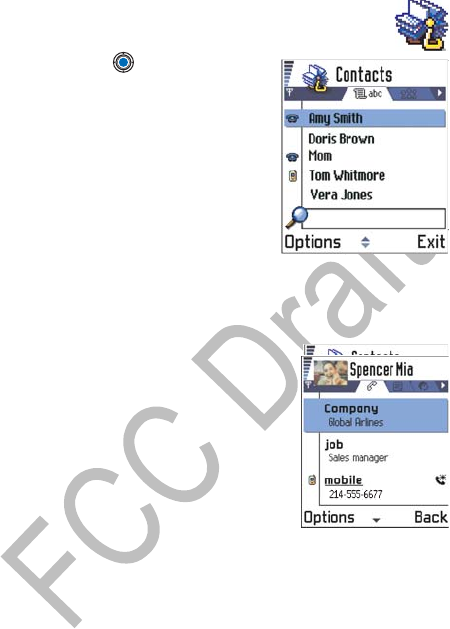
[ 52 ]
5Contacts
To open Contacts, press in the standby
mode or go to Menu→ Contacts.
In Contacts, you can store and manage contact
information, such as names, phone numbers,
and addresses. Contacts use shared memory.
See “Shared memory” on p. 21.
You can also add a personal ringing tone, voice
tag, or a thumbnail image to a contact card.
You can create contact groups, which allow
you to send text messages or e-mail to many
recipients at the same time.
• CREATE CONTACT CARDS
1Open Contacts and select Options→ New
contact. An empty contact card opens.
2Fill in the fields you want and press Done.
The contact card is saved and closed, and
appears in the Contacts directory.
• COPY BETWEEN SIM CARD AND
PHONE MEMORY
• To copy names and numbers from a SIM card to your phone, go to
Menu→ SIM→ SIM directory. Select the name(s) you want to copy
and select Options→ Copy to Contacts.
• If you want to copy a phone, fax, or pager number from Contacts to
your SIM card, go to Contacts, open a contact card, scroll to the
number, and select Options→ Copy to SIM direct.

[ 53 ]
Contacts
• EDIT CONTACT CARDS
Options in the Contacts directory are: Open, Call, Create message, New
contact, Edit, Delete, Duplicate, Add to group, Belongs to groups, Mark/
Unmark, Send business card, Contacts info, Help, and Exit.
Options when editing a contact card are:
Add thumbnail / Remove thumbnail, Add detail, Delete detail, Edit label,
Help, and Exit.
1In the Contacts directory, scroll to the contact card you want to edit
and press to open it.
2To change the information on the card, select Options→ Edit.
3To save your changes and to return to the contact card view,
press Done.
Delete contact cards
In the Contacts directory, scroll to the contact card you want to delete
and select Options→ Delete.
To delete many contact cards
1Mark the cards to be deleted. Scroll to a contact you want to delete
and select Options→ Mark. A check mark is placed next to the
contact card.
2When you have marked all the contacts you want to delete, select
Options→ Delete.
You can also mark many items if you press and hold and
simultaneously press . See also “Actions common to all applications”
on p. 18.
Add and remove contact card fields
1Open a contact card and select Options→ Edit.
2To add an extra field, select Options→ Add detail.
To delete a field you do not need, select Options→ Delete detail.
To rename a contact card field label, select Options→ Edit label.
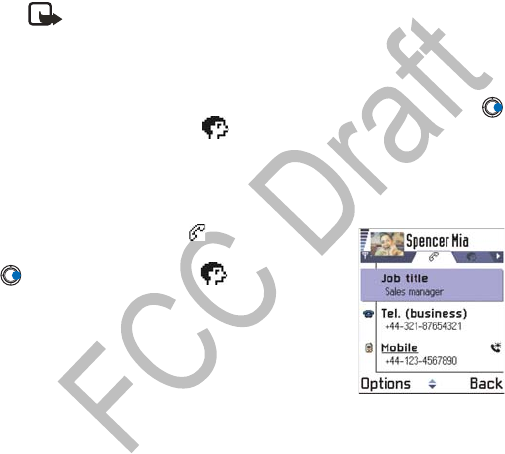
[ 54 ]
Add a picture to a contact card
There are two different types of pictures you can add to a contact card.
See “Camera and images” on p. 61 for more information on how to take
and store pictures.
• To attach a small thumbnail image to a contact card, open a contact
card, select Options→ Edit and then select Options→ Add thumbnail.
The thumbnail image is also shown when the contact is calling you.
Note: After you attach a thumbnail image to a contact card, you
can select Add thumbnail to replace the image with a different
thumbnail or Remove thumbnail to remove the thumbnail from
the contact card.
• To add an image to a contact card, open a contact card, and press
to open the image view ( ). To attach an image, select Options→
Add image.
• VIEW A CONTACT CARD
Contact information view ( ) shows all
information inserted in the contact card. Press
to open the Image view .
Only fields that have information are displayed in
the contact information view. Select Options→
Edit if you want to see all fields and add more
data to the contact.
Options when viewing a contact card (when the
selection is on a phone number) are: Call, Create message, Edit, Delete,
Defaults, Add voice tag / Voice tags, Assign 1-touch dial / Remove 1-touch
dial, Ringing tone, Copy to SIM direct., Send business card, Help, and Exit.
Assign default numbers and addresses
If a contact has several phone numbers or e-mail addresses, to speed
up calling and sending messages, you can define certain numbers and
addresses to be used as the default.

[ 55 ]
Contacts
Open a contact card and select Options→ Defaults. A pop-up window
opens, listing the different options.
Example: Scroll to Phone number and press Assign. A list of phone
numbers in the selected contact card is shown. Scroll to the one you want
to have as the default and press . When you return to the contact card
view, you can see the default number underlined.
Voice dialing
You can make a phone call by saying a voice tag that has been added to
a contact card. Any spoken word(s) can be a voice tag. Before using voice
dialing, note that:
• Voice tags are not language dependent. They are dependent on the
speaker's voice.
• Voice tags are sensitive to background noise. Record them and make
calls in a quiet environment.
• Very short names are not accepted. Use long names and avoid similar
names for different numbers.
Example: You can use a person’s name for a voice tag, for example,
“John’s cell”.
Note: You must say the name exactly as you said it when you
recorded it. This may be difficult in a noisy environment or during
an emergency, so you should not rely solely upon voice dialing in
all circumstances.
ADD A VOICE TAG TO A PHONE NUMBER
Voice tags can be any spoken words, for example, a person’s first name.
Voice tags allow you to make phone calls by simply saying the word aloud.
You can have only one voice tag per contact card. Voice tags can only be
added to phone numbers stored in phone memory. See “Copy between SIM
card and phone memory” on p. 52.
1In the Contacts directory, scroll to the contact to which you want to
add a voice tag and press to open the contact card.
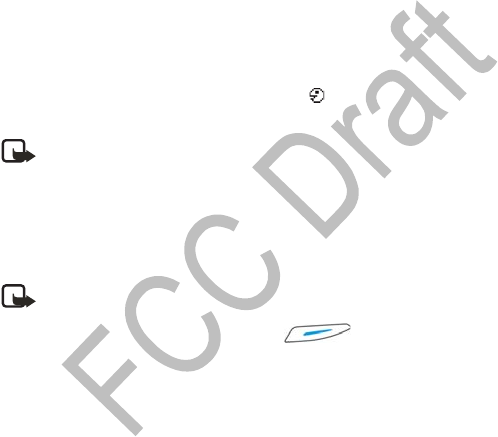
[ 56 ]
2Scroll to the number to which you want to add the voice tag and
select Options→ Add voice tag.
Press Start, then speak after tone is displayed.
3Press Start to record a voice tag. The phone sounds a starting tone
and Speak now is displayed.
When recording, hold the phone a short distance from your mouth.
After the starting tone, say clearly the word(s) you want to record as
a voice tag.
4After recording, the phone plays the recorded tag and Playing voice
tag is displayed. If you do not want to save the recording, press Quit.
5When the voice tag has been successfully saved, Voice tag saved is
displayed and a beep sounds. A symbol can be seen next to the
number in the contact card.
Note: Your phone may have 30 phone numbers to which voice tags
are attached. If the memory becomes full, delete some of the voice
tags.
To view a list of voice tags you have defined, select Options→ Contacts
info→ Voice tags in the Contacts directory.
MAKE A CALL BY SAYING A VOICE TAG
Note: You must say the voice tag exactly as you said it when you
recorded it.
1In the standby mode, press and hold . A short tone is played
and the note Speak now is displayed.
2When you are making a call by saying a voice tag, the loudspeaker is
in use. Hold the phone at a short distance away from your mouth and
face and say the voice tag clearly.
3The phone plays the original voice tag, displays the name and number,
and after 1.5 seconds dials the number of the recognized voice tag.
If the phone plays the wrong voice tag or to retry voice dialing, press Retry.
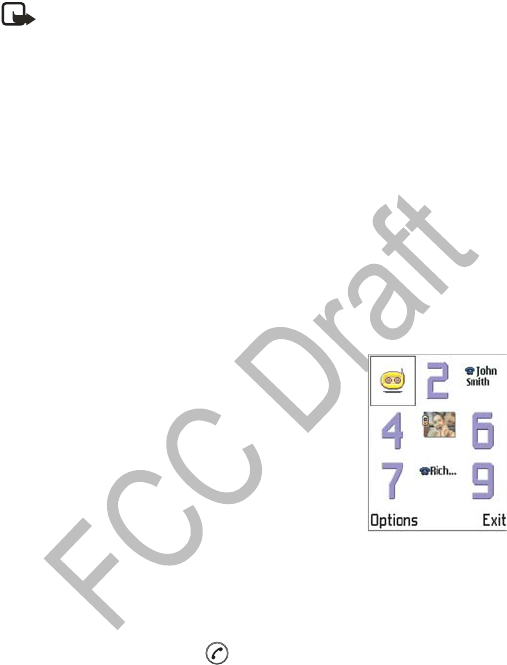
[ 57 ]
Contacts
Note: When an application using a data call or GPRS connection is
sending or receiving data, you cannot make a call by using voice
dialing. To make a call by using a voice tag, end all active data
connections.
REPLAY, ERASE, OR CHANGE A VOICE TAG
1To replay, erase, or change a voice tag, open the Contacts directory
and select Options→ Contacts info→ Voice tags.
A list of contacts with voice tags is displayed.
2Scroll to a contact, select Options, and then select one of the following:
Playback to listen to the voice tag again.
Delete to erase the voice tag.
Change to record a new voice tag instead of the old one. Press Start
to record.
Assign 1-touch dialing keys
1-touch dialing is a quick way to call frequently
used numbers. You can assign 1-touch dialing
keys to eight phone numbers. Number 1 is
reserved for the voice mailbox.
1Open the contact card for which you want a
1-touch dialing key and select Options→
Assign 1-touch no. The 1-touch dialing grid
opens, showing you the numbers from 1–9.
2Scroll to a number and press Assign. When you return to the contact
information view, you can see the 1-touch dial icon next to the number.
To call the contact by 1-touch dialing, go to the standby mode and press
the 1-touch dialing key and .

[ 58 ]
Add a ringing tone for a contact card or group
You can set a ringing tone for each contact card and group. When that
contact or group member calls you, the phone plays the chosen ringing
tone (if the caller’s telephone number is sent with the call and your phone
recognizes it).
1Press to open a contact card or go to the Groups list and select a
contact group.
2Select Options→ Ringing tone. A list of ringing tones opens.
3Use the scroll key to select the ringing tone you wish to use for the
contact or group and press Select.
To remove the ringing tone, select No personal tone from the list of
ringing tones.
Note: For an individual contact, the phone will always use the
ringing tone that was assigned last. So, if you first change a group
ringing tone and then the ringing tone of a single contact that
belongs to that group, the ringing tone of the single contact will be
used when the contact calls you the next time.
To listen to a ringing tone, go to Recorder.
Send contact information
You can send contact information through text message, e-mail,
Bluetooth connection, or infrared connection.
1In the Contacts directory, scroll to the card you want to send.
2Select Options→ Send then select the method; the choices are: Via
text message, Via e-mail (available only if the correct e-mail settings
are in place), Via Bluetooth, or Via Infrared.
For further information, see the ‘Messaging’ chapter, “Send and receive
data using infrared” on p. 151, and “Send data using Bluetooth
connection” on p. 146.
You can add received contact cards to your Contacts directory.
See “Receive smart messages” on p. 92 for further information.
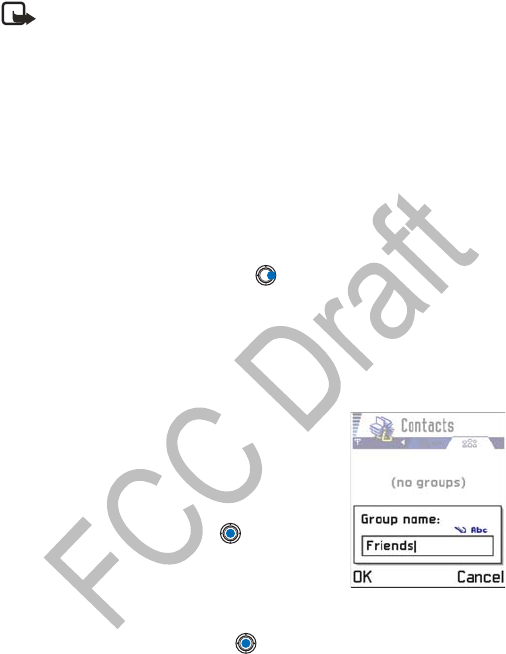
[ 59 ]
Contacts
Note: When you send or receive contact information, the term
‘business card’ is used. A business card is a contact card in a format
suitable to be sent in a text message, usually in ‘vCard’ format.
• MANAGE CONTACT GROUPS
Options in the Groups list view are: Open, New group, Delete, Rename,
Ringing tone, Contacts info, Help, and Exit.
You can create contact groups that can, for example, be used as distribution
lists for sending text messages and e-mail. See “Add a ringing tone for a
contact card or group” on p. 58.
Create contact groups
1In the Contacts directory, press to open the Groups list.
2Select Options→ New group.
3Write a name for the group or use the default name Group
and press OK.
Add members to a group
1In the Contacts directory, scroll to the
contact you want to add to a group and
select Options→ Add to group:. A list of
available groups opens.
2Scroll to the group to which you want to
add the contact and press .
ADD MULTIPLE MEMBERS AT A TIME
1In the Groups list, open a group and select
Options→ Add members.
2Scroll to a contact and press to mark it. Repeat this action on all
the contacts you want to add and press OK to add them to the
selected group.

[ 60 ]
Remove members from a group
1Go to the Groups list, scroll to the group you want to modify, and
press .
2Scroll to the contact you want to remove and select Options→
Remove from group.
3Press Yes to remove the contact from the group.
• IMPORT DATA FROM OTHER NOKIA PHONES
You can move calendar, contacts, and to-do data from many different
Nokia phones to your Nokia 3620 or Nokia 3660 using the PC Suite Data
Import application. Instructions for using the application can be found in
the PC Suite online help on the CD-ROM.
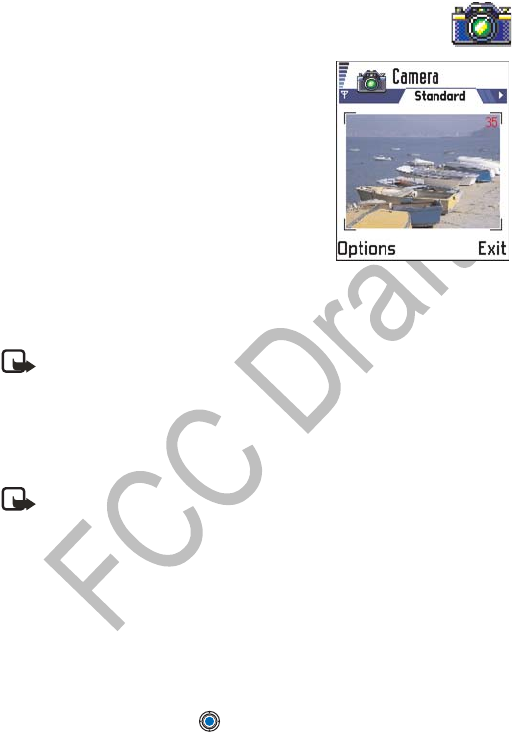
[ 61 ]
Camera and images
6 Camera and images
With the camera you can take pictures of people
or events while on the move. The pictures are
automatically saved in the Images application,
where you can rename them and organize them
in folders. You can also send photos to your
friends in a multimedia message, as an e-mail
attachment, or through a Bluetooth or infrared
connection. The camera produces JPEG pictures.
Press Camera in the standby mode or go to
Menu→ Camera.
Options before taking a picture are: Capture, Go to Images, Settings,
Help, and Exit.
Note: JPEG is a standardized image compression format. JPEG files
can be viewed with the most common image viewers, image
editors, and Internet browsers. You can recognize these files by
their *.jpg extension, for example, boats.jpg
• TAKE PICTURES
Note: Your phone must be switched on to use this function. Do not
switch the phone on when wireless phone use is prohibited or when
it may cause interference or danger.
1Press Camera in the standby mode. The Camera application opens and
you can see the view to be captured.
You can see the viewfinder and the cropping lines, which show you
the image area to be captured. You can also see the image counter,
which shows you how many images, depending on the selected image
quality, fit in the memory of your phone.
2To take a picture, press .

[ 62 ]
Note: Do not move the phone before the Camera application starts
to save the photo. The photos are saved automatically in the
Images application. The Camera goes into battery saving mode
within a minute if there have been no key presses. To continue
taking pictures, press .
After the image has been saved:
• If you do not want to save the photo in Images, select Options→ Delete.
• To return to the viewfinder to take a new picture, press .
Options after a picture has been taken are: New image, Delete, Send,
Rename image, Go to Images, Settings, Help, and Exit.
Important:Obey all local laws governing the taking of pictures. Do
not use this feature illegally.
Settings
In the Camera application settings, you can adjust the image quality
setting and change the default image name.
1Select Options→ Settings.
2Scroll to the setting you want to change:
•Image quality—High, Normal, and Basic. The better the image
quality, the more memory the image consumes. See also “Images
and memory consumption” on p. 64.
•Default image name—By default, the Camera names photos in the
JPEG format (for example, ‘Image.jpg’). Default image name
allows you to set a name for the pictures taken.
•Memory in use—Select whether you want to store your images in
the phone memory or the memory card, if you use one.
Example: If you set ‘Beach’ as the default image name, Camera will name
all the pictures you take ‘Beach’, ‘Beach(01)’, ‘Beach(02)’, and so on, until
you change the setting.
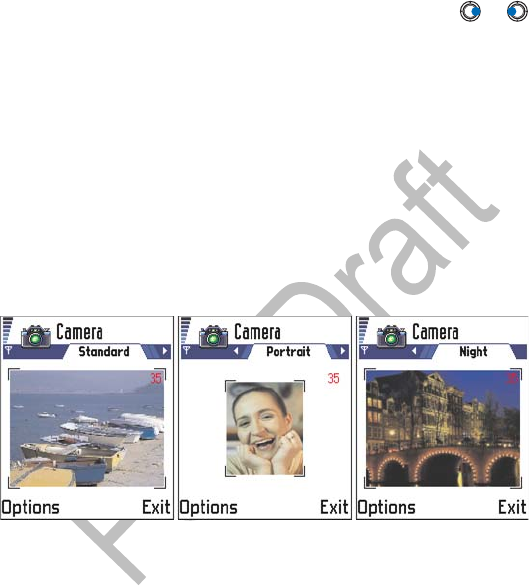
[ 63 ]
Camera and images
Camera modes
With the different Camera modes, you can affect the size and orientation
of the picture to be taken. When you are taking a picture, press or
to change between the different modes. Choose:
•Standard when you want to take normal landscape pictures.
•Portrait when you want to take a smaller icon-sized, vertical picture,
which can be added to a contact card.
•Night when the lighting is dim and the Camera needs a longer
exposure time for the picture to be of good quality. Note that, in dim
conditions, any movement while taking a picture may cause it to get
blurred. The image size and orientation is the same for Standard and
Night.
Try out the different Camera modes to see how they affect the picture
taken.
IMAGE RESOLUTIONS
• When you are taking a picture in Standard or Night mode, the
viewfinder resolution is 160x120 pixels and 80x96 for Portrait mode.
• The images taken in Standard or Night mode are saved in 640x480
pixel (VGA) format and those taken in Portrait mode are saved in
80x96 pixel format.
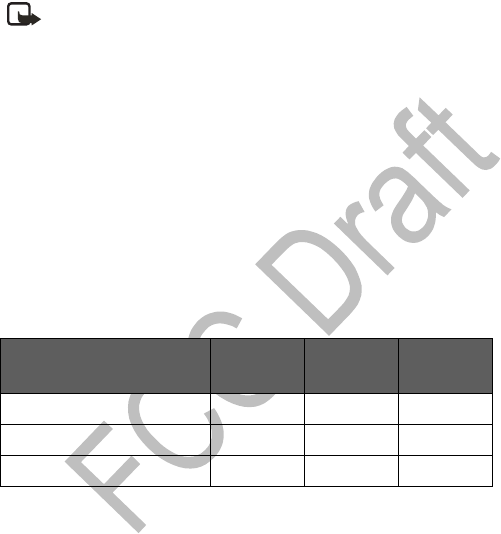
[ 64 ]
• When you are viewing images, they are scaled to fit the display, which
has 176x208 pixels. This means that Standard and Night mode pictures
will appear more detailed when viewed on a higher resolution screen,
for example, a computer or when zoomed in Images.
Note: Resolution—A measure for the sharpness and clarity of an
image. Resolution refers to the number of dots (pixels) in an image
or a display. The more pixels there are, the more detailed the
picture is. Resolution is usually measured in pixels, for example,
640x480=300 kilopixels (kpix)=0.3 megapixels (Mpix).
IMAGES AND MEMORY CONSUMPTION
Your phone has approximately 3 MB (megabytes) of free memory for
images, contact information, calendar, messages, and so on. See “Shared
memory” on p. 21. Portrait images (always taken in High quality) are so
small that they take up very little memory. Images taken using the High
quality setting and those taken in Night mode take up the most memory.
If 1 MB of memory is used for images only, it would fit approximately 22
Normal quality images taken in Standard mode. In the table below, you
can see approximately how many images would fit in 1 MB of memory.
By using a memory card with your phone you can increase the number of
images you can store. To see how much memory is available on your
phone and memory card, see “Check memory consumption” on p. 127.
Image quality
Image type Basic Normal High
Standard 55 22 15
Night 50 25 18
Portrait -->300
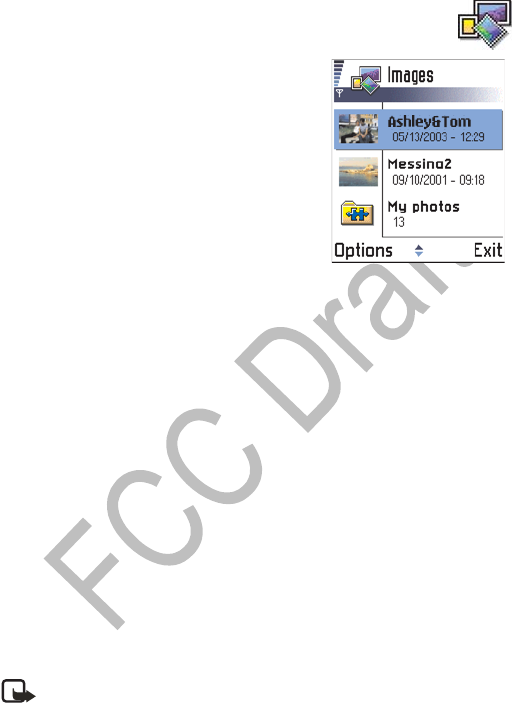
[ 65 ]
Camera and images
• STORE PICTURES IN IMAGES
Go to Menu→ Images.
Images allows you to view, organize, delete,
and send photos and pictures stored in
your phone.
In Images you can organize photos:
• Taken with the camera.
• Sent to your Inbox in a multimedia
or a picture message, as an e-mail
attachment, through an infrared or
Bluetooth connection. After receiving
the image in Inbox, you need to save it in Images.
In the Images main view, you can see a list of photos and folders.
The list shows:
• The date and time a photo or an image was taken or saved.
• A small thumbnail picture, a preview of the image.
• The number of images inside a folder.
• A tab showing whether the photos or folders are located in the
phone’s memory or the memory card, if you use one.
Options in Images are: Open, Send, Image uploader, Delete, Move to
folder, New folder, Mark/Unmark, Rename, Receive via infrared (only from
a digital camera that supports the IrTran-P protocol, otherwise use the
Infrared application, see “Send and receive data using infrared” on p. 151),
View details, Add to Favorites, Help, and Exit.
View images
Note: When you open Images and you use a memory card, the
starting tab is determined by which memory is selected as the
Memory in use.
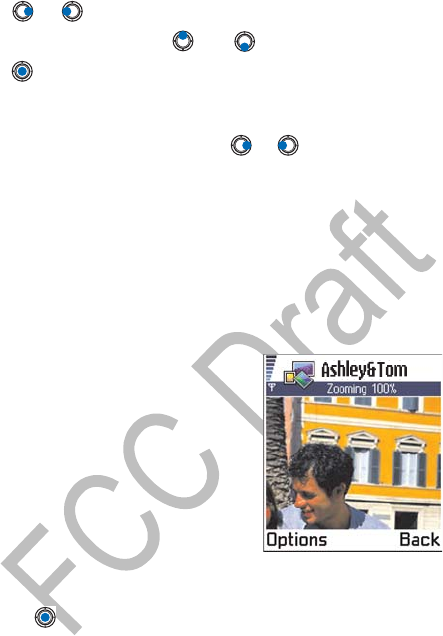
[ 66 ]
1Press or to move from one memory tab to another.
2To browse the images, press and .
3Press to open an image. When the image is open, you can see the
name of the image and the number of images in the folder on the top
of the display.
When you are viewing an image, pressing or takes you to the next
or previous picture in the current folder.
You can view animated GIF files in the same way as other images. Animations
are played only once. When an animation stops, you will see a fixed image.
To view the animation again, you must close it and then reopen it.
Options when viewing an image are: Send, Rotate, Zoom in, Zoom out,
Full screen, Delete, Rename, View details, Add to Favorites, Help, and Exit.
ZOOM IN OR ZOOM OUT
1Select Options→ Zoom in or Zoom out.
You can see the zooming ratio at the
top of the display. See also the section
‘Keyboard shortcuts’ later in this chapter.
2Press Back to return to the initial view.
The zoom ratio is not stored permanently.
You cannot zoom in on GIF animations
while they are playing.
Full screen
When you select Options→ Full screen, the
panes around the picture are removed so that you can see more of the
image. Press to go back to the initial view.
Move the focal point
When you are zooming or viewing an image in full screen mode, use the
Scroll key to move the focal point to the left, right, up, or down, so that
you can take a closer look at one part of the picture, for example, its upper
right corner.

[ 67 ]
Camera and images
Rotate
Select Options→ Rotate→ Left to rotate an image 90 degrees
counterclockwise or Right to rotate the image clockwise. The rotation
status is not stored permanently.
KEYBOARD SHORTCUTS
•Rotate: 2 key—counterclockwise, 9 key—clockwise.
• Scroll: —up, —down, —left, —right.
• Zoom: 1 key—zoom in, 0 key—zoom out. Press and hold to return to
the normal view.
• Change between full screen and normal view: the * key.
IMAGE DETAILS VIEW
To view the detailed information about an image, scroll to the image and
select Options→ View details. A list of image information appears:
Format—JPEG, GIF, PNG, TIFF, MBM, BMP, WBMP, OTA, WMF,
Unsupported, or Unknown.
Date and Time—when the image was created or saved, n x n- the size
of the image in pixels.
Resolutn.—the size of the image in pixels. See “Image resolutions”
on p. 63.
Size—in bytes or kilobytes.
Color—True color, 65536 colors, 4096 colors, 256 colors, 16 colors,
Grayscale, or Black/white.
Arrange images and folders
• To remove an image or folder, scroll to it and select Options→ Delete.
• To rename an image or a folder, scroll to the image or folder you
want to rename and select Options→ Rename. Write the new
name and press .
See “Actions common to all applications” on p. 18 for further information
on how to create folders and mark and move items to folders.

[ 68 ]
Send images
You can send photos or images by different messaging services.
1Scroll to the image you want to send and select Options→ Send.
2Then select the method. The choices are Via multimedia, Via e-mail,
Via infrared, or Via Bluetooth.
• If you select to send the image in an e-mail or a multimedia
message, an editor opens. Press to select the recipient(s) from
the Contacts directory or write the phone number or e-mail
address of the recipient in the To: field. Add text or sound and
select Options→ Send. For more information, see “Create and
send new messages” on p. 82.
• If you want to send the image by infrared or Bluetooth
connection, see “Send data using Bluetooth connection” on
p. 146, and “Send and receive data using infrared” on p. 151 for
more information.
Picture messages folder
Options in the Picture messages folder are: Open, Send, Delete, Mark/
Unmark, Rename, View details, Help, and Exit.
In the Picture messages folder, you can find graphics sent to you in
picture messages.
If you want to save a graphic you have received in a picture message, go to
Messaging→ Inbox, open the message, and select Options→ Save picture.
VIEW PICTURES
1Scroll to the picture you want to view and press . The picture
opens. Press to view the next picture in the folder.
2Press Back to return to the Pictures main view.

[ 69 ]
Video recorder
7 Video recorder
Go to Menu→ Video recorder.
Note: Obey all local laws governing the taking of videos. Do not use
this feature illegally. Your phone must be switched on to use the
Video recorder. Do not switch the phone on when wireless phone
use is prohibited or when it may cause interference or danger.
With the Video recorder you can record video clips, and play video clips
stored on your phone or on a memory card. Also, the Video recorder is
integrated with the messaging features allowing you to easily send
created clips.
Video recorder uses shared memory. See “Shared memory” on p. 21.
• RECORD A VIDEO CLIP
Note: 3GPP file format (.3gp) is the standard video file format for
Multimedia Messaging.
You can record video clips up to 95 KB in size,
or approximately 10 seconds in duration.
Recorded video clips are in the .3gp format.
1To begin recording open the Video
recorder and select Options→ Record
and you can see the view to record.
2To start recording press .
The progress bar on the bottom of the
screen shows you how much recording
time remains. To pause recording at any
time press .
To immediately play the video clip you just recorded, press .
The video clip is saved to either the phone’s memory or the memory card,
depending on the setting of your Memory in use. See “Set up your Video
recorder” on p. 70.
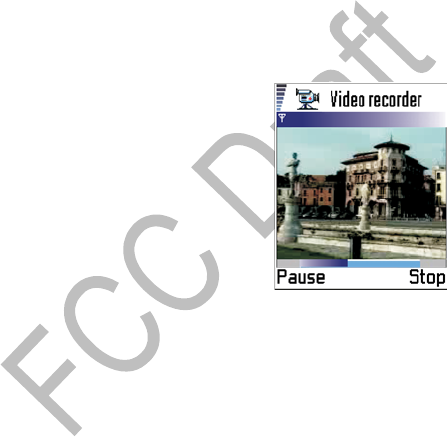
[ 70 ]
Options in video clip view of Video recorder are: Play, Record, Send,
Delete, Rename, Settings, About product, Help, and Exit.
• WATCH A VIDEO CLIP
To watch a video clip from the Video recorder video clip list:
1Open the Video recorder.
2Scroll to a video clip and select Options→ Play.
Once a video clip is playing, you have similar options available to you as
when playing a video clip in RealOne Player™. See “RealOne Player™” on
p. 71.
Send video clips
You can send video clips by using the Send
option from your video clip list.
1Scroll to the video clip you want to send
and select Options→ Send.
2Select Via multimedia, Via e-mail,
Via Bluetooth, or Via infrared.
Set up your Video recorder
You can define whether you store your video
clips in the phone’s memory or on the memory card, if you have one,
and how to name your video clips. Select Options→ Settings and one
of the following:
•Memory in use—Choose between Phone memory and Memory card.
•Default video name—Define the default name of your video clips.
Example: If you set ‘Holiday’ as the default video clip name, Video
recorder will name all the video clips you take ‘Holiday’, ‘Holiday(01)’,
‘Holiday(02)’, and so on, until you change the setting again.
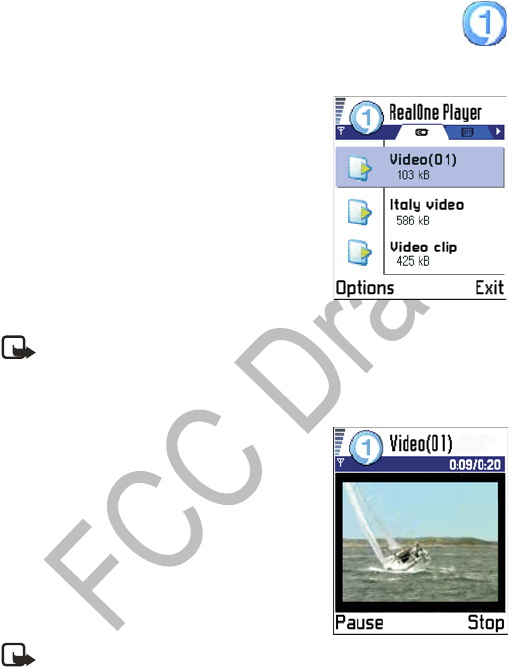
[ 71 ]
RealOne Player™
8 RealOne Player™
Go to Menu→ RealOne Player.
With the RealOne Player you can play media
files stored in the phone’s memory or on a
memory card, play music and video files, or
stream live content from the internet.
Options in list view are: Play, Open, Rename,
Delete, Move to folder, New folder, Mark/
Unmark, Send, Add to Favorites, Settings,
Help, About product, and Exit.
RealOne Player uses shared memory. See
“Shared memory” on p. 21.
Note: Streaming is playing sound or video in real time as it is
downloaded from the internet, as opposed to storing it in a local
file first.
• PLAY MEDIA FILES
You can play any music or video file from the
list shown when you start the RealOne Player,
or directly from the internet.
To play a media file stored in your phone’s
memory or memory card, open RealOne Player,
scroll to the file and select Options→ Play.
Note: Media files are video, music or
audio clips that you can play on a media player like the RealOne
Player. Files with extensions .3gp, .amr, .rm, .ram, .ra, and .rv are
supported by the RealOne Player.
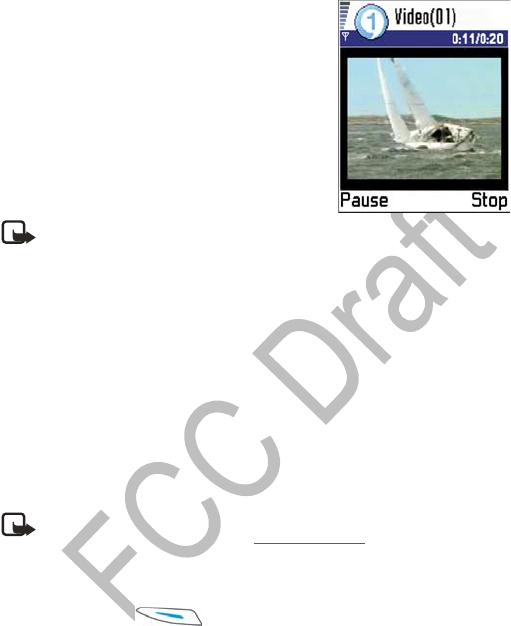
[ 72 ]
To play a media file directly from the internet:
1Select Options→ Open→ URL address.
2Enter the URL of the site from which you
want to play or stream content.
Before your media file or stream begins playing,
your phone will connect to the site and load
the file.
Note: Buffering is the temporary
storage of a part of your streaming content into the phone’s
memory before it is played.
Media guide
You can open a browser page that allows you to access a media guide
with links to streaming media sites and files.
To stream from the Internet:
1Configure your RealOne Player default access point (see “Default
Access Point setting”, p. 74).
2From the main Menu, open Services (XHTML browser).
3In the Bookmarks view, open the Mobile Media Guide bookmark.
Note: In the RealOne Player, you can only open an rstp://url
address. You cannot open an http://url address.
4Find a link to a streaming site that interests you, and select the link.
If you are not connected to the server, you will be prompted to
connect. Press Yes.
Your streaming session begins.·
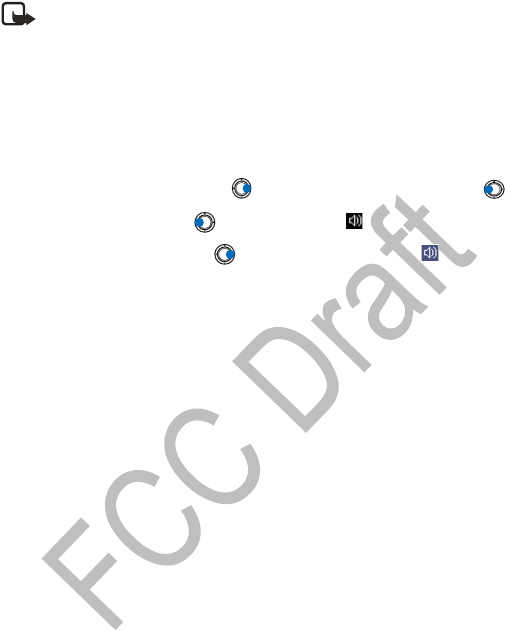
[ 73 ]
RealOne Player™
Note: You cannot stream from a site unless you have correctly
configured an Access Point in RealOne Player, see “Default Access
Point setting”, p. 74. Many service providers require you to use an
Internet Access Point (IAP) for your Default Access Point in
RealOne Player. Other service providers allow you to use a WAP
access point. Contact your service provider for advice and
availability.
Volume control
• To increase the volume press , or to decrease the volume press .
• To mute the sound press and hold until the indicator is displayed.
• To turn on the sound press and hold until you see the indicator.
• SEND MEDIA FILES
You can send media files by using the Send option from your video clip list.
1Scroll to the file you want to send and select Options→ Send.
2Select Via infrared, Via Bluetooth, Via multimedia or Via e-mail.
• CHANGE THE SETTINGS
To change the Video settings, select Options→ Video to open the
following list of settings:
•Video quality—Choose Sharp images to have better picture quality,
but slower framerate, or High framerate for faster framerate, but
lower picture quality.
•Automatic scaling—Choose On to have automatic resizing of the
video image.
To change the Playback settings, select Options→ Playback to open the
following setting:
•Repeat—Choose On to have the playing video or audio file restart
automatically once it has finished.
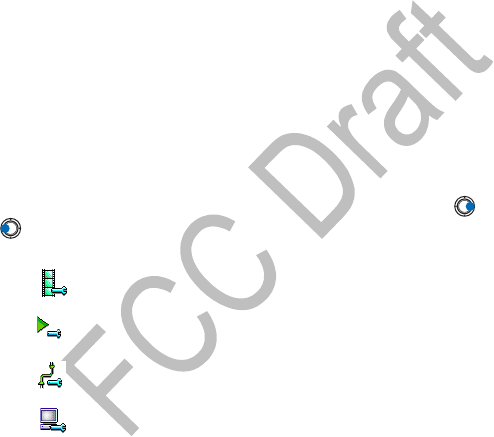
[ 74 ]
To change the Network settings, select Options→ Network to open the
following list of settings:
•Default Access Point—As defined in Connection settings, see “Access
points” on p. 40.
•Bandwidth—Choose Automatic to have the best delivery rate available.
•Maximum bandwidth—Choose the maximum bandwidth for streaming
content.
•Connection time-out—Open the slider view to change the waiting
time for the initial server connection on a streaming session.
•Server time-out—Open the slider view to change the time allowed for
no response from the server.
•Highest Port and Lowest Port—Enter the port numbers for streaming.
If you are not sure of the numbers, contact your service provider.
To change the Proxy settings, select Options→ Proxy→ Use Proxy / Host
address / Port.
When you select one of the settings, a tab view is opened. Press or
to move between the different setting tabs. The following icons
indicate which setting you are in:
for Video
for Playback
for Network
for Proxy
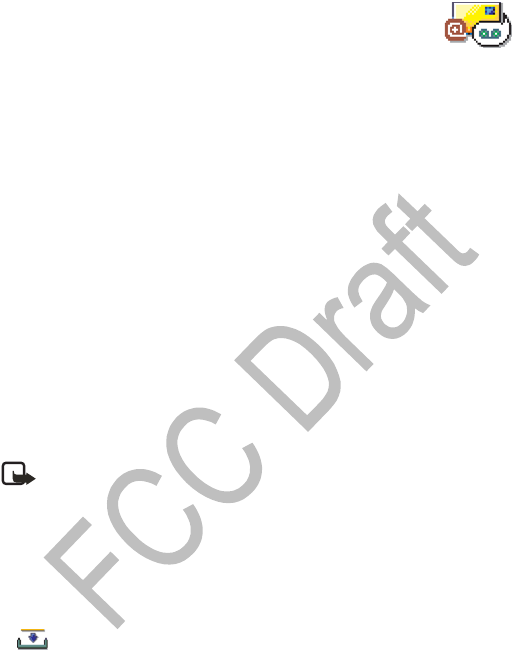
[ 75 ]
Messaging
9 Messaging
Go to Menu→ Messaging.
Options in the Messaging main view: Create message, Connect (shown if
you have defined settings for the mailbox), or Disconnect (shown if there
is an active connection to mailbox), SIM messages, Cell broadcast, Service
command, Settings, Help, and Exit.
In Messaging you can create, send, receive, view, edit, and organize:
• text messages
• multimedia messages
• e-mail messages
• smart messages (special text messages containing data)
In addition to these, you can receive messages and data by an infrared or
Bluetooth connection, receive service messages, cell broadcast messages,
as well as send service commands.
Text and multimedia messages use shared memory. See “Shared memory”
on p. 21.
Note: Before you can create a multimedia message, write an
e-mail, or connect to your remote mailbox, you must have the
correct connection settings in place. See “Settings for e-mail” on
p. 105 and “Settings for multimedia messages” on p. 103.
When you open Messaging, you can see the Create message function and
a list of default folders:
Inbox—Contains received messages except e-mail and cell
broadcast messages. E-mail messages are stored in the Mailbox.
You can read cell broadcast messages by selecting Options→
Cell broadcast.
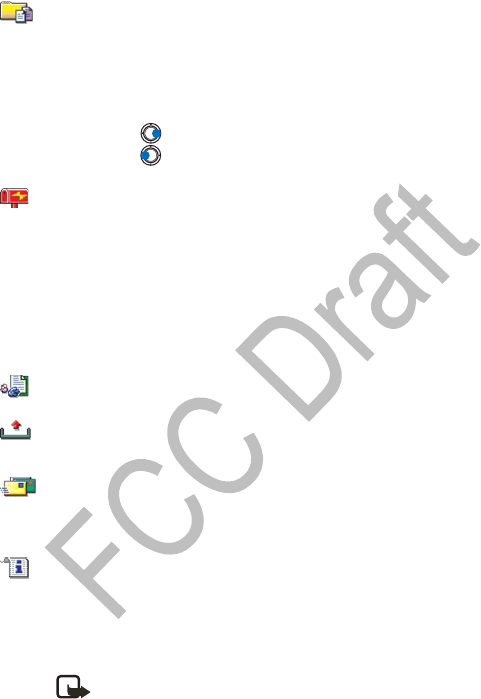
[ 76 ]
My folders—For organizing your messages into folders.
Organize your messages by adding new folders under
My folders.
When you have opened one of the default folders, for example,
Sent, you can easily move between the folders
by pressing to open the next folder (Outbox), or
by pressing to open the previous folder (Drafts).
Mailbox—When you open this folder, you can either connect
to your remote mailbox to retrieve your new e-mail messages
or view your previously retrieved e-mail messages offline.
See “View e-mail messages when online” and “View e-mail
messages when offline” on p. 96 for further information.
After you have defined settings for a new mailbox, the name
given to that mailbox will replace Mailbox in the main view.
See “Settings for e-mail” on p. 105.
Drafts—Stores draft messages that have not been sent.
Outbox—Is a temporary storage place for messages waiting to
be sent.
Sent—Stores the last 15 messages that have been sent. To
change the number of messages to be saved, see “Settings for
the Sent folder” on p. 107.
Reports—You can request the system to send you a delivery
report of the text messages, smart messages, and multimedia
messages you have sent. To turn on delivery report reception,
select Options→ Settings→ Text message or Multimedia
message, scroll to Receive report, and select Yes.
Note: Receiving a delivery report of a multimedia
message that has been sent to an e-mail address might
not be possible.
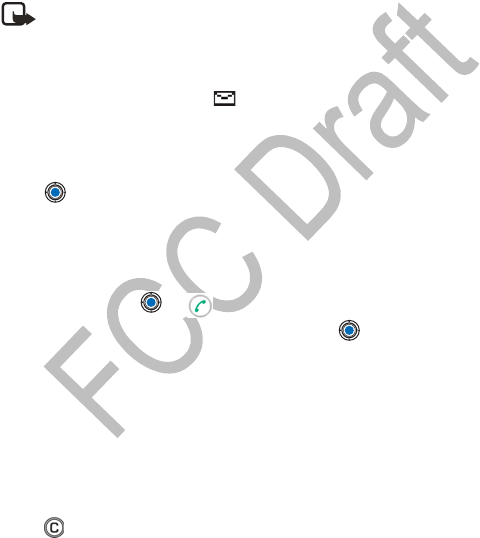
[ 77 ]
Messaging
• MESSAGING—GENERAL INFORMATION
The message status is always either draft, sent, or received. Messages can
be saved to the Drafts folder before they are sent. Messages are temporarily
placed to Outbox to wait for sending. After a message has been sent, you
can find a copy of the message in the Sent folder. Received and sent messages
are in read-only state until you select Reply or Forward, which copies the
message to an editor. Note that you cannot forward e-mail messages sent
by you.
Note: Messages or data that have been sent by an infrared or
Bluetooth connection are not saved in the Draft or Sent folders.
Open a received message
When you receive a message, and the note 1 new message is shown
in the standby mode. Press Show to open the message.
If you have more than one new message, press Show to open the Inbox to
see the message headings. To open a message in Inbox, scroll to it and
press .
Add a recipient to a message
When you create a message, there are several ways to add a recipient:
• Add recipients from the Contacts directory. To open the Contacts
directory, press or in the To: or Cc: fields, or select Options→
Add recipient. Scroll to a contact and press to mark it. You can
mark several recipients at a time. Press OK to return to the message.
The recipients are listed in the To: field and automatically separated
with a semicolon (;).
• Write the phone number or e-mail address of the recipient in the
To: field.
• Copy the recipient information from another application and then
paste it to the To: field. See “Copy text” on p. 82.
Press to the left of the cursor if you want to delete a recipient.
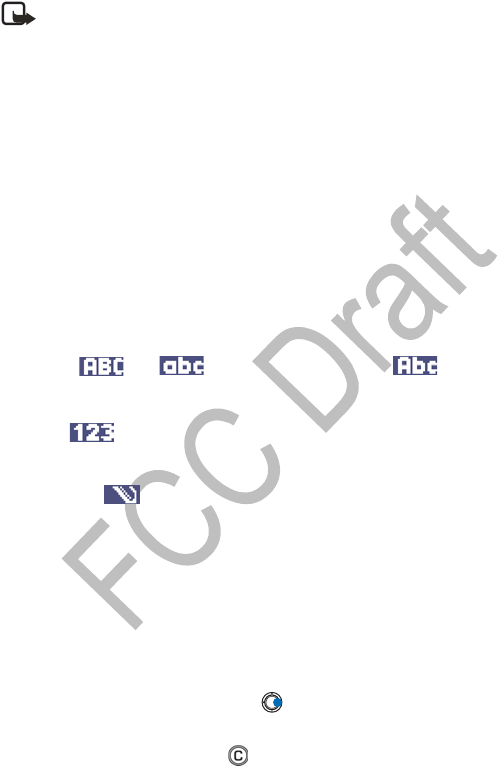
[ 78 ]
Note: If you write many phone numbers or e-mail addresses in the
To: field, you must remember to add a semicolon (;) between each
item to separate them from each other. When you retrieve
recipients from the Contacts directory, the semicolon is added
automatically.
Example: 214 123 456; 972 456 876
Sending options
To change how a message is sent, select Options→ Sending options when
you are editing a message. When you save the message, its sending
settings are also saved.
• WRITE TEXT
You can key in text in two different ways, using the method traditionally
used in mobile phones or another method called predictive text input.
Icons: and indicate the selected case.
means that the first letter of the next word is written in upper
case, and all other letters are automatically written in lower
case. indicates number mode.
Use traditional text input
The indicator is shown on the top right of the display when you
are writing text using traditional text input.
• Press a number key (1–9), repeatedly until the desired character
appears. Note, that there are more characters available for a number
key than are printed on the key.
• To insert a number, press and hold the number key.
• To switch between letter and number mode, press and hold the # key.
• If the next letter is located on the same key as the present one, wait
until the cursor appears (or press to end the time-out period), and
then key in the letter.
• If you make a mistake, press to remove a character. Press and hold
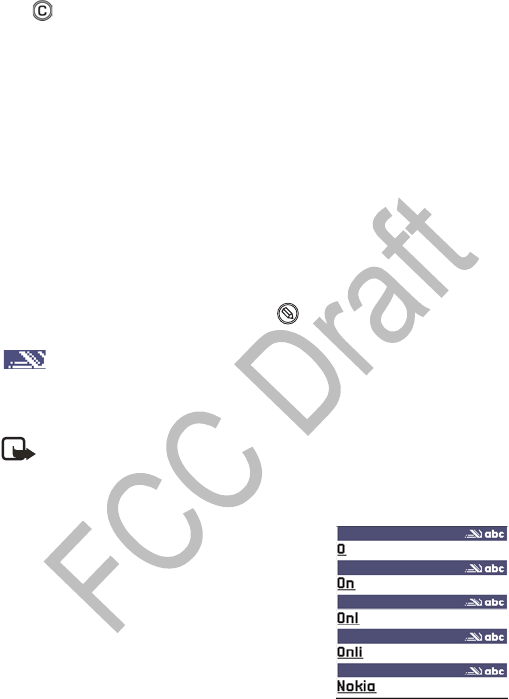
[ 79 ]
Messaging
to clear more than one character.
• The most common punctuation marks are available under the 1 key.
Press the 1 key repeatedly to reach the desired punctuation mark.
•Press the * key to open a list of special characters. Use the Scroll key
to move through the list, and press OK to select a character.
• To insert a space, press the 0 key.
• To move the cursor to the next line, press the 0 key three times.
• To switch between upper and lower case, press the # key.
Use predictive text input
To set predictive text input on or off, press the # key twice quickly when
writing text.
To activate predictive text input, press and select Predictive text on.
This will activate predictive text input for all editors in the phone. The
indicator is shown at the top of the display.
Write the desired word by pressing the 2–9 keys. Press each key only once
for one letter. The word changes after every key press.
Note: Do not pay attention to what appears on the display. The
word match is evolving. Wait until you have keyed in the whole
word before you check the result.
For example, to write ‘Nokia’ when English
dictionary is selected, press:
the 6 key for N
the 6 key for o
the 5 key for k
the 4 key for i
the 2 key for a
As you can see, the word suggestion changes
after each key press.

[ 80 ]
When you have finished the word, check that it is correct.
• If the word is correct, you can confirm it by pressing or by
pressing the 0 key to insert a space. The underlining disappears and
you can begin to write a new word.
• If the word is not correct, you have the following options:
•Press the * key repeatedly to view the matching words the
dictionary has found one by one.
• Press and select Predictive text→ Matches to view a list of
matching words. Scroll to the word you want to use and press
to select it.
•If the ? character is shown after the word, the word you intended to
write is not in the dictionary. To add a word to the dictionary, press
Spell, key in the word (max. 32 letters) using traditional text input,
and press Save. The word is added to the dictionary. When the
dictionary becomes full, a new word replaces the oldest added word.
•To remove the ? and clear characters one by one from the word,
press .
TIPS ON USING PREDICTIVE TEXT INPUT
• To erase a character, press . Press and hold to clear more than
one character.
• To change between the different character cases Abc, abc, and ABC,
press the * key. Note that if you press the * key quickly twice the
predictive text input is turned off.
• To insert a number in letter mode, press and hold the desired number
key, or press and select Insert number, key in the numbers you
want, and press OK.
To switch between letter and number mode, press and hold the # key.
• The most common punctuation marks are available under the 1 key.
Press the 1 key repeatedly to reach the desired punctuation mark.
•Press and hold the * key to open a list of special characters. Use the
Scroll key to scroll through the list and press OK to select a character.

[ 81 ]
Messaging
Or press and select Insert symbol.
The predictive text input will try to guess which commonly used
punctuation mark (.,?!‘) is needed. The order and availability of the
punctuation marks depend on the language of the dictionary.
•Press the * key repeatedly to view the matching words the dictionary
has found one by one.
You can also press , select Predictive text and select:
•Matches—to view a list of words that correspond to your key presses.
Scroll to the desired word and press the .
•Insert word—to add a word (max. 32 letters) to the dictionary by using
traditional text input. When the dictionary becomes full, a new word
replaces the oldest added word.
•Edit word—to open a view where you can edit the word, available only
if the word is active (underlined).
Write compound words
Write the first half of a compound word and confirm it by pressing .
Write the last part of the compound word and complete the compound
word by pressing the 0 key to add a space.
Turn off predictive text
Press and select Predictive text→ Off to turn predictive text input
off for all editors in the phone.
Editing options
When you press , the following options appear (depending on the
editing mode and situation you are in):
•Predictive text (predictive text input), Alpha mode (traditional text
input), or Number mode.
•Cut, Copy—available only if text has been selected first.
•Paste—available only when text has been either cut or copied
to the clipboard.
•Insert number, Insert symbol.
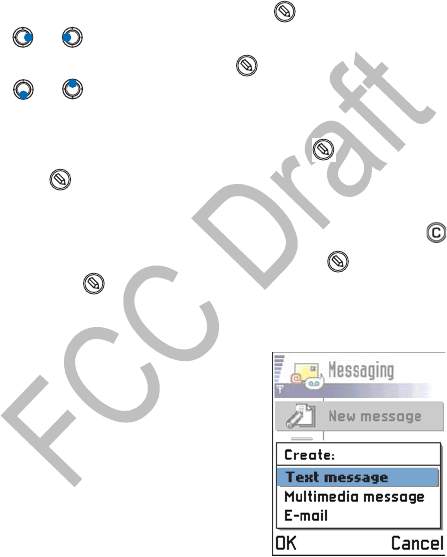
[ 82 ]
•Writing language—changes the input language for all editors in the
phone. See “Phone settings” on p. 34.
•COPY TEXT
If you want to copy text to the clipboard, the following are the
easiest methods:
1To select letters and words, press and hold . At the same time,
press or . As the selection moves, text is highlighted.
To select lines of text, press and hold . At the same time
press or .
2To end the selection, stop pressing the Scroll key.
3To copy the text to clipboard, while still holding , press Copy.
4Or, release and then press it once to open a list of editing
commands, for example, Copy or Cut.
5If you want to remove the selected text from the document, press .
6To insert the text into a document, press and hold and press
Paste. Or, press once and select Paste.
• CREATE AND SEND NEW MESSAGES
You can start to create a message in two ways:
• Select New message→ Create:→ Text
message, Multimedia message, or E-mail
in the Messaging main view.
• Start to create a message from an
application that has the option Send.
In this case the file that was selected
(such as an image or text) is added to
the message.
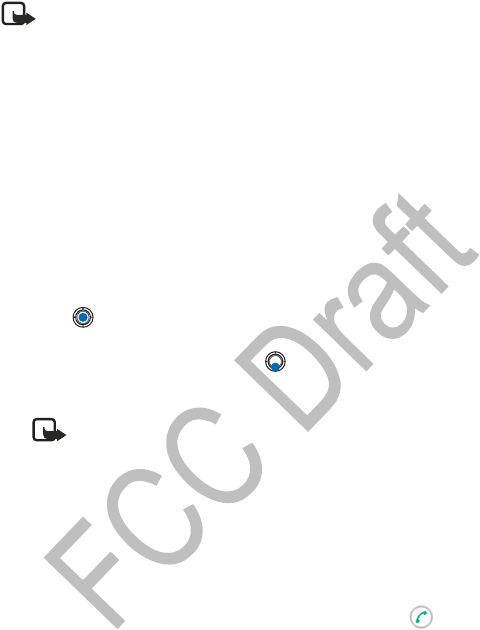
[ 83 ]
Messaging
Note: When sending messages, your phone may display the words
Message Sent. This is an indication that the message has been sent
by your phone to the message center programmed into your phone.
This is not an indication that the message has been received at the
intended destination. For more details about the messaging services,
check with your service provider.
• TEXT MESSAGES
Options in the text message editor are: Send, Add recipient, Insert,
Delete, Message details, Sending options, Help, and Exit.
1Select New message. A list of message options opens.
2Select Create:→ Text message. The editor opens with the cursor in
the To: field.
3Press to select recipients from the Contacts directory or write the
phone number of the recipient. Press the # key to add a semicolon (;)
to separate each recipient. Press to move to the message field.
4Write the message.
Note: Your phone supports sending multiple text messages at
the same time; therefore, the normal 160 characters limit for one
text message can be exceeded. If your text exceeds 160
characters, it will be sent in two or more messages and message
sending may cost you more.
In the navigation bar, you can see the message length indicator
counting backwards from 160. For example, 10 (2) means that you
can still add 10 characters for the text to be sent as two messages.
5To send the message, select Options→ Send or press .
Smart messages
Smart messages are special text messages that can contain data. You can
send smart messages such as:
• Picture messages
• Business cards containing contact information in generic (vCard) format
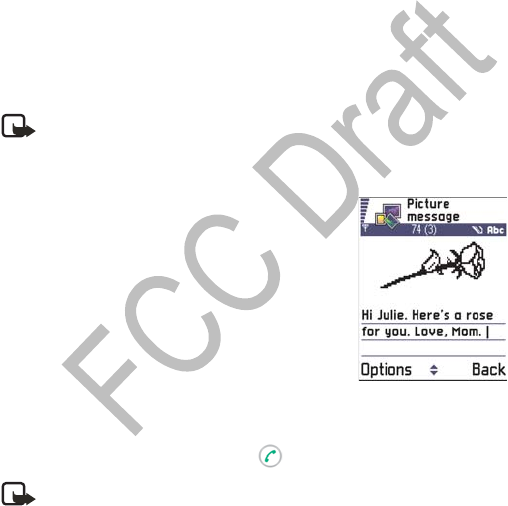
[ 84 ]
• Calendar notes (vCalendar format)
From the text message editor, you may crate a smart message containing
a picture (see “Create and send picture messages” on p. 84). For other
types of smart messages, see “Send contact information” on p. 58, “Send
calendar entries” on p. 117, and “Send bookmarks” on p. 131.
You can also receive ringing tones, operator logos, or settings from service
providers. See “Receive smart messages” on p. 92.
Create and send picture messages
Your phone allows you to send and receive picture messages. Picture
messages are text messages that contain small black-and-white
graphics. There are several default pictures available in the Picture
msgs. folder in Images.
Note: This function can be used only if it is supported by your
service provider. Only phones that offer picture message features
can receive and display picture messages.
To send a picture message:
1There are two possibilities. Choose one of
the following:
• Select Messaging→ New message→
Create:→ Text message, and then select
Options→ Insert→ Picture.
•Go to Images→ Picture msgs. and
select a picture to be sent.
Select Options→ Send.
2Enter recipient information and add text.
3Select Options→ Send or press .
Note: Each picture message is made up of several text messages.
Therefore, sending one picture message may cost more than
sending one text message.

[ 85 ]
Messaging
• MULTIMEDIA MESSAGES
A multimedia message can contain text, images, and either video
or sound clips.
Note: This function can be used only if it is supported by your
service provider. Only devices that offer compatible multimedia
message or e-mail features can receive and display multimedia
messages. Devices that don’t have these features may receive
details of a link to a web page.
Settings needed for multimedia messaging
Options in the multimedia message editor are: Send, Add recipient,
Insert, Preview message, Objects, Remove, Delete, Message details,
Sending options, Help, and Exit.
You may receive the settings as a smart message from your service
provider. See “Receive smart messages” on p. 92.
For availability of and subscription to data services, please contact your
service provider.
1Go to Settings→ Connection settings→
Access points and define the settings for a
multimedia messaging access point:
Connection name—Give a descriptive name
for the connection.
Session mode—Select a data connection
type: GSM data, High speed GSM, or GPRS.
Gateway IP address—Enter the address.
Example: Domain names such as www.nokia.com can be translated
into IP addresses like 192.100.124.195.
Homepage—Enter the address of the multimedia messaging center.
• If you selected GSM data or High speed GSM, fill in Dial-up
number—a phone number for the data call.

[ 86 ]
• If you selected GPRS, fill in Access point name—the name given
to you by your service provider.
For further information on different data connections, see also
“Connection settings” on p. 38.
2Go to Messaging→ Options→ Settings→ Multimedia message.
3Open Preferred connection and select the access point you created to
be used as the preferred connection. See also “Settings for multimedia
messages” on p. 103.
Set up the messaging store
The messaging store defines whether the phone’s memory or the memory
card are used as default. To define the messaging store:
Messaging→ Options→ Settings→ Messaging store and select either the
phone’s memory or the memory card, if one is used.
Create multimedia messages
When you are sending a multimedia message to any phone other than the
Nokia 3620 or Nokia 3660, it is recommended to use a smaller image size
and a sound clip that is no longer than 15 seconds. The default setting
is Image size: Small. If you want to check the image size setting, go
to Messaging→ Options→ Settings→ Multimedia message or select
Options→ Sending options when you are creating a multimedia message.
When you are sending a multimedia message to an e-mail address or
another Nokia 3620 or Nokia 3660, select Options→ Sending Options→
Image size →Large when you are creating a multimedia message.
1In Messaging, select New message→ Create→ Multimedia message
and press .
2Press to select the recipient(s) from the Contacts directory or
write the phone number or e-mail address of the recipient in the To:
field. Add a semicolon (;) to separate each recipient. Press to
move to the next field.
3You can add the different objects of the multimedia message in any
order you want:
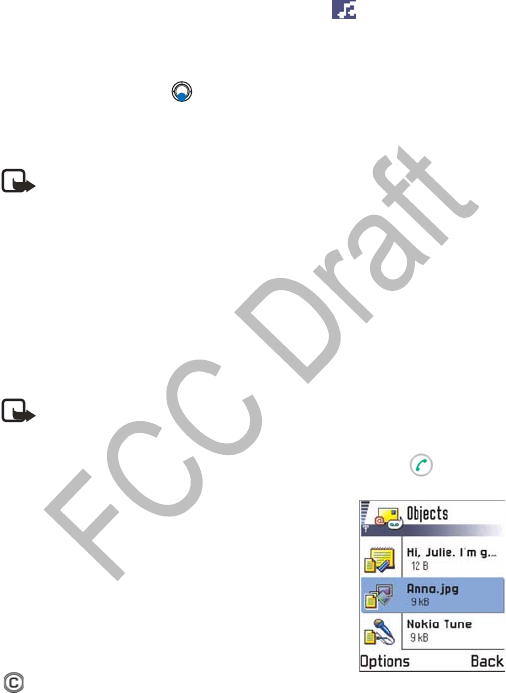
[ 87 ]
Messaging
• To add an image, select Options→ Insert→ Image or New image.
• To add a sound, select Options→ Insert→ Sound clip or New sound
clip. When sound has been added, the icon is shown in the
navigation bar.
• To add video, select Options→ Insert→ Video clip.
• To write text, press .
• If you select Insert→ Image, Sound clip, Video clip, or Template, a list
of items opens. Scroll to the item you wish to add and press Select.
Note: If you chose Image, first you need to select whether the
image is stored in the phone’s memory or the memory card, if one
is used.
• If you select Insert→ New image, Camera opens and you can take a
new picture. Press Remove to remove the picture and take another
instead.
• If you select Insert→ New sound clip, Recorder opens and you can
record a new sound. The new photo or sound is automatically saved
and a copy is inserted in the message.
Note: A multimedia message can contain only one photo and one
sound or video clip.
4To send the message, select Options→ Send or press .
Preview a multimedia message
To see what the multimedia message will look
like, select Options→ Preview message.
Remove object from a multimedia
message
To remove a multimedia object, select Options→
Remove→ Image Video clip or Sound clip. Press
to remove text.
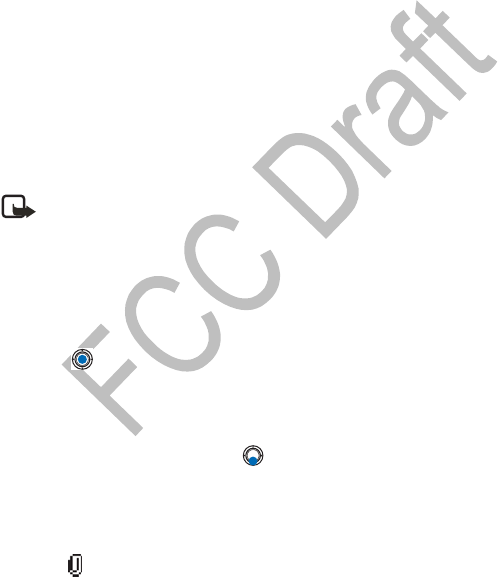
[ 88 ]
Work with different multimedia objects
To see all the different media objects included in a multimedia message,
open a multimedia message and select Options→ Objects to open the
Objects view.
In the Objects view, you can change the order of the different objects,
delete objects, or open an object in a corresponding application.
Options in the Objects view are: Open, Insert, Place image first / Place
text first, Remove, Help, and Exit.
• E-MAIL MESSAGES
Before you can send, receive, retrieve, reply to, and forward e-mail
messages, you must:
• Configure an Internet Access Point (IAP) correctly. See “Connection
settings” on p. 38.
• Define your e-mail settings correctly. See “Settings for e-mail” on p. 105.
Note: Follow the instructions given by your remote mailbox and
Internet Service Provider.
Write and send e-mail messages
Options in the e-mail editor are: Send, Add recipient, Insert, Attachments,
Delete, Message details, Sending options, Help, and Exit.
1Select New message→ Create:→ E-mail. The editor opens.
2Press to select the recipient(s) from the Contacts directory or write
the e-mail address of the recipient in the To: field. Add a semicolon (;)
to separate each recipient.
3If you want to send a copy of your e-mail to someone, write the
address in the Cc: field. Press to move to the next field.
4Write the message.
5If you want to add an attachment to the e-mail, select Options→
Insert→ Image, Sound clip, Video clip, or Note.
• will appear in the navigation bar to indicate that the e-mail

[ 89 ]
Messaging
has an attachment. Template adds pre-written text to the e-mail.
• You can also add an attachment to an e-mail by selecting
Options→ Attachments in an open e-mail. The Attachments view
opens where you can add, view, and remove attachments.
• To remove an attachment, scroll to the attachment and select
Options→ Remove.
• If you choose to attach an Image, first you need to select whether
the image is stored in the phone’s memory or the memory card, if
one is used.
6To send the e-mail, select Options→ Send or press .
E-mail messages are automatically placed in Outbox before sending. In
case something goes wrong while the phone is sending the e-mail,
the e-mail is left in Outbox with the status Failed.
If you want to send files other than photos, sounds, and notes as
attachments, open the appropriate application and select the option
Send→ Via e-mail, if available.
Add and remove attachments
To add an attachment to an e-mail, select Options→ Attachments in an
open e-mail. The Attachments view opens where you can add, view, and
remove attachments.
• To add an attachment, select Options→ Insert→ Image, Sound clip,
Video clip, or Note. A list of items opens. Scroll to the one you want
to add and press OK. will appear in the navigation bar to indicate
that the e-mail has an attachment.
• If you choose Image, first you need to select whether the image is
stored in the phone’s memory or the memory card, if one is used.
• To remove an attachment, scroll to the attachment and select
Options→ Remove.
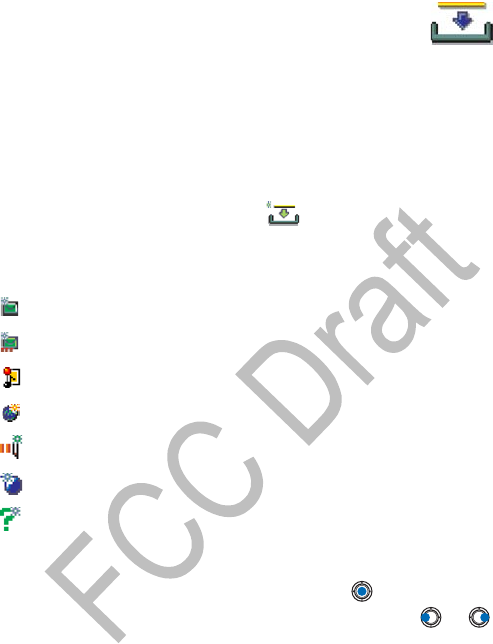
[ 90 ]
•INBOX
Options in Inbox are: Open, Create message, Delete, Message
details, Move to folder, Move to phone memory (shown if you have defined
the memory card as the messaging store), Move to memory card (shown if
you have defined the phone’s memory as the messaging store), Mark/
Unmark, Help, and Exit.
Messages and data can be received by text message, multimedia service,
infrared connection, or Bluetooth connection. When there are unread
messages in Inbox, the icon changes to .
In Inbox, unread messages appear in bold. The message icons tell you
what kind of a message it is. Here are some of the icons that you may see:
View messages
To open a message, scroll to the message and press .
Use the Scroll key to move up and down in the message. Press or
to move to the previous or next message in the folder.
Options in different message viewers
The available options depend on the type of message you have opened
for viewing:
•Save picture—saves the picture to Images→ Picture msgs.
•Reply—copies the address of the sender to the To: field. Select Reply→
for an unread text message
for an unread smart message
for an unread multimedia message
for an unread service message
for data received by infrared
for data received by Bluetooth connection
for an unknown message type

[ 91 ]
Messaging
To all to copy the address of the sender and Cc field recipients to the
new message.
•Forward—copies the message contents to an editor.
•Call—call by pressing .
•View image—allows you to view and save the image.
•Play sound clip—allows you to listen to the sound in the message.
•Objects—shows you a list of all the different multimedia objects in a
multimedia message.
•Attachments—shows you a list of files sent as e-mail attachments.
•Message details—shows detailed information about a message.
•Move to folder /Copy to folder—allows you to move or copy message(s)
to My folders, Inbox, or other folders you have created. See “Move
items to a folder” on p. 19.
•Add to Contacts—allows you to copy the phone number or e-mail
address of the message sender to the Contacts directory. Choose
whether you want to create a new contact card or add the information
to an existing contact card.
•Find—searches the message for phone numbers, e-mail addresses, and
Internet addresses. After the search, you can make a call or send a
message to the found number or e-mail address, or save the data to
Contacts or as a bookmark.
View multimedia messages
You can recognize multimedia messages by their icon .
To open a multimedia message, scroll to it and press . You can see an
image, read a message and hear a sound, simultaneously.
If sound is playing, press or to increase or decrease the sound
volume. If you want to mute the sound, press Stop.
MULTIMEDIA MESSAGE OBJECTS
Options in the Objects view are: Open, Save, Send, Call, and Exit.
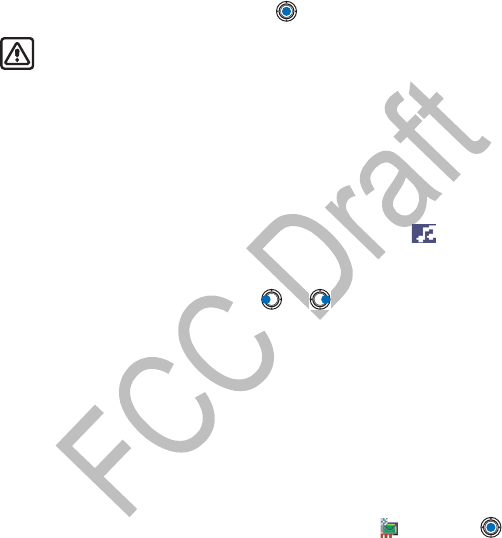
[ 92 ]
To see what kinds of media objects have been included in the multimedia
message, open the message and select Options→ Objects. In the Objects
view you can view files that have been included in the multimedia message.
You can choose to save the file in your phone or to send it, for example,
by infrared to another device.
To open a file, scroll to it and press the .
Warning:Multimedia message objects may contain viruses or
otherwise be harmful to your phone or PC. Do not open any
attachment if you are not sure of the trustworthiness of the
sender. For more information, see “Certificate management” on
p. 48.
Example: You can open a vCard file and save the contact information in
the file to Contacts.
SOUNDS IN A MULTIMEDIA MESSAGE
Sound objects in a multimedia message are indicated by the indicator
in the navigation bar. Sounds are by default played through the
loudspeaker. To stop the sound, press Stop while sound is playing. You can
change the volume level by pressing or .
If you want to listen to a sound again after all the objects have been
shown and the playing of the sound has stopped, select Options→ Play
sound clip.
Receive smart messages
If you receive a vCard file that has a picture attached, the picture will be
saved to Contacts as well.
Your phone can receive many kinds of smart messages, text messages that
contain data (also called Over-The-Air (OTA) messages). To open a received
smart message, open Inbox, scroll to the smart message ( ), and press .
•Picture message—to save the picture in the Picture msgs. folder in
Images for later use, select Options→ Save picture.
•Business card—to save the contact information, select Options→
Save business card. If certificates or sound files are attached to
business cards, they will not be saved.

[ 93 ]
Messaging
•Ringing tone—to save the ringing tone to Composer, select
Options→ Save.
•Operator logo—to save the logo, select Options→ Save. The operator
logo can now be seen in the standby mode instead of the service
provider’s own identification.
•Calendar entry—to save the invitation to Calendar, select Options→
Save to Calendar.
•WAP message—to save the bookmark, select Options→ Save to
bookmarks. The bookmark is added to the Bookmarks list in
browser service.
•E-mail notification—Tells you how many new e-mails you have in
your remote mailbox. An extended notification may list more detailed
information such as subject, sender, attachments, and so on.
If the message contains both browser access point settings and
bookmarks, to save the data select Options→ Save all. Or, select
Options→ View details to view the bookmark and access point
information separately. If you do not want to save all data, select a setting
or bookmark, open the details and select Options→ Save to Settings or
Save to bookmarks depending on what you are viewing.
To later change the default access point settings for browser service or
multimedia messaging, go to Services→ Options→ Settings→ Default
access point or Messaging→ Options→ Settings→ Multimedia
message→ Preferred connection.
In addition, you can receive a text message service number, voice mailbox
number, profile settings for remote synchronization, access point settings
for the browser, multimedia messaging or e-mail, access point login script
settings, or e-mail settings. To save the settings, select Options→ Save to
SMS sett., Save to Voice mail, Save to settings, or Save to e-mail sett..
Service messages
Options when viewing service message are: Download message, Move to
folder, Message details, Help, and Exit.
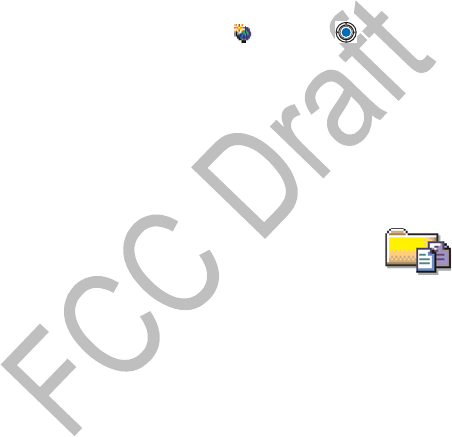
[ 94 ]
You can order service messages (pushed messages) from service providers.
Service messages are notifications of, for example, news headlines and
they may contain a text message or address of a browser service. For
availability and subscription, contact your service provider.
Service providers can update an existing service message every time a
new service message is received. Messages can be updated even if you
have moved them to another folder than Inbox. When service messages
expire, they are deleted automatically.
VIEWING SERVICE MESSAGES IN INBOX
1In Inbox, scroll to a service message ( ) and press .
2To download or view the service, press Download message. The note
Downloading message is displayed. The phone starts to make a data
connection, if needed.
3Press Back to return to Inbox.
VIEWING SERVICE MESSAGES IN THE BROWSER
When you are browsing, select Options→ Read service msgs. to download
and view new service messages.
•MY FOLDERS
Options in My folders are: Open, New message, Delete,
Message details, Move to folder, New folder, Rename, Help, and Exit.
In My folders you can organize your messages into folders, create new
folders, and rename and delete folders. Select Options→ Move to folder,
New folder, or Rename folder. For more information, see “Move items to a
folder” on p. 19.
Templates folder
You can use text templates to avoid rewriting messages that you send
often. To create a new template, select Options→ New template.
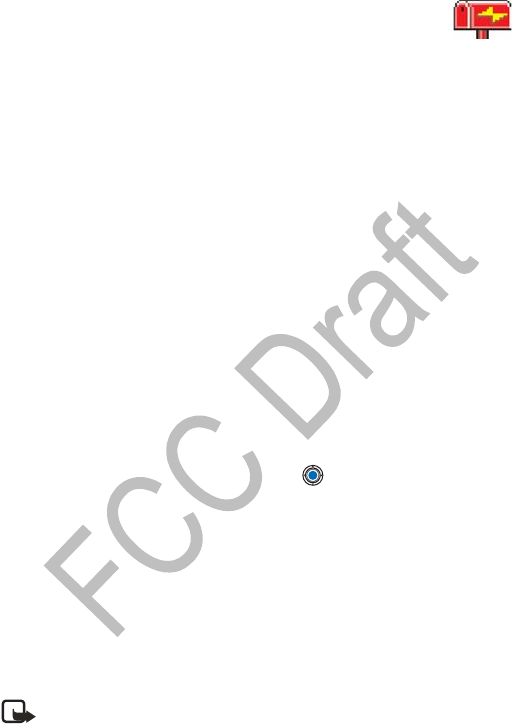
[ 95 ]
Messaging
• REMOTE MAILBOX
Select New message→ Create:→ E-mail or Mailbox in the
Messaging main view. If you have not set up your e-mail account,
you will be prompted to do so. See “Settings for e-mail” on p. 105.
When you open this folder, you can connect to your remote mailbox to:
• Retrieve new e-mail headings or messages.
• View your previously retrieved e-mail headings or messages offline.
The Settings wizard program included in the PC Suite can help you
configure access point and mailbox settings. You can also copy existing
settings, for example, from your computer to your phone. See the CD-
ROM supplied in the sales package.
When you create a new mailbox, the name you give to the mailbox
automatically replaces Mailbox in the Messaging main view. You can have
several mailboxes (max. six).
Open the mailbox
When you open the mailbox, you can choose whether you want to view
the previously retrieved e-mail messages and e-mail headings offline or
connect to the e-mail server.
When you scroll to your mailbox and press , the phone asks you if you
want to Connect to mailbox?. Select Yes to connect to your mailbox or No
to view previously retrieved e-mail messages offline.
Another way to start a connection is to select Options→ Connect.
VIEW E-MAIL MESSAGES WHEN ONLINE
When you are online, you are continuously connected to a remote mailbox
by a data call or a packet data connection. See also “Data connection
indicators” on p. 15, “GSM data calls” on p. 39, and “GPRS Packet data”
on p. 39.
Note: If you are using the POP3 protocol, e-mail messages are not
updated automatically in online mode. To see the newest e-mail
messages, you need to disconnect and then make a new connection
to your mailbox.

[ 96 ]
Options when viewing e-mail headings are: Open, New message,
Connect /Disconnect, Retrieve, Delete, Message details, Copy, Mark/
Unmark, Help, and Exit.
VIEW E-MAIL MESSAGES WHEN OFFLINE
When you view e-mail messages offline, your phone is not connected to
the remote mailbox. This mode may help you to save on connection costs.
To view e-mail messages offline, you must first retrieve e-mail messages
from your mailbox, see the next section. After you have retrieved the
e-mail messages to your phone, to end the data connection, select
Options→ Disconnect.
Now you can continue reading the retrieved e-mail headings and/or the
retrieved e-mail messages offline. You can write new e-mail messages,
reply to the retrieved e-mail messages, and forward e-mail messages. You
can order the e-mail messages to be sent the next time you connect to
the mailbox. When you open Mailbox the next time and you want to view
and read the e-mail messages offline, answer No to the Connect to
mailbox? query.
Retrieve e-mail messages from the mailbox
If you are offline, select Options→ Connect to start a connection to a
remote mailbox.
The remote mailbox view is similar to the Inbox folder in Messaging. You
can move up and down in the list by pressing or . The following
icons are used to show the status of the e-mail:
—new e-mail (offline or online mode). The content has not been
retrieved from the mailbox to your phone (the arrow in the icon is
pointing outwards).
—new e-mail, the content has been retrieved from the mailbox (arrow
pointing inwards).
—for e-mail messages that have been read.
—for e-mail headings that have been read and the message content
has been deleted from the phone.
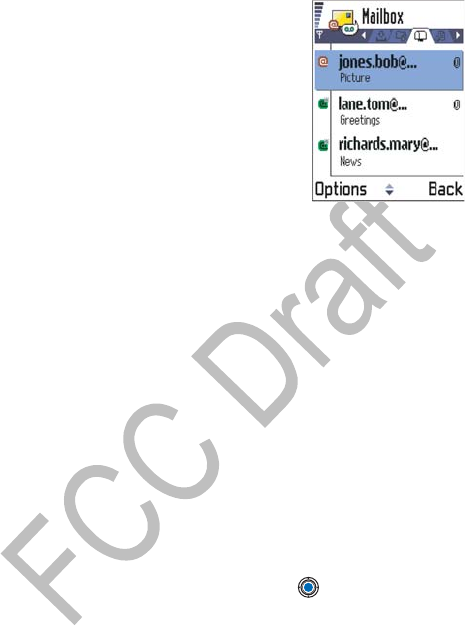
[ 97 ]
Messaging
1When you have an open connection to a
remote mailbox, select Options→ Retrieve,
•New—to retrieve all new e-mail
messages to your phone.
•Selected—to retrieve only the e-mail
messages that have been selected. Use
the Mark/Unmark→ Mark /Unmark
commands to select messages one by
one. See “Mark multiple items” on p. 19
for information on how to select many
items at the same time.
•All—to retrieve all messages from the mailbox.
To cancel retrieving, press Cancel.
After you have retrieved the e-mail messages, you can continue
viewing them online.
2Select Options→ Disconnect to close the connection and to view the
e-mail messages offline.
COPY E-MAIL MESSAGES TO ANOTHER FOLDER
If you want to copy an e-mail from the remote mailbox to a folder
under My folders, select Options→ Copy. Select a folder from the list
and press OK.
Open e-mail messages
When you are viewing e-mail messages either in online or offline mode,
scroll to the e-mail you want to view and press to open it. If the
e-mail message has not been retrieved (arrow in the icon is pointing
outwards) and you are offline and select Open, you will be asked if you
want to retrieve this message from the mailbox. Note that the data
connection is left open after the e-mail has been retrieved. Select
Options→ Disconnect to end the data connection.
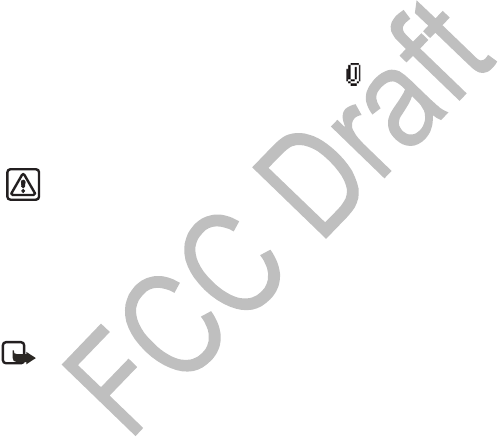
[ 98 ]
Options when viewing an e-mail message are: Reply, Forward, Delete,
Attachments, Message details, Move to folder, Add to Contacts, Find, Help,
and Exit.
Disconnect from mailbox
When you are online, select Options→ Disconnect to end the data call
or GPRS connection to the remote mailbox. See also “Data connection
indicators” on p. 15.
View e-mail attachments
Options in the Attachments view are: Open, Retrieve, Save, Send, Delete,
Help, and Exit.
Open a message that has the attachment indicator and select Options→
Attachments to open the Attachments view. In the Attachments view, you
can retrieve, open, or save attachments. You can also send attachments
by infrared or Bluetooth connection.
Warning:E-mail attachments may contain viruses or otherwise
be harmful to your phone or PC. Do not open any attachment if
you are not sure of the trustworthiness of the sender. For more
information, see “Certificate management” on p. 48.
Retrieve attachments to the phone
If the attachment has a dimmed indicator, it has not been retrieved to the
phone. To retrieve the attachment, scroll to it and select Options→ Retrieve.
Note: If your mailbox uses the IMAP 4 protocol, you can decide
whether to retrieve e-mail headings only, messages only, or
messages and attachments. With the POP3 protocol, the options
are e-mail headings only or messages and attachments. For further
information, see “Settings for e-mail” on p. 105.
To save memory, you can remove attachments from an e-mail while
retaining them on the e-mail server. Select Options→ Delete in the
Attachments view.

[ 99 ]
Messaging
Open an attachment
1In the Attachments view, scroll to an attachment and press to
open it.
• If you are online, the attachment is retrieved directly from the
server and opened in the corresponding application.
• If you are offline, the phone asks if you want to retrieve the
attachment to the phone. If you answer Yes, a connection to the
remote mailbox is started.
2Press Back to return to the e-mail viewer.
Supported image formats are listed on p. 61. To see a list of other file
formats supported by the Nokia 3620 and Nokia 3660, see the product
information at www.nokia.com.
SAVE ATTACHMENTS SEPARATELY
To save an attachment, select Options→ Save in the Attachments view.
The attachment is saved in the corresponding application. For example,
sounds can be saved in Recorder and text files (.TXT) in Notes.
Attachments such as images can be saved on a memory card, if one is used.
Delete e-mail messages
To delete an e-mail from the phone while still retaining it in the remote
mailbox, select Options→ Delete → Phone only.
Note: The phone mirrors the e-mail headings in the remote
mailbox. So, although you delete the message content, the e-mail
heading stays in your phone. If you want to remove the heading as
well, you have to first delete the e-mail message from your remote
mailbox and then make a connection from your phone to the
remote mailbox again to update the status.
To delete an e-mail from both the phone and the remote mailbox, select
Options→ Delete→ Phone and server.
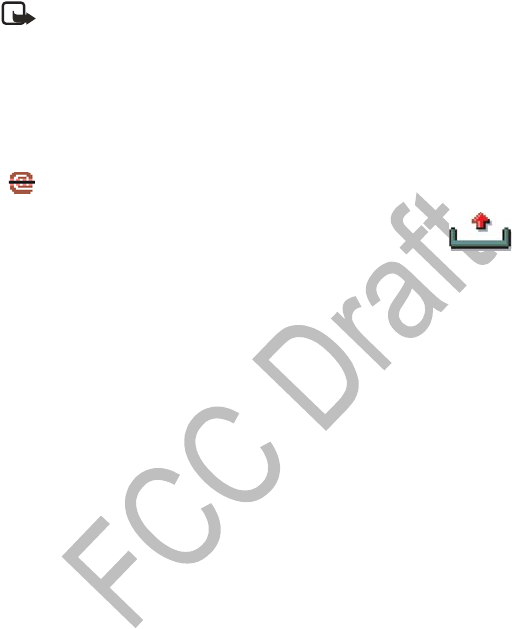
[ 100 ]
Note: If you are offline, the e-mail will be deleted first from your
phone. During the next connection to the remote mailbox, it will be
automatically deleted from the remote mailbox. If you are using
the POP3 protocol, messages marked to be deleted are removed
only after you have closed the connection to the remote mailbox.
UNDELETE E-MAIL MESSAGES WHEN OFFLINE
To cancel deleting an e-mail from both the phone and server, scroll to an
e-mail that has been marked to be deleted during the next connection
( ), and select Options→ Undelete.
• OUTBOX
The Outbox is a temporary storage place for messages waiting
to be sent. Status of the messages in Outbox is displayed as follows:
•Sending—A connection is being made and the message is being sent.
•Waiting/Queued—For example, if there are two similar types of
messages in Outbox, one of them is waiting until the first one is sent.
•Resend at (time)—Sending has failed. The phone will try to send the
message again after a time-out period. Press Send if you want to
restart the sending immediately.
•Deferred—You can set documents to be ‘on hold’ while they are in
Outbox. Scroll to a message that is being sent and select Options→
Defer sending.
•Failed—The maximum number of sending attempts has been reached.
Sending has failed. If you were trying to send a text message, open
the message and check that the Sending settings are correct.
Example: Messages are placed in the Outbox, for example, when your
phone is outside the system coverage area. You can also
schedule e-mail messages to be sent the next time you
connect to your remote mailbox.
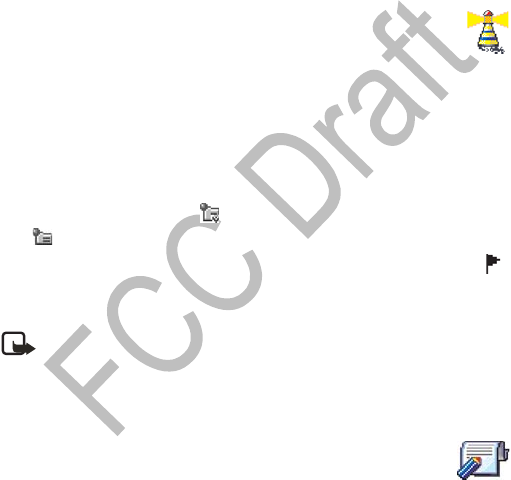
[ 101 ]
Messaging
• VIEW MESSAGES ON A SIM CARD
Before you can view SIM messages, you need to copy them to a folder in
your phone.
1In the Messaging main view, select Options→ SIM messages.
2Select Options→ Mark/Unmark→ Mark or Mark all to mark messages.
3Select Options→ Copy. A list of folders opens.
4Select a folder and press OK. Go to the folder to view the messages.
• CELL BROADCAST (SYSTEM SERVICE)
Options in Cell broadcast are: Open, Subscribe /Unsubscribe,
Hotmark / Unhotmark, Topic, Settings, Help, and Exit.
In the Messaging main view, select Options→ Cell broadcast.
You can receive messages on various topics, such as weather or traffic
conditions from your service provider. For available topics and relevant
topic numbers, contact your service provider. In the main view you can see:
• The status of the topic: —for new, subscribed messages and
—for new, unsubscribed messages.
• The topic number, topic name, and whether it has been flagged ( )
for follow-up. You will be notified when messages belonging to a
flagged topic have arrived.
Note: A packet data (GPRS) connection may prevent cell broadcast
reception. Contact your service provider for the correct GPRS
settings. For further information on the GPRS settings, see “GPRS
Packet data” on p. 39.
• SERVICE COMMAND EDITOR
In the Messaging main view, select Options→ Service
command.

[ 102 ]
You can send service requests, such as activation commands for system
services (also known as USSD commands), to your service provider. For
more information, contact your service provider.
To send a request in the standby mode or when you have an active call,
key in the command number(s) and press Send. If you need to enter letters
as well as numbers, select Messaging→ Options→ Service command.
• MESSAGING SETTINGS
The Messaging settings are divided into groups according to the different
message types. Scroll to the settings you want to edit and press .
Settings for text messages
Options when editing text message center settings are: New msg.
center, Edit, Delete, Help, and Exit.
Go to Messaging and select Options→ Settings→ Text message to open
the following list of settings:
•Message centers—Lists all the text message service centers that have
been defined. See “Add a new text message center” on p. 103.
•Msg. center in use (Message center in use)—Defines which message
center is used for delivering text messages and smart messages such
as picture messages.
•Receive report (delivery report)—When this system service is set to
Yes, the status of the sent message (Pending, Failed, Delivered) is
shown in the Log.
•Message validity—If the recipient of a message cannot be reached
within the validity period, the message is removed from the text
message service center. Note that the system must support this
feature. Maximum time is the maximum amount of time allowed by
the system.
•Message sent as—The options are Text, Fax, Paging, and E-mail. For
further information, contact your service provider.
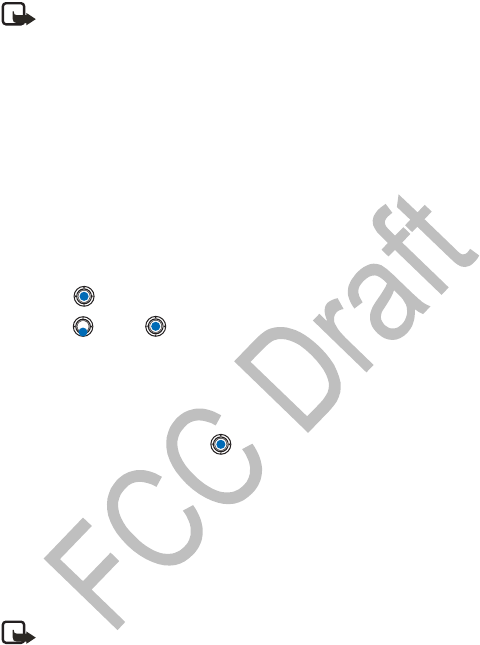
[ 103 ]
Messaging
Note: Change this option only if you are sure that your service
center is able to convert text messages into these other formats.
•Preferred connection—You can send text messages by the normal
GSM system or by GPRS, if supported by the system. See “GPRS Packet
data” on p. 39.
•Reply via same ctr. (system service)—By setting this option to Yes, if
the recipient replies to your message, the return message is sent using
the same text message service center number. Note that this may not
work between all operators.
ADD A NEW TEXT MESSAGE CENTER
1Open Message centers and select Options→ New msg. center.
2Press , write a name for the service center and press OK.
3Press , press and write the number of the text message service
center (Must be defined). Press OK. You need the message center
number to send text and picture messages. You can get the number
from your service provider.
To use the new settings, go back to the settings view and scroll to
Msg. center in use. Press and select the new service center.
Settings for multimedia messages
Go to Messaging and select Options→ Settings→ Multimedia message
to open the following list of settings:
•Preferred connection (Must be defined)—Select which access point
is used as the preferred connection for the multimedia message
center. See “Settings for multimedia messages” on p. 103.
Note: If you receive multimedia message settings in a smart
message and save them, the received settings are automatically
used for the Preferred connection. See “Receive smart messages”
on p. 92.
•Secondary conn.—Select which access point is used as the secondary
connection for the multimedia message center.

[ 104 ]
Note: Both Preferred connection and Secondary conn. must have
the same Homepage setting pointing to the same multimedia
service center. Only the data connection is different.
Example: If your preferred connection uses a packet data connection, you
may want to use high-speed data or data call for the secondary connection.
This way you are able to send and receive multimedia messages even
when you are not in a system that supports packet data. For availability
of and subscription to data services, please contact your service provider.
See also “Data connections and access points” on p. 38.
•Multimedia reception—Select:
•Only in home net.—if you want to receive multimedia messages
only when you are in your home system. When you are outside
your home system, multimedia message reception is turned off.
•Always on—if you want to receive multimedia messages always.
•Off—if you do not want to receive multimedia messages or
advertisements at all.
Note: When you are outside your home system, sending and
receiving multimedia messages may cost more. If the settings Only
in home net. or Always on have been selected, your phone can
make an active data call or GPRS connection without your
knowledge.
•On receiving msg.—Select:
•Retr. immediately—if you want the phone to retrieve multimedia
messages instantly. If there are messages with Deferred status,
they will be retrieved as well.
•Defer retrieval—if you want the multimedia messaging center to
save the message to be retrieved later. To retrieve the message
later, set On receiving msg. to Retr. immediately.
•Reject message—if you want to reject multimedia messages. The
multimedia messaging center will delete the messages.

[ 105 ]
Messaging
•Allow anon. messages—Select No, if you want to reject messages
coming from an anonymous sender.
•Receive adverts—Define whether you want to receive multimedia
message advertisements or not.
•Reports—Set to Yes, if you want the status of the sent message
(Pending, Failed, Delivered) to be shown in the Log. When set to No,
only the status Delivered is shown in the Log. See “Log—Call log and
general log” on p. 27.
•Deny report sending—Choose Yes, if you do not want your phone to
send delivery reports of received multimedia messages.
•Message validity—If the recipient of a message cannot be reached
within the validity period, the message is removed from the
multimedia messaging center. Note that the system must support this
feature. Maximum time is the maximum amount of time allowed by
the system.
•Image size—Define the size of the image in a multimedia message.
The options are: Small (max. of 160*120 pixels) and Large (max.
640*480 pixels).
•Speaker—Choose Loudspeaker or Normal, if you want the sounds in a
multimedia message to be played through the loudspeaker or the
earpiece. For more information, see “Loudspeaker” on p. 20.
Settings for e-mail
Go to Messaging and select Options→ Settings→ E-mail.
Options when editing e-mail settings are: Editing options, New mailbox,
Delete, Call, and Exit.
Open Mailbox in use to select which mailbox you want to use.
Settings for Mailboxes
Select Mailboxes to open a list of mailboxes that have been defined. If no
mailboxes have been defined, you will be prompted to do so. The following
list of settings is shown:

[ 106 ]
•Mailbox name—Write a descriptive name for the mailbox.
•Access point in use (Must be defined)—The Internet Access Point
(IAP) used for the mailbox. Choose an IAP from the list. For more
information on how to create an IAP, see also “Connection settings”
on p. 38.
•My mail address (Must be defined)—Write the e-mail address given
to you by your service provider. The address must contain the @
symbol. Replies to your messages are sent to this address.
•Outgoing mail server (Must be defined)—Write the IP address or host
name of the computer that sends your e-mail.
•Send message—Define how e-mail is sent from your phone.
Immediately—A connection to the mailbox is started immediately
after you have selected Send. During next conn.—E-mail is sent when
you connect to your remote mailbox the next time.
•Send copy to self—Select Yes to save a copy of the e-mail to your
remote mailbox and to the address defined in My mail address.
•Include signature—Select Yes if you want to attach a signature to
your e-mail messages and to start to write or edit a signature text.
•User name—Write your user name, given to you by your service provider.
•Password—Write your password. If you leave this field blank, you
will be prompted for the password when you try to connect to your
remote mailbox.
•Incoming mail server (Must be defined)—The IP address or host name
of the computer that receives your e-mail.
•Mailbox type—Defines the e-mail protocol your remote mailbox
service provider recommends. The options are POP3 and IMAP4.
Note: This setting can be selected only once and cannot be
changed if you have saved or exited from the mailbox settings.
•Security—Used with the POP3, IMAP4, and SMTP protocols to secure
the connection to the remote mailbox.
•APOP secure login—Used with the POP3 protocol to encrypt the
sending of passwords to the remote e-mail server. Not shown if

[ 107 ]
Messaging
IMAP4 is selected for Mailbox type:.
•Retrieve attachment (not shown if the e-mail protocol is set to POP3)—
To retrieve e-mail with or without attachments.
•Retrieve headers—To limit the number of e-mail headers you want
to retrieve to your phone. The options are All and User defined.
Used with IMAP4 protocol only.
Settings for service messages
When you go to Messaging and select Options→ Settings→ Service
message, the following list of settings opens:
•Service messages—Choose whether or not you want to receive
service messages.
•Authentic. needed—Choose if you want to receive service messages
only from authorized sources.
Settings for Cell broadcast
Check with your service provider to see if Cell broadcast is available and
what topics and numbers are available. Go to Messaging→ Options→
Settings→ Cell broadcast to change the settings: Reception—On or Off.
•Language—All allows you to receive cell broadcast messages in every
possible language. Selected allows you to choose in which languages
you wish to receive cell broadcast messages. If the language you want
could not be found in the list, select Other.
•Topic detection—If you receive a message that does not belong to any
of the existing topics, Topic detection→ On allows you to save the
topic number automatically. The topic number is saved to the topic
list and shown without a name. Choose Off if you do not want to save
new topic numbers automatically.
Settings for the Sent folder
Go to Messaging and select Options→ Settings→ Sent folder to open the
following list of settings:
•Save sent messages—Choose if you want to save a copy of every text

[ 108 ]
message, multimedia message, or e-mail that you have sent to the
Sent items folder.
•No. of saved msgs.—Define how many sent messages will be saved to
the Sent items folder at a time. The default limit is 20 messages.
When the limit is reached, the oldest message is deleted.
•Memory in use—Define memory store. Choices are phone’s memory or
memory card, if one is used.
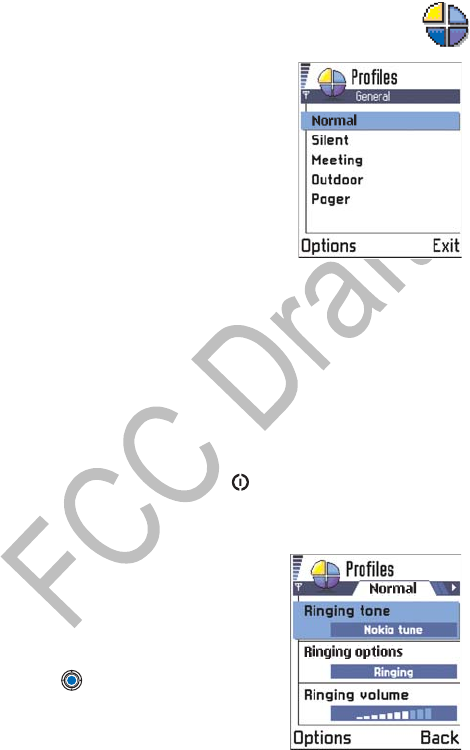
[ 109 ]
Profiles
10 Profiles
Go to Menu→ Profiles.
In Profiles, you can adjust and customize the
phone tones for different events, environments,
or caller groups. There are five preset profiles:
Normal, Silent, Meeting, Outdoor, and Pager,
which you can customize to meet your needs.
You can see the currently selected profile at the
top of the display in the standby mode. If the
Normal profile is in use, only the current date is
shown.
The tones can be default ringing tones, tones created in Composer, tones
received in a message, or transferred to your phone by infrared, PC, or
Bluetooth connection and then saved to your phone.
• CHANGE THE PROFILE
1Go to Menu→ Profiles. A list of profiles opens.
2In the Profiles list, scroll to a profile and select Options→ Activate.
Shortcut: To change the profile, press in the standby mode. Scroll to
the profile you want to activate and press OK.
• CUSTOMIZE PROFILES
1To modify a profile, scroll to the profile
in the Profiles list and select Options→
Customize. A list of profile settings opens.
2Scroll to the setting you want to change
and press to open the following
choices:
•Ringing tone—To set the ringing tone
for voice calls, choose a ringing tone

[ 110 ]
from the list. When you scroll through the list, you can stop on a
tone to listen to it before you make your selection. Press any key
to stop the sound. If a memory card is used, tones stored on it
have the icon next to the tone name. Ringing tones use shared
memory. See “Shared memory” on p. 21.
Note: You can change ringing tones in two places: Profiles or
Contacts. See “Add a ringing tone for a contact card or group” on
p. 58.
•Ringing options—When Ascending is selected, the ringing
volume starts from level one and increases level by level to the
set volume level.
•Ringing volume—To set the volume level for the ringing and
message alert tones.
•Message alert tone—To set the tone for messages.
•Vibrating alert—To set the phone to vibrate at incoming voice
calls and messages.
•Keypad tones—To set the volume level for keypad tones.
•Warning tones—The phone sounds a warning tone, for example,
when the battery is running out of power.
•Alert for—To set the phone to ring only upon calls from phone
numbers that belong to a selected contact group. Phone calls
coming from people outside the selected group will have a silent
alert. The choices are All calls / (list of contact groups, if you have
created them). See “Create contact groups” on p. 59.
•Profile name—You can rename a profile with any name you want.
The Normal profile cannot be renamed.
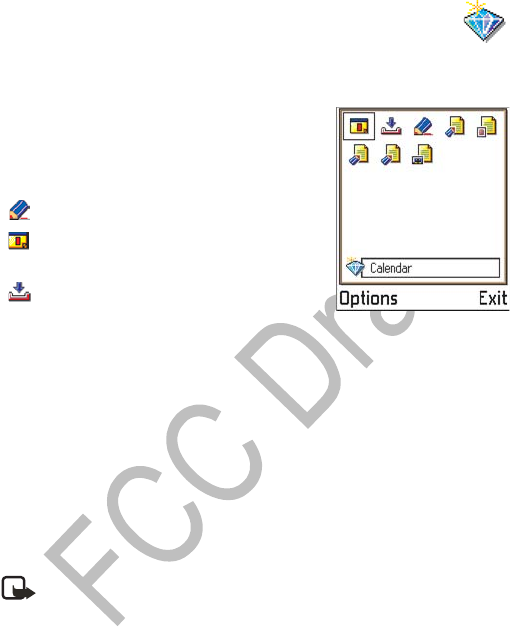
[ 111 ]
Favorites
11 Fav ori tes
Go to Menu→ Favorites.
You can use Favorites to store shortcuts, links
to your favorite photos, video clips, notes,
Recorder sound files, browser bookmarks, and
saved browser pages.
The default shortcuts are:
— opens the Notes editor
— opens the Calendar with the current
date selected
— opens the Messaging Inbox
Options in the Favorites main view are:
Open, Edit shortcut name, Delete shortcut, Move, List view / Grid view,
Help, and Exit.
• ADD SHORTCUTS
Shortcuts can be added only from the individual applications. Not all
applications have this functionality.
1Open the application and scroll to the item that you want to add as a
shortcut to Favorites.
2Select Options→ Add to Favorites and press OK.
Note: A shortcut in Favorites is automatically updated if you move
the item it is pointing to, for example, from one folder to another.

[ 112 ]
• SHORTCUT OPTIONS
•To open a shortcut, scroll to the icon and press . The file is opened
in the corresponding application.
•To delete a shortcut, scroll to the shortcut you want to remove and
select Options→ Delete shortcut. Removing a shortcut does not
affect the file it is referring to.
•To change the shortcut heading, select Options→ Edit shortcut name.
Write the new name. This change affects only the shortcut, not the
file or item the shortcut refers to.
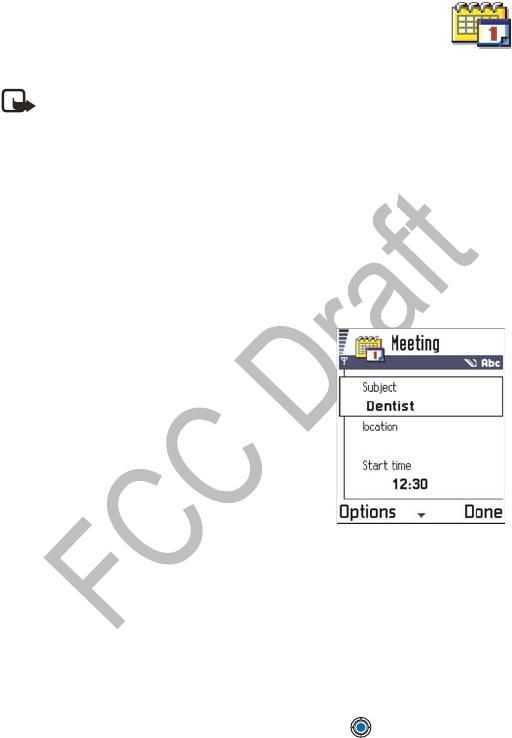
[ 113 ]
Calendar and To-do
1 2 C a l e n d a r a n d T o - d o
Go to Menu→ Calendar.
Note: Your phone must be switched on to use this function. Do not
switch the phone on when wireless phone use is prohibited or when
it may cause interference or danger.
Options when editing a calendar entry are: Delete, Send, Help, and Exit.
In Calendar, you can keep track of your appointments, meetings, birthdays,
anniversaries, and other events. You can also set a calendar alarm to remind
you of upcoming events.
Calendar uses shared memory. See “Shared memory” on p. 21.
• CREATE CALENDAR ENTRIES
1Select Options→ New entry and select
from the following options:
•Meeting to remind you of an
appointment that has a specific
date and time.
•Memo to write a general entry
for a day.
•Anniversary to remind you of birthdays
or special dates. Anniversary entries are repeated every year.
2Fill in the fields (see “Calendar entry fields” on p. 114). Use the Scroll
key to move between fields. Press the # key to change between upper
and lower case.
3To save the entry, press Done.
Edit calendar entries
1In the Day view, scroll to the entry and press to open it.
2Edit the entry fields and press Done.

[ 114 ]
• If you are editing a repeated entry, choose how you want the changes
to take effect: All occurrences—all repeated entries are changed / This
entry only—only the current entry will be changed.
Delete calendar entries
• In the Day view, scroll to the entry you want to delete and select
Options→ Delete or press . Press OK to confirm.
• If you are deleting a repeated entry, choose how you want the change
to take effect: All occurrences—all repeated entries are deleted / This
entry only—only the current entry will be deleted.
Example: Your weekly class has been cancelled. You have set the calendar
to remind you every week. Choose This entry only and the calendar will
remind you again next week.
Calendar entry fields
•Subject / Occasion—Write a description of the event.
•Location—The place of a meeting, optional.
•Start time, End time, Start date, and End date.
•Alarm—Press to activate the fields for Alarm time and Alarm date.
•Repeat—Press to change the entry to be repeating. Shown with
in the Day view.
Example: The repeat function is handy if you have a recurring event, a
weekly class, a biweekly meeting, or a daily routine you need to remember.
•Repeat until—You can set an ending date for the repeated entry, for
example, the ending date of a weekly course you are taking. This option
is shown only if you have selected to repeat the event.
•Synchronization—If you select Private, after synchronization the
calendar entry can be seen only by you and it will not be shown to
others with online access to view the calendar. This is useful when, for
example, you synchronize your calendar on a compatible computer at
work. If you select Public, the calendar entry is shown to others who
have access to view your calendar online. If you select None, the
calendar entry will not be copied to your PC when you synchronize
your calendar.
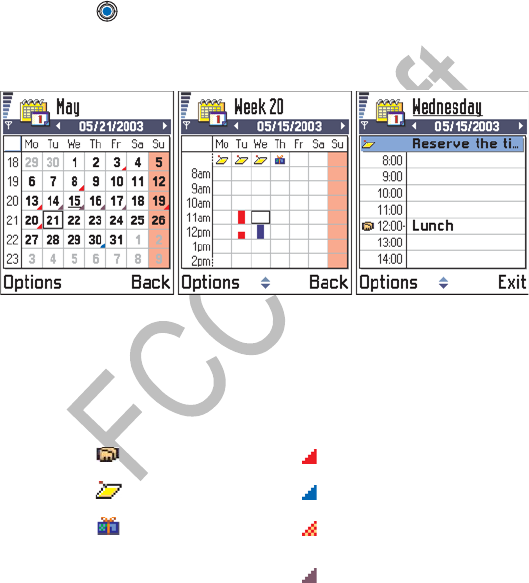
[ 115 ]
Calendar and To-do
Calendar views
MONTH VIEW
In the Month view, one row equals one week. The current date is underlined.
Dates that have calendar entries are marked with a small triangle at the
right bottom corner. There is a frame around the currently selected date.
• To open the Day view, scroll to the date you want to open and
press .
• To go to a certain date, select Options→ Go to date. Write the date
and press OK.
If you press the # key in Month, Week, or Day views, the current date is
automatically highlighted.
Calendar entry icons
in Day and Week views
Synchronization icons
in Month view
Meeting Private
Memo Public
Anniversary None
The day has more
than one view

[ 116 ]
WEEK VIEW
In the Week view, the calendar entries for the selected week are shown in
seven day boxes. The current day of the week is underlined. Memos and
Anniversaries are placed before 8 AM. Meeting entries are marked with
colored bars according to starting and ending times.
To view or edit an entry, scroll to the cell that has an entry and press
to open the Day view, then scroll to the entry and press to open it.
Options in the different calendar views are: Open, New entry, Week view/
Month view, Delete, Go to date, Send, Settings, Help, and Exit.
DAY VIEW
In the Day view, you can see the calendar entries for the selected day.
The entries are grouped according to their starting time. Memos and
Anniversaries are placed before 8 AM.
• To open an entry for editing, scroll to it and press .
• Press to go to the next day or press to go to the previous day.
SETTINGS FOR CALENDAR VIEWS
Select Options→ Settings and select:
•Default view—To select the view that is shown first when you
open Calendar.
•Week starts on—To change the starting day of the week.
•Week view title—To change the title of the Week view to be the week
number or the week dates.
Shortcut: To create a calendar entry, press any key (1–0) in any calendar
view. A Meeting entry is opened and the characters you keyed in are
added to the Subject field.
• SET CALENDAR ALARMS
1Create a new Meeting or Anniversary entry, or open a previously
created entry.
2Scroll to Alarm and press to open the Alarm time and Alarm
date fields.
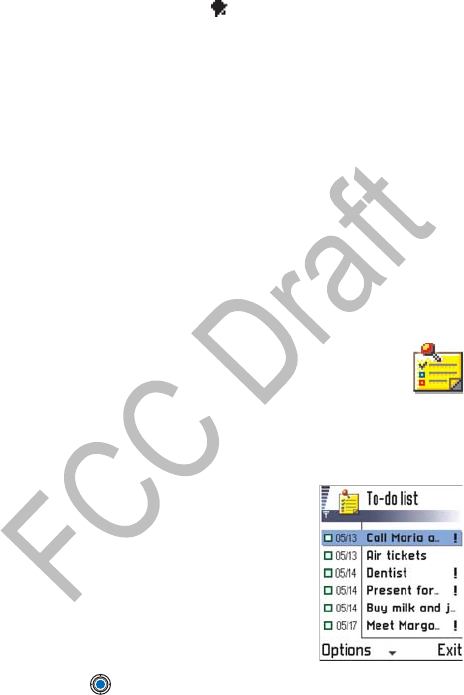
[ 117 ]
Calendar and To-do
3Set the alarm time and date.
4Press Done. An alarm indicator is shown next to the entry in the
Day view.
Stop a calendar alarm
The alarm duration is one minute. When the alarm time expires, press
Stop to end the calendar alarm. If you press any other key, the alarm is
set to snooze.
• SEND CALENDAR ENTRIES
In the Day view, scroll to the entry you want to send and select Options→
Send. Then select the method, the choices are: Via text message, Via e-mail
(available only if the correct e-mail settings are in place), Via Bluetooth,
or Via infrared. For further information, see the “Messaging” on p. 75,
“Send and receive data using infrared” on p. 151, and “Send data using
Bluetooth connection” on p. 146.
• TO-DO
Go to Menu→ To-do.
In To-do you can keep a list of tasks that you need to do.
The To-do list uses shared memory. See “Shared memory” on p. 21.
1To start to write a to-do note, press any
key (1–9). The editor opens and the cursor
blinks after the letters you have keyed in.
2Write the task in the Subject field. Press the *
key to add special characters.
• To set the due date, scroll to the Due date
field and key in a date.
• To set a priority, scroll to the Priority field
and press .
3To save the to-do note, press Done.
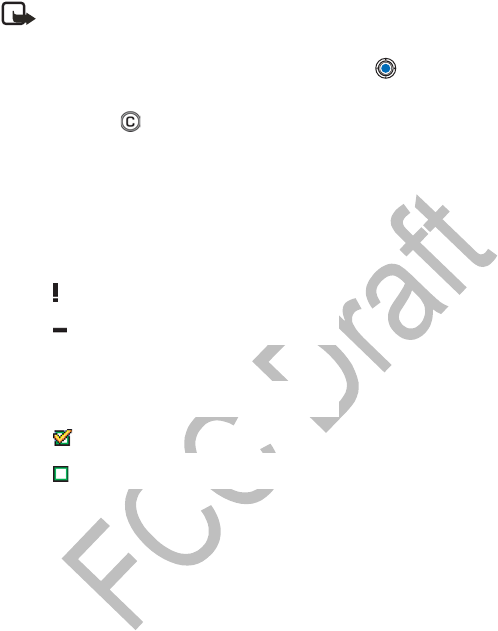
[ 118 ]
Note: If you remove all characters and press Done, the previously
saved note will be deleted.
•To open a to-do note, scroll to it and press .
•To delete a to-do note, scroll to it and select Options→ Delete
or press .
•To mark a to-do note as completed, scroll to it and select
Options→ Mark as done.
•To restore a to-do note, select Options→ Mark as not done.
• IMPORT DATA FROM OTHER NOKIA PHONES
You can move calendar, contacts, and to-do data from many different
Nokia phones to your Nokia 3620 or Nokia 3660 using the PC Suite Data
Import application. Instructions for using the application can be found in
the PC Suite online help on the CD-ROM.
Priority icons
High
Low
no icon Normal
Status icons
task completed
task not completed
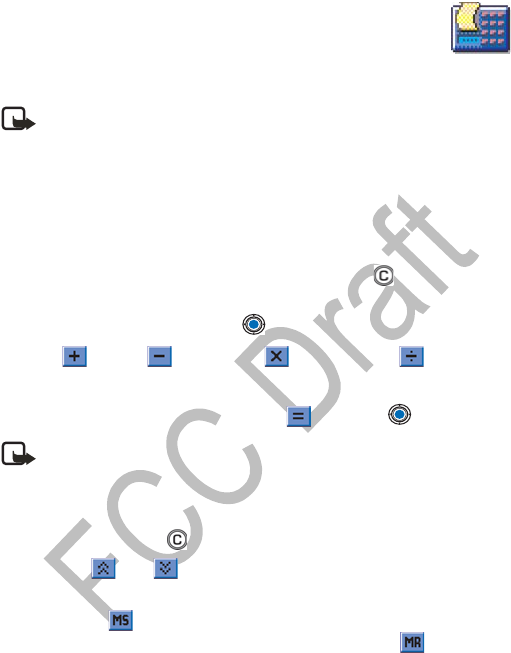
[ 119 ]
Extras
13 Extras
• CALCULATOR
Note: Your phone must be switched on to use this function. Do not
switch the phone on when wireless phone use is prohibited or when
it may cause interference or danger.
Go to Menu→ Extras→ Calculator.
Options in Calculator are: Last result, Memory, Clear screen, Help,
and Exit.
1Enter the first number of your calculation. Press to erase
any mistakes.
2Scroll to a function and press to select it.
Use to add, to subtract, to multiply, or to divide.
3Enter the second number.
4To execute the calculation, scroll to and press .
Note: The Calculator has limited accuracy and rounding errors may
occur, especially in long divisions.
• To add a decimal, press the # key.
• Press and hold to clear the result of the previous calculation.
• Use and to view previous calculations and move in
the sheet.
• Select to save a number to the memory, indicated by M.
To retrieve the number from the memory, select .
• To retrieve the result of the last calculation, select
Options→ Last result.
Press the # key repeatedly to scroll the functions. You can see the
selection change between the functions.

[ 120 ]
• COMPOSER
Go to Menu→ Extras→ Composer.
Options in the Composer main view are: Open, New tone,
Delete, Mark/Unmark, Rename, Duplicate, Help, and Exit.
Composer allows you to create your own, customized ringing tones.
Note that it is not possible to edit a default ringing tone.
1Select Options→ New tone to open the editor and to start composing.
• Use the keys to add notes and rests. See the following table.
Or, select Options→ Insert symbol to open a list of notes and rests.
The default duration for a note is 1/4.
• To listen to the tone, press or select Options→ Play. The playback
is always started from the beginning of the tone. To stop playing,
press Stop.
• To adjust the volume while a tone is playing, press to increase
or press to decrease it. Or, select Options→ Volume before
you start to play the tone.
• To adjust the tempo, select Options→ Tempo. To increase
or decrease the tempo gradually, press and hold or ,
respectively. Tempo is measured in beats per minute.
The maximum is 250 beats, the default tempo for a new
tone is 160 beats, and the minimum is 50 beats.
• To select many notes or rests at the same time, press and hold
and press and hold or at the same time.
• To apply different playing styles, select two or more notes and
then select Options→ Style→ Legato (notes are played in a
smooth and even manner) or select one or more notes and then
select Staccato (notes are played separately to produce short
sharp sounds).
• To move note(s) up or down on the staff by a half step, scroll to
the note and press or .
• For example, press and hold together with the 1 key to
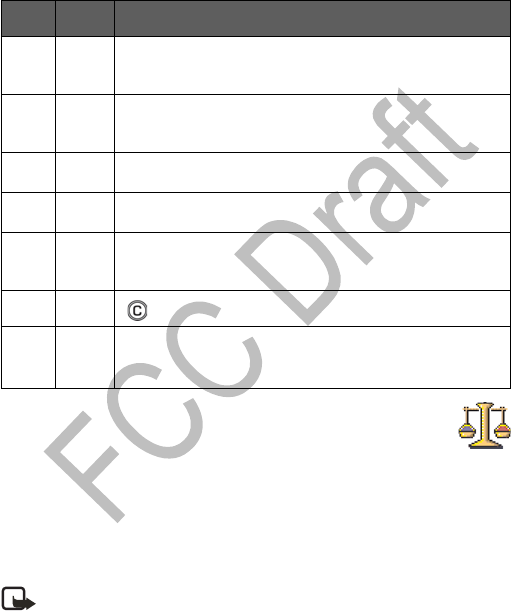
[ 121 ]
Extras
produce C#.
2Select Back to save.
Options when composing are: Play, Insert symbol, Style, Tempo, Volume,
Help and Exit.
•CONVERTER
In Converter, you can convert measures such as Length from
one unit (Yards) to another (Meters).
Go to Menu→ Extras → Converter.
Options in Converter are: Select unit /Change currency, Conversion type,
Currency rates, Help, and Exit.
Note: The Converter has limited accuracy and rounding errors may
occur.
Key Note Key and function
1CThe 8 key shortens the duration of the selected
note(s)/rest(s) in steps.
2DThe 9 key lengthens the duration of the selected
note(s)/rest(s) in steps.
3EThe 0 key inserts a rest.
4FPress the * key to open a list of notes and rests.
5GThe # key switches octaves, all selected note(s) or
rest(s) is/are moved to the next octave.
6A deletes selected note(s).
7BA long press of keys 0–7 produces a lengthened (dotted)
note or rest or shortens a lengthened note.
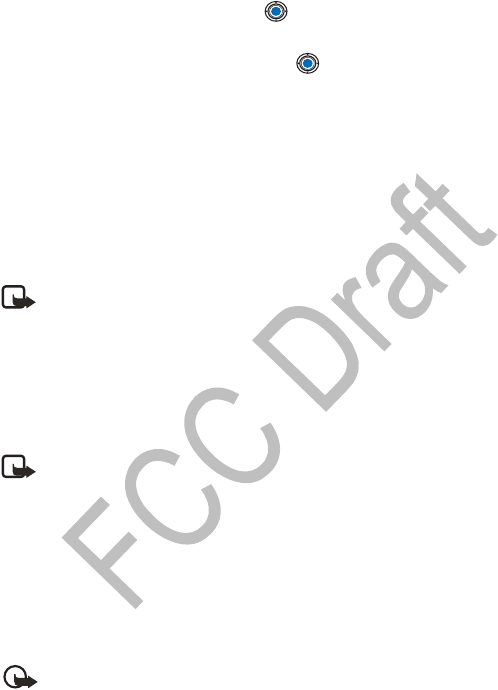
[ 122 ]
Convert units
1Scroll to the Type field and press to open a list of measures.
Scroll to the measure you want to use and press OK.
2Scroll to the first Unit field and press to open a list of available
units. Select the unit from which you want to convert and press OK.
Scroll to the next Unit field and select the unit to which you want
to convert.
3Scroll to the first Amount field and key in the value you want to
convert. The other Amount field changes automatically to show
the converted value.
Press the # key to add a decimal and press the * key for the +, - (for
temperature), and E (exponent) symbols.
Note: The conversion order changes if you write a value in the
second Amount field. The result is shown in the first Amount field.
To rename a currency, go to the Currency rates view, scroll to the currency,
and select Options→ Rename currency.
Set a base currency and exchange rates
Before you can make currency conversions, you need to choose a base
currency (usually your domestic currency) and add exchange rates.
Note: The rate of the base currency is always 1. The base currency
determines the conversion rates of the other currencies.
Example: If you set the United States Dollar (USD) as the base currency, a
Euro is 1.00. Thus, you would write 1.00 as the exchange rate for the Euro.
1Select Currency as the measure type and select Options→ Currency
rates. A list of currencies opens and you can see the current base
currency at the top.
2To change the base currency, scroll to the currency (usually your
domestic currency), and select Options→ Set as base curr..
Important:When you change the base currency, all previously set
exchange rates are set to 0 and you need to key in new rates.
3Add exchange rates (see example), scroll to the currency, and key in a
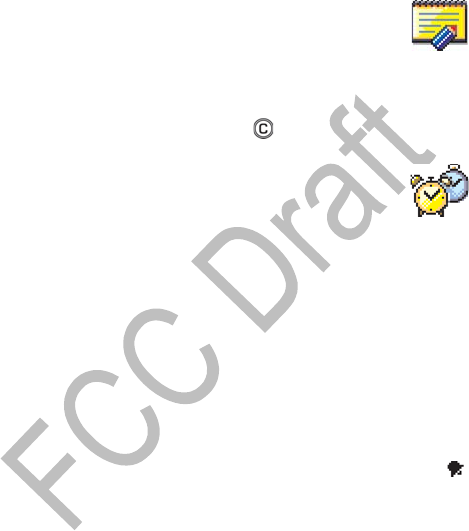
[ 123 ]
Extras
new rate, that is, how many units of the currency equal one unit of
the base currency you have selected.
4After you have inserted all the needed exchange rates, you can make
currency conversions. See “Convert units” on p. 122.
•NOTES
Go to Menu→ Extras→ Notes.
You can link notes to Favorites and send them to other devices. Plain text
files (TXT format) you receive can be saved to Notes.
Press the 1–0 keys to start to write. Press to clear letters. Press Done
to save.
•CLOCK
Go to Menu→ Extras→ Clock.
Options in Clock are: Set alarm, Reset alarm, Remove alarm, Settings,
Help, and Exit.
Change clock settings
To change the time or date, select Options→ Settings in Clock. To change
the clock shown in the standby mode, scroll down in the Date and time
settings and select Clock type→ Analog or Digital.
Set an alarm
1To set a new alarm, select Options→ Set alarm.
2Enter the alarm time and press OK. When the alarm is active, the
indicator is shown.
The alarm clock works even if the phone is switched off.
To cancel an alarm, go to clock and select Options→ Remove alarm.
Turn off an alarm
•Press Stop to turn off the alarm.
• When the alarm tone sounds, press any key or Snooze to stop the
alarm for five minutes, after which it will resume. You can do this a
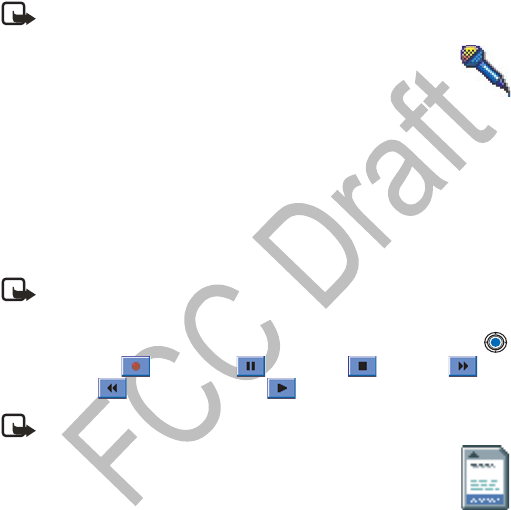
[ 124 ]
maximum of five times.
If the alarm time is reached while the phone is switched off, the phone
switches itself on and starts sounding the alarm tone. If you press Stop,
the phone asks whether you want to activate the phone for calls. Press No
to switch off the phone or Yes to make and receive calls.
Note: Do not press Yes when wireless phone use is prohibited or
when it may cause interference or danger.
•RECORDER
Go to Menu→ Extras→ Recorder.
Options in Recorder are: Open, Record sound clip, Delete, Move to phone
mem, Move to mem. card, Rename sound clip, Send, Add to Favorites, Help,
and Exit.
The voice recorder allows you to record telephone conversations and voice
memos. If you are recording a telephone conversation, both parties will
hear a tone every five seconds during recording.
Note: When using this feature, obey all laws and respect the
privacy and legitimate rights of others.
Select Options→ Record sound clip and scroll to a function and press
to select it. Use: —to record, —to pause, —to stop, —to
fast forward, —to fast rewind, or —to play an opened sound file.
Note: Recorder cannot be used when a data call or a GPRS
connection is active.
• MEMORY CARD
Options in the memory card are: Backup phone mem.,
Restore from card, Format mem. card, Memory card name, Set password,
Change password, Remove password, Unlock memory card, Mem. in use,
Help and Exit.
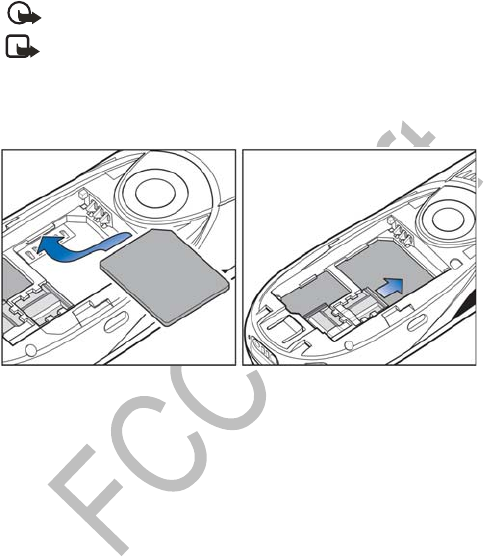
[ 125 ]
Extras
If you have a memory card you can use it to store your multimedia files
like video clips and sound files, photos, messaging information, and to
backup information from your phone’s memory.
Important:Keep all memory cards out of the reach of small children.
Note: Details of how you can use the memory card with other
features and applications of the Nokia 3620 and Nokia 3660 are
given in the sections describing these features and applications.
Insert the memory card
1Make sure the phone is switched off.
2With the back of the phone facing you, slide open the cover and remove
the battery, see Quick start ‘Insert the SIM card’ for instructions on
removing the cover.
3Position the memory card in its slot.
Make sure that the gold contacts of the card are facing down.
4Slide the silver catch over the memory card to secure it.
5When you have secured the card in place, replace the battery, then
replace the cover by sliding it back into place.
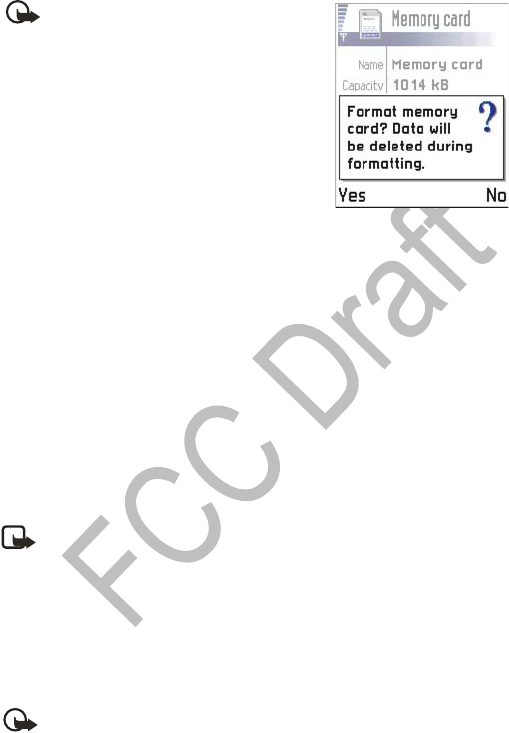
[ 126 ]
Important:If you are installing an
application to the memory card and
need to reboot the phone, do not
remove the card until the reboot is
complete. Otherwise the application
files may be lost.
Format the memory card
You must format the memory card before
you can use it for the first time.
Select Options→ Format mem. card.
You will be asked to confirm your request and once you confirm,
formatting starts.
Back up and restore phone memory
You can backup information from your phone’s memory to the memory
card. Select Options→ Backup phone mem.
You can restore information from the memory card to the phone’s
memory. Select Options→ Restore from card.
Memory card password
You can set a password to protect your memory card against
unauthorized use.
Note: The password is stored in your phone and you do not have to
enter it again while you are using the memory card on the same
phone. If you want to use the memory card on another phone, you
will be asked for the password.
To set up, change, or remove your password select Options→ Set password,
Change password, or Remove password.
The password can be up to eight characters long.
Important:Once the password is removed, the memory card can be
used on any phone without a password.

[ 127 ]
Extras
UNLOCK A MEMORY CARD
If you insert another password protected memory card in your phone, you
will be prompted to enter the password of the card. To unlock the card,
select Options→ Unlock memory card.
Check memory consumption
Using the Mem. in use option, you can check the memory consumption
of different data groups and the available memory for installing new
applications or software on your memory card.
Select Options→ Mem. in use.

[ 128 ]
14 Services (XHTML)
Go to Menu→ Services or press and hold the 0 key in the
standby mode.
The 0 key is marked with an internet symbol so that you can
easily locate it and use it to connect to the internet.
Note: Your phone must be switched on to use this function. Do not
switch the phone on when wireless phone use is prohibited or when
it may cause interference or danger.
XHTML browser supports pages written in the Hypertext Markup
Language (XHTML) and the Wireless Markup Language (WML).
Various service providers on the Internet
maintain pages specifically designed for
mobile phones, offering services such as
news, weather reports, banking, travel
information, entertainment, and games.
With the XHTML browser you can view
these services as WAP pages written in
WML, XHTML pages written in XHTML,
or a mixture of both.
Note: Check the availability of
services, pricing, and tariffs with your network operator and/or
service provider. Service providers will also give you instructions on
how to use their services.
• BASIC STEPS FOR ACCESSING THE WEB
• Save the settings that are needed to access the web service that you
want to use. See “Phone browser service settings” on p. 129.
• Connect to the service. See “Make a connection” on p. 129.
• Start browsing the web pages. See “Browsing” on p. 132.
• Disconnect from the service. “End a connection” on p. 135.

[ 129 ]
Services (XHTML)
• PHONE BROWSER SERVICE SETTINGS
Receiving settings in a smart message
Settings may be available, for example, on the site of a network operator
or service provider.
You may receive service settings in a special text message called a “smart
message” from the network operator or service provider that offers the
service. See “Receive smart messages” on p. 92. For more information,
contact your network operator or service provider.
Key in the settings manually
Follow the instructions given to you by your service provider.
1Go to Settings→ Connection settings→ Access points and define the
settings for an access point. See “Connection settings” on p. 38.
2Go to Services→ Options→ Add bookmark. Write a name for the
bookmark and the address of the browser page defined for the current
access point.
Make a connection
To access the Bookmarks view while browsing, press and hold down . To
return to the browser view again, select Options→ Back to page.
Once you have stored all the required connection settings, you can access
browser pages.
There are three different ways to access browser pages:
• Select the homepage ( ) of your service provider.
• Select a bookmark from the Bookmarks view.
•Press the 2–9 keys to start to write the address of a browser service.
The Go to field at the bottom of the display is immediately activated
and you can continue writing the address there.
After you have selected a page or written the address, press to start
to download the page. See also “Data connection indicators” on p. 15.
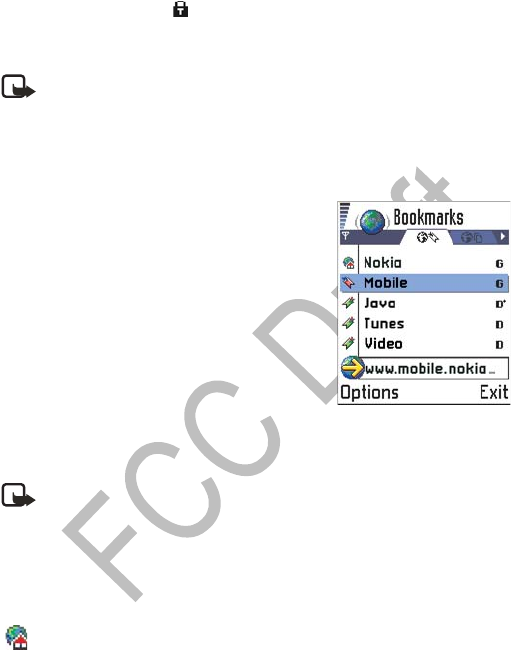
[ 130 ]
Connection security
If the security indicator is displayed during a connection, the data
transmission between the phone and the browser gateway or server is
encrypted and secure.
Note: The security icon does not indicate that data transmission
between the gateway and the content server (the place where the
requested resource is stored) is secure. It is up to the service provider
to secure data transmission between the gateway and the content
server.
View bookmarks
Options in the Bookmarks view (selection
on a bookmark or folder) are: Open, Download,
Back to page, Send, Go to URL address / Find
bookmark, Add bookmark, Edit, Delete, Read
service msgs., Disconnect, Move to folder,
New folder, Mark/Unmark, Rename, Clear
cache, Details, Add to Favorites, Settings,
Help, and Exit.
A bookmark consists of an Internet address
(mandatory), bookmark title, WAP access point, and if the service requires,
a user name and password.
Note: Your phone may have some pre-installed bookmarks for sites
not affiliated with Nokia. Nokia does not warrant or endorse these
sites. If you choose to access them, you should take the same
precautions, for security or content, as you would with any site.
In the Bookmarks view, you can see bookmarks pointing to different kinds
of web pages. Bookmarks are indicated by the following icons:
— The starting page defined for the browser access point. If you
use another web access point for browsing, the starting page is
changed accordingly.

[ 131 ]
Services (XHTML)
— The last visited page. When the phone is disconnected from the
service, the address of the last visited page is kept in memory until
a new page is visited during the next connection.
— A bookmark showing the title.
When you scroll through bookmarks, you can see the address of the
highlighted bookmark in the Go to field at the bottom of the display.
See the bookmarks figure in “Keys and commands used in browsing” on
p. 132.
Options when browsing are: Open, Service options, Bookmarks, History,
Go to URL address, View images, Read service msgs., Save as bookmark,
Send bookmark, Reload, Disconnect, Show images, Clear cache, Save page,
Find, Details, Session, Security, Settings, Help, and Exit.
Add bookmarks
1In the Bookmarks view, select Options→ Add bookmark.
2Start to fill in the fields (see the bookmarks figure in “Keys and
commands used in browsing” on p. 132). Only the address must be
defined. The default access point is assigned to the bookmark if no
other one is selected. Press to enter special characters such as
/ , . , : , and @. Press to clear characters.
3Select Options→ Save to save the bookmark.
Send bookmarks
To send a bookmark, scroll to it and select Options→ Send→
Via text message.
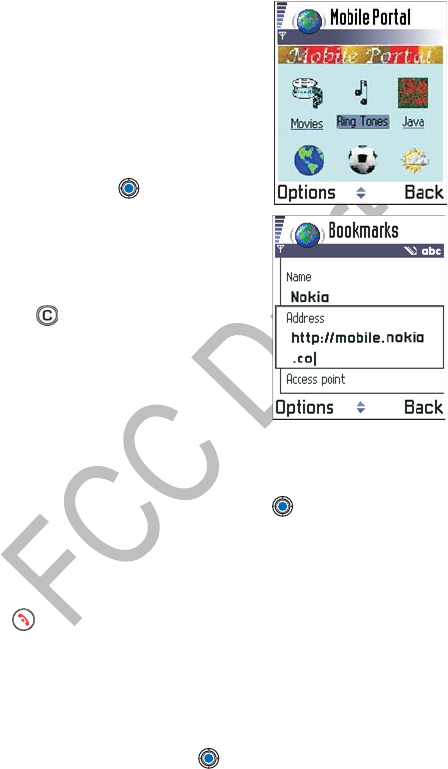
[ 132 ]
• BROWSING
On a browser page, new links appear
underlined in blue and previously visited
links in purple. Images that act as links
have a blue border around them.
Keys and commands used in
browsing
• To open a link, press .
• To scroll the view, use the Scroll key.
• To enter letters and numbers in a field,
press the 0–9 keys. Press the * key to
enter special characters such as /, ., :, and
@. Press to clear characters. (See
“Write text” on page 78.)
• To go to the previous page while
browsing, press Back. If Back is not
available, select Options→ History to
view a chronological list of the pages you
have visited during a browsing session. The history list is cleared each
time a session is closed.
• To check boxes and make selections, press .
• To retrieve the latest content from the server, select Options→ Reload.
• To open a sublist of commands or actions for the currently open web
page, select Options→ Service options.
• Press to disconnect from a web service and to quit browsing.
VIEWING NEW SERVICE MESSAGES WHILE BROWSING
To download and view new service messages while browsing:
1Select Options→ Read service msgs. (shown only if there are
new messages).
2Scroll to the message and press to download and open it.
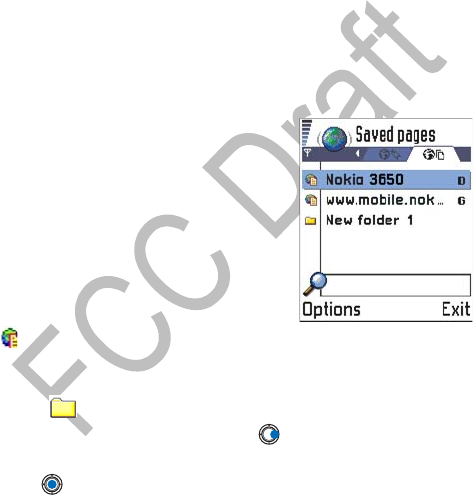
[ 133 ]
Services (XHTML)
For more information about service messages, see “Service messages”
on p. 93.
SAVING BOOKMARKS
• To save a bookmark while browsing, select Options→ Save as bookmark.
• To save a bookmark received in a smart message, open the message
in the Inbox in Messaging and select Options→ Save to bookmarks.
See also “Receive smart messages” on p. 92.
• VIEW SAVED PAGES
Options in the Saved pages view are: Open, Back to page, Reload, Remove,
Read service msgs., Disconnect, Move to folder, New folder, Mark/Unmark,
Rename, Clear cache, Details, Add to Favorites, Settings, Help, and Exit.
If you regularly browse pages containing
information that doesn’t change very often,
for example a train timetable, you can save
and then browse them when offline. If you
have a memory card, you can save web pages
on it instead of the phone’s memory.
To save a page, while browsing select
Options→Save page.
• Saved web pages are indicated by the
icon.
• In the saved pages view you can also create folders to store your
saved web pages. Folders containing saved web pages are indicated
by the icon.
• To open the Saved pages view, press in the Bookmarks view
(see the saved pages figure on p. 133). In the Saved pages view,
press to open a saved page.
• If you want to start a connection to the web service and to retrieve
the page again, select Options→ Reload. You can also arrange the
pages into folders.

[ 134 ]
Note: The phone stays online after you reload the page.
• DOWNLOAD THROUGH THE BROWSER
You can download items such as ringing tones, images, operator logos and
video clips through the mobile browser. These items can be provided free
or for a price.
Once downloaded, items are handled by the respective applications on
your phone, for example a downloaded photo will be saved in the Images.
Download directly from the web page
To download the item directly from a web page scroll to the link and select
Options→ Open.
Purchase an item
Digital Rights Management (DRM) is a system for protecting the
copyright of digital content that is distributed online. Copyright
protections may prevent some images, ringtones and other content from
being copied, modified, transferred or forwarded.
To download the item:
• Scroll to the link and select Options→ Open.
• Select Buy if you want to buy the item.
Check an item before downloading
You can see details about an item before you download it. Details about
an item may include the price, brief description and size.
Note: Check with your service provide to see if they offer this
service.
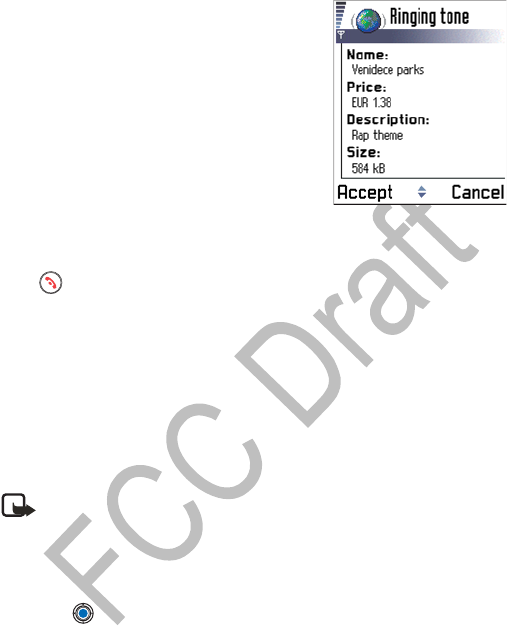
[ 135 ]
Services (XHTML)
• Scroll to the link and select Options→
Open.
Details about the item are displayed on
your phone.
• If you want to continue with the
downloading, press Accept or if you want
to cancel the download, press Cancel.
• END A CONNECTION
To end a connection, select Options→ Disconnect. You can also press and
hold to quit browsing and to return to the standby mode.
Empty the cache
The information or services you have accessed are stored in the cache
memory of the phone.
If you have tried to access or have accessed confidential information
requiring passwords (for example, your bank account), empty the cache
of your phone after each use. To empty the cache, select Options→
Clear cache.
Note: A cache is a buffer memory that is used to store data
temporarily.
• BROWSER SETTINGS
•Default access point—If you want to change the default access point,
press to open a list of available access points. The current default
access point is highlighted. For more information, see “Connection
settings” on p. 38.
•Show images—Choose if you want to view pictures when you are
browsing. If you choose No, you can later load images during
browsing by selecting Options→ Show images.

[ 136 ]
•Font size—You can choose five text sizes in the browser: Smallest,
Small, Normal, Large and Largest.
•Cookies—Allow /Reject. You can enable or disable the receiving and
sending of cookies.
•Confirm touch tones—Always / First sending only. The browser
supports functions you can access while browsing. You can make a
voice call while you are on a browser page, send touch tones while a
voice call is in progress, and save in Contacts a name and phone
number from a browser page. Choose whether you want to confirm
before the phone sends touch tones during a voice call.
•Text wrapping—Choose Off if you don’t want the text in a paragraph
to automatically wrap, or On if you do.
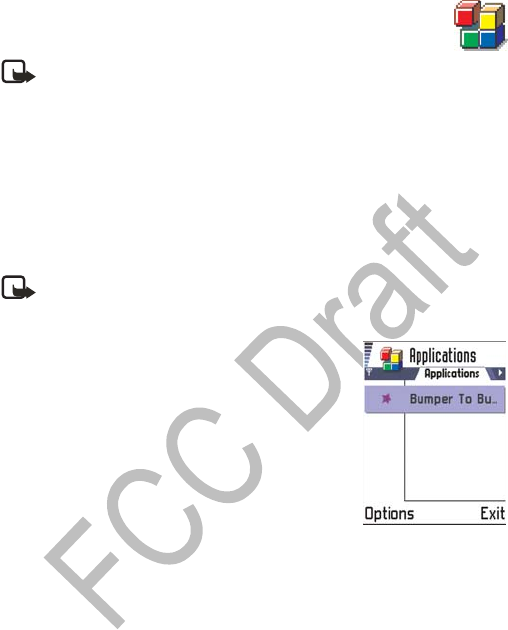
[ 137 ]
Java™ Applications
15 Java™ Applications
Note: Your phone must be switched on to use this
function. Do not switch the phone on when wireless phone use is
prohibited or when it may cause interference or danger.
Go to Menu→ Applications.
Options in the Applications main view are: Open, View details, Settings,
Remove, Go to URL address, Update, Help, and Exit.
In the Applications main view you can open installed Java applications
or remove them. In the Install view you can install new Java applications
(file extensions .jad or .jar).
Note: Your phone supports J2ME Java applications. Do not
download PersonalJava applications to your phone as they cannot be
installed.
When you open Applications, you can see a list
of Java applications that have been installed to
your phone. Scroll to an application and select
Options→ View details to view:
•Status—Installed, Running, or Downloaded
(shown only in Install view)
•Version—the application version number
•Supplier—the supplier or manufacturer of the
application
•Size—the size of the application file in kilobytes
•Type—a brief description of the application
•URL—an address of an information page on the Internet
•Data—the size of application data such as high scores, in kilobytes
To start a data connection and to view extra information about the
application, scroll to it and select Options→ Go to URL address.
To start a data connection and to check if there is an update available for
the application, scroll to it and select Options→ Update.
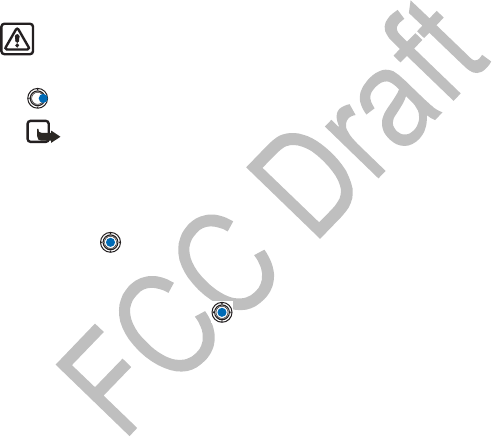
[ 138 ]
Applications uses shared memory. See “Shared memory” on p. 21.
• INSTALL A JAVA APPLICATION
Options in the Install view are: Install, View details, Delete, Help, and Exit.
Installation files may be transferred to your phone from a computer,
downloaded during browsing, or sent to you in a multimedia message as
an e-mail attachment using a Bluetooth connection or infrared connection.
If you are using PC Suite to transfer the file, place it in the c:\nokia\installs
folder in your phone.
Warning:Only install software from sources that offer adequate
protection against viruses and other harmful software.
1In the Applications main view, to view the installation packages, press
to open the Downloaded view.
Note: In the Install view, you can only install Java software
installation files with the extension .jad or .jar.
2To install an application, scroll to an installation file and select
Options→ Install.
Alternatively, search the phone memory for the installation file, select the
file, and press to start the installation.
Example: If you have received the installation file as an e-mail attachment,
go to your mailbox, open the e-mail, open the Attachments view, scroll to
the installation file, and press to start the installation. Press Yes to
confirm the installation.
The .jar file is required for installation. If it is missing, the phone may ask
you to download it. If there is no access point defined for Applications, you
will be asked to select one. When you are downloading the JAR file, you may
need to enter a user name and password to access the server. You obtain
these from the supplier or manufacturer of the application.
During installation, the phone checks the integrity of the package to be
installed. The phone shows information about the checks being carried
out, and you are given options whether to continue with or cancel the
installation. Once the phone has checked the integrity of the software
package, the application is installed on your phone.

[ 139 ]
Java™ Applications
The phone informs you when installation is complete. To open the Java
application after installation, you must go to the Applications main view.
When you are browsing WAP or browser pages, you can download an
installation file and install it immediately. Note, however, that the
connection is left running in the background during installation.
OPENING A JAVA APPLICATION
Scroll to an application in the Applications main view and press to
open it.
UNINSTALLING A JAVA APPLICATION
Select the application in the Applications main view and select Options→
Remove.
• JAVA APPLICATION SETTINGS
To define a default access point for downloading missing application
components, select Options→ Settings→ Default access point. For more
information on creating access points, see the “Access points” on p. 40.
Select an application and select Options→ Settings, and then select one
of the following:
Access point—Select an access point to be used by the application for
downloading extra data.
Network connection—Some Java applications may require a data
connection to be made to a defined access point. If no access point has
been selected, you will be asked to select one. The options are:
•Allowed—The connection is created immediately without a
notification.
•Ask first—You will be asked before the application makes
the connection.
•Not allowed—Connections are not allowed.
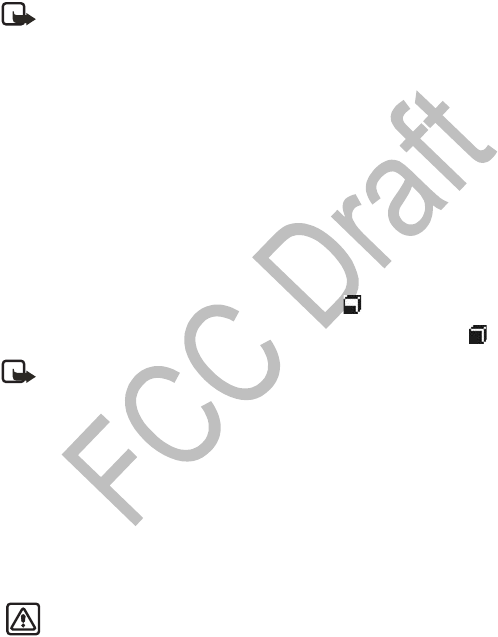
[ 140 ]
16 Manager
• INSTALL APPLICATIONS AND SOFTWARE
Note: Your phone must be switched on to use the functions in the
Tools folder. Do not switch the phone on when wireless phone use
is prohibited or when it may cause interference or danger.
Go to Menu→ Tools→ Manager.
In Manager you can install new applications and software packages,
and remove applications from your phone. You can also check the
memory consumption.
Options in the Manager main view are: View details, View certificate,
Install, Remove, View log, Send log, Memory details, Help, and Exit.
When you open Manager, you can see a list of:
• Installation packages that have been saved to Manager.
• Partially installed applications (indicated by ).
• Fully installed applications that you can remove (indicated by ).
Note: In Manager, you can only use device software installation
files with an .sis extension.
To install Java applications (file extension .jad or .jar), go to Applications. For
further information, see “Java™ Applications” on p. 137.
Scroll to an installation file and select Options→ View details to view the
Name, Version, Type, Size, Supplier, and Status of the software package.
Scroll to a software package and select Options→ View certificate to display
the security certificate details of a software package. See “Certificate
management” on p. 48.
Warning:Only install software from sources that offer adequate
protection against viruses and other harmful software.
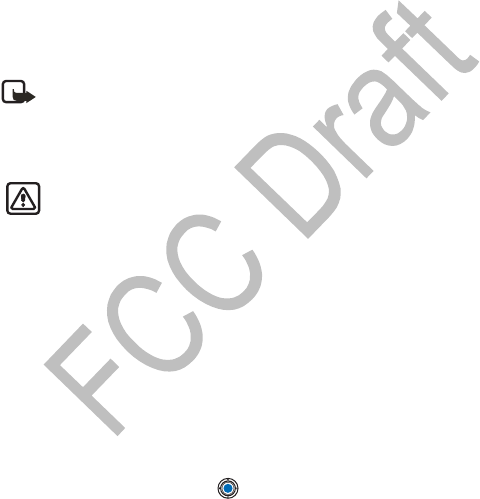
[ 141 ]
Manager
To help you, the software installation system uses digital signatures and
certificates on software packages. Do not install the application if Manager
gives a security warning during installation.
Select Options→ View log to see what software packages have been
installed or removed and when.
• INSTALL SOFTWARE
You can install applications that are specifically intended for the Nokia 3620
and Nokia 3660 phones or suitable for the Symbian operating system. A
software package is usually one large compressed file containing many
component files.
Note: If you install a program that is not intended specifically for
the Nokia 3620 and Nokia 3660 phones, it may function and look
very different from the usual Nokia 3620 and Nokia 3660 phone
applications.
Warning:If you install a file that contains an update or repair to an
existing application, you can only restore the original application if
you have the original installation file or a full back-up copy of the
removed software package. To restore the original application,
first remove the application and then install the application again
from the original installation file or the back-up copy.
Installation packages may be transferred to your phone from a computer,
downloaded during browsing, or sent to you in a multimedia message, as an
e-mail attachment, by Bluetooth connection, or by infrared. If you are using
PC Suite to transfer the file, place it in the c:\nokia\installs folder on your
phone.
Example: If you have received the installation file as an e-mail attachment,
go to your mailbox, open the e-mail, open the Attachments view, scroll to
the installation file, and press to start the installation.
Start the installation:
To start the installation, open Manager, scroll to the installation package,
and select Options→ Install.

[ 142 ]
Alternatively, search the phone memory or the memory card for the
installation file, select the file, and press to start the installation.
If you are installing software without a digital signature or a
certificate, the phone warns you of the risks of installing software.
Continue installation only if you are absolutely sure of the origin
and contents of the software package.
During installation, the phone checks the integrity of the package to be
installed. The phone shows information about the checks being carried
out and you are given options whether to continue or cancel the installation.
Once the phone has checked the integrity of the software package, the
application is installed on your phone.
To send your installation log to a help desk so that they can see what has
been installed or removed, select Options→ Send log→ Via text message or
Via e-mail (available only if the correct e-mail settings are in place).
• REMOVE SOFTWARE
1To remove a software package, scroll to it and select Options→ Remove.
2Press Yes to confirm the removal.
Warning:If you remove software, you can only re-install it if you
have the original software package or a full back-up of the
removed software package. If you remove a software package, you
may no longer be able to open documents created with that
software. If another software package depends on the software
package that you removed, the other software package may stop
working. Refer to the documentation of the installed software
package for details.

[ 143 ]
Manager
• VIEW MEMORY CONSUMPTION
To open the memory view select Options→ Memory details.
Note: If you have a memory card installed on your phone, you will
have a choice of two memory views, one for the phone or Phone
memory and one for the Memory card. If not, you will only have the
Phone memory view.
When you open either of the memory views, the phone calculates the
amount of free memory for storing data and installing new software. In
the memory views, you can view the memory consumption of the different
data groups: Calendar, Contacts, Documents, Messages, Images, Sound
files, Video clips, Applications, Mem. in use, and Free memory.
If the phone memory is getting low, remove some documents,
or move them to the memory card. See also the “Troubleshooting” on
p. 178.
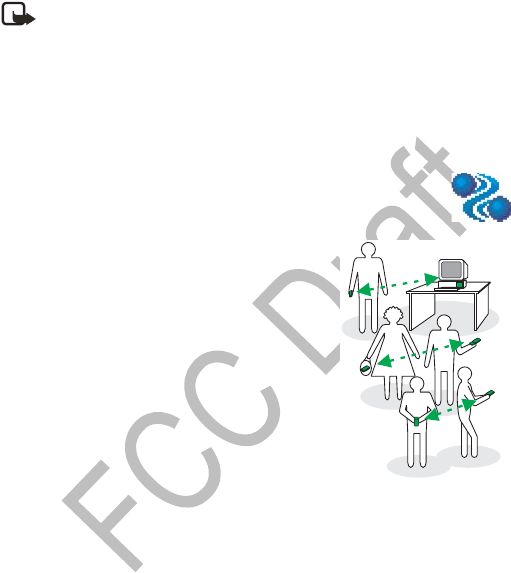
[ 144 ]
17 Connectivity
Note: Your phone must be switched on to use the functions in the
Connectivity folder. Do not switch the phone on when wireless
phone use is prohibited or when it may cause interference
or danger.
You can transfer data from your phone to another compatible device, for
example, a phone or a computer, using a Bluetooth connection or infrared.
• BLUETOOTH CONNECTION
Go to Menu→ Connect.→ Bluetooth.
Bluetooth connectivity enables cost-free
wireless connections between electronic
devices within a maximum range of 30 feet.
A Bluetooth connection can be used to send
images, texts, business cards, and calendar
notes. It can also be used to connect wirelessly
to products with or using Bluetooth wireless
technology, such as computers.
Since Bluetooth devices communicate
using radio waves, your phone and the
other Bluetooth device do not need to
be in direct line-of-sight.
The two devices only need to be within a maximum of 30 feet (10 meters)
of each other, although the connection can be subject to interference
from obstructions such as walls or from other electronic devices.
Using the Bluetooth application consumes the battery and the phone’s
operating time will be reduced. Take this into account when performing
other operations with your phone.
There may be restrictions on using Bluetooth devices. Check with your
local authorities.
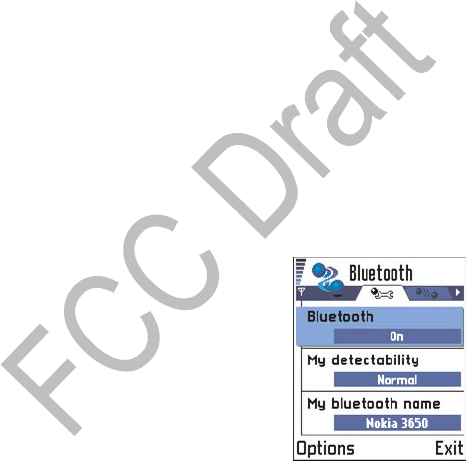
[ 145 ]
Connectivity
Bluetooth device compatibility
The Nokia 3620 and Nokia 3660 phones are designed to be compliant with
and to adapt to Bluetooth Specification 1.1. Compatibility between the
phone and other products with Bluetooth wireless technology depends also
on the profiles and protocols used by both devices. The current profiles
supported by the Nokia 3620 and Nokia 3660 are:
• Dial-Up Networking profile (DUN) as a gateway
• Fax profile (FAX) as a gateway
• Object Push profile (OPP) as a client and server
• File Transfer profile (FTP) as a server
• Handsfree profile (HFP) as an audio gateway
• Generic Object Exchange profile (GOEP)
• Generic Access profile (GAP)
• Serial Port profile (SPP) with the PC connectivity software
For information on compatibility with other Bluetooth devices, contact
their manufacturers.
Activate the Bluetooth application for the first time
When you activate the Bluetooth application
for the first time, you are asked to give a
Bluetooth name to your phone.
After you have set the Bluetooth application
to be active and changed My phone's visibility
to All, your phone and this name can be seen
by other Bluetooth device users.
Write a name (max. 30 letters) or use the
default name. If you send data using a
Bluetooth connection before you have given
an individual Bluetooth name to your phone,
the default name will be used.
To send text using a Bluetooth connection (instead of text messages), go
to Notes, write the text, and select Options→ Send→ via Bluetooth.
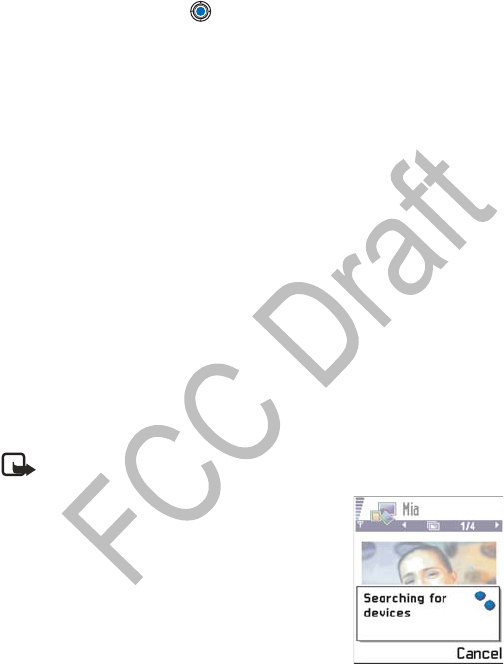
[ 146 ]
Bluetooth application settings
To modify the Bluetooth application settings, scroll to the setting you
want to change and press .
•Bluetooth—Select On if you want to use Bluetooth wireless
technology. If you set the Bluetooth application Off all active
Bluetooth connections are ended and the Bluetooth application
cannot be used for sending or receiving data.
•My phone's visibility—If you select Shown to all, your phone can
be found by other Bluetooth devices during device search. If you
select Hidden, your phone cannot be found by other devices during
device search.
•My Bluetooth name—Define a Bluetooth name for your phone.
After you have set the Bluetooth application to be active and
changed My phone's visibility to All, this name can be seen by
other Bluetooth device users.
When searching for devices, some Bluetooth devices may show only the
unique Bluetooth addresses (device addresses). To find out what the
unique Bluetooth address of your phone is, enter the code *#2820# in the
standby mode.
Send data using Bluetooth connection
Note: There can be only one active Bluetooth connection at a time.
1Open an application where the item you
wish to send is stored. For example, to
send a photo to another device, open
the Images application.
2Scroll to the item you want to send, for
example, a photo and select Options→
Send→ Via Bluetooth.

[ 147 ]
Connectivity
3The phone starts to search for devices within range. Bluetooth enabled
devices that are within range start to appear on the display one by
one. You can see a device icon, the device’s Bluetooth name, the
device type, or a short name. Paired devices are shown with .
Note: If you have searched for Bluetooth devices earlier, a list of
the devices that were found previously is shown first. To start a new
search, select More devices. If you switch off the phone, the list of
devices is cleared and the device search needs to be started again
before sending data.
To interrupt the search, press Stop. The device list freezes and you can
start to form a connection to one of the devices already found.
4Scroll to the device you want to connect with and press Select.
The item you are sending is copied to Outbox and the note Connecting
is shown.
5If required to pair with the other device, consider the following:
• If the other device requires pairing before data can be transmitted,
a tone sounds and you are asked to enter a passcode.
• Create your own passcode (1-16 characters long, numeric) and
agree with the owner of the other Bluetooth device to use the
same code. This passcode is used only once and you do not have
to memorize it.
• After pairing, the device is saved to the Paired devices view
(see “Paired devices view” on p. 148).
Note: Pairing means authentication. The users of the Bluetooth
enabled devices should agree on the passcode and use the same
passcode for both devices in order to pair them. Devices that do not
have a user interface have a factory set passcode.
When the connection has been successfully established, the note
Sending data is shown.
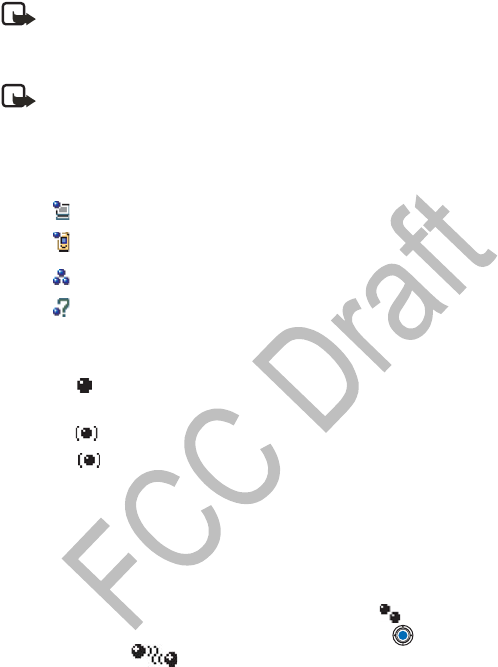
[ 148 ]
Note: Data received by a Bluetooth connection can be found in the
Inbox folder in Messaging. See “Inbox” on p. 90 for further
information.
Note: If sending fails, the message or data will be deleted. The Drafts
folder in Messaging does not store messages sent by a Bluetooth
connection.
Check the status of the Bluetooth connection
• When is shown in the standby mode, the Bluetooth application is
active.
• When is blinking, your phone is trying to connect to the other device.
• When is shown continuously, the Bluetooth connection is active.
Paired devices view
Options in the paired devices view are: New paired device, Connect /
Disconnect, Assign short name, Delete, Delete all, Set as authorized / Set as
unauthorized, Help, and Exit.
Pairing with a device makes device searches easier and quicker. Paired
devices are easier to recognize; they are indicated by in the search
result list. In the Bluetooth application main view, press to open a list
of paired devices ( ).
PAIR WITH A DEVICE
1Select Options→ New paired device in the Paired devices view. The
phone starts to search for devices within range. Or, if you have searched
Icons for different Bluetooth enabled devices
Computer
Phone
Other
Unknown

[ 149 ]
Connectivity
for Bluetooth devices earlier, a list of the devices that were found
previously is shown first. To start a new search, select More devices.
2Scroll to the device you want to pair with and press Select.
3Exchange passcodes. See “Send data using Bluetooth connection” on
p. 146. The device is added to the Paired devices list.
You can also play phone-to-phone games using a Bluetooth connection.
CANCEL PAIRING
• In the Paired devices view, scroll to the device whose pairing you want
to cancel and press or select Options→ Delete. The device is
removed from the Paired devices list and the pairing is cancelled.
• If you want to cancel all pairings, select Options→ Delete all.
Note: If you are currently connected to a device and delete the
pairing with that device, pairing is removed immediately but the
connection will remain active.
ASSIGN SHORT NAMES FOR PAIRED DEVICES
You can define a short name (nickname, alias) to help you recognize a
certain device. This name is stored in the phone memory and cannot be
seen by other Bluetooth device users.
Example: Give a short name to your friend’s Bluetooth enabled device or
to your own computer to be able to recognize it more easily.
To assign a short name, scroll to the device and select Options→ Assign
short name. Write the short name and press OK.
Note: Choose a name which is easy to remember and recognize. Later
when you are searching for devices or a device is requesting a
connection, the name you have chosen will be used to identify the
device.
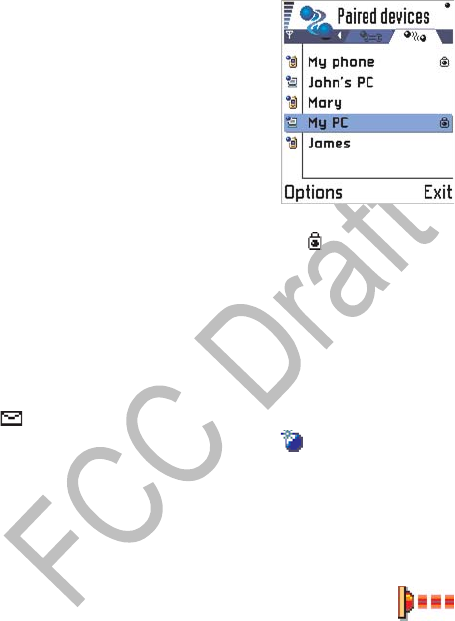
[ 150 ]
SET A DEVICE TO BE AUTHORIZED OR UNAUTHORIZED
After you have paired with a device, you can
set it to be authorized or unauthorized:
Unauthorized (default)—Connection requests
from this device need to be accepted separately
every time.
Authorized—Connections between your
phone and this device can be made without
your knowledge. No separate acceptance or
authorization is needed. Use this status for
your own devices, for example, your PC, or
devices that belong to someone you trust. The icon is added next to
authorized devices in the Paired devices view.
In the Paired devices view, scroll to the device and select Options→ Set
as authorized / Set as unauthorized.
Receive data using a Bluetooth connection
When you receive data through a Bluetooth connection, a tone sounds
and you are asked if you want to accept the Bluetooth message. If you
accept, is shown and the item is placed in the Inbox folder in
Messaging. Bluetooth messages are indicated by . See “Inbox” on p. 90
for further information.
Disconnect a Bluetooth connection
A Bluetooth connection is disconnected automatically after sending or
receiving data.
• INFRARED CONNECTION
To start infrared, go to Menu→ Connect.→ Infrared
Using infrared, you can send or receive data such as business cards and
calendar notes to and from a compatible phone or data device.
Do not point the IR (infrared) beam at anyone's eye or allow it to interfere
with other IR devices. This device is a Class 1 Laser product.

[ 151 ]
Connectivity
Send and receive data using infrared
Note: All items which are received by infrared are placed in the
Inbox folder in Messaging. New infrared messages are indicated by
. See “Inbox” on p. 90 for further information.
1Make sure that the infrared ports of the sending and receiving devices
are pointing at each other and that there are no obstructions between
the devices. The preferable distance between the two devices is three
feet at most. To find the infrared port, see the picture of the different
keys in the General information section of this guide.
2The user of the receiving device activates the infrared port.
To activate the infrared port of your phone to receive data by infrared,
go to Menu→ Connect.→ Infrared and press .

[ 152 ]
3The user of the sending device selects the desired infrared function to
start data transfer.
To send data by infrared, select Options→ Send→ Via infrared in
an application.
If data transfer is not started within two minutes after the activation of
the infrared port, the connection is cancelled and must be started again.
You can also play phone-to-phone games using infrared.
Example: To send a contact card by infrared: (1) Ask the receiver to
activate the infrared port in his/her device. (2) Go to Contacts, scroll to a
card and select Options→ Send→ Via infrared.
Note: Windows 2000: To be able to use infrared to transfer files
between your Nokia 3620 or Nokia 3660 and a compatible
computer, go to “Control Panel” and select “Wireless Link”. In the
“Wireless Link” “File Transfer” tab check the “Allow others” to send
files to your computer using infrared.
Check the status of the infrared connection
• When blinks, your phone is trying to connect to the other device
or a connection has been lost.
• When is shown continuously, the infrared connection is active
and your phone is ready to send and receive data through its infrared
port.
• CONNECT YOUR PHONE TO A COMPUTER
For further information on how to make a connection to a compatible
computer through infrared or a Bluetooth connection and how to install
PC Suite, see “PC Suite” on page 154. For further information on how to
use the PC Suite application, see the PC Suite online help.
Use the CD-ROM
The CD-ROM should launch itself after you have inserted it into the
CD-ROM drive of your compatible PC. If not, proceed as follows:

[ 153 ]
Connectivity
1Click the Window Start button and select Programs→ Windows
Explorer.
2On the CD-ROM drive, locate a file called Nokia3620_3660.exe and
double-click it. The CD-ROM interface opens.
3You can find PC Suite in the ‘Install’ section. When you launch the file,
an installation wizard will guide you through the installation process.
• USE YOUR PHONE AS A MODEM
To use your phone as a modem, go to Menu→
Connect.→ Modem.
Using your phone as a modem, you can connect to the Internet and send
or receive faxes with a computer. You can use an infrared or a Bluetooth
connection.

[ 154 ]
18 PC Suite
With PC Suite you can:
• Share information between your PC and phone.
• Make back-up copies of the phone files to protect data in case of loss
or damage.
• Synchronize your calendar, contacts, and tasks with Microsoft and
Lotus applications.
• Copy and move files between your PC and phone.
• Copy contacts and calendar information from another Nokia mobile
phone, Nokia communicator, or Palm device to your Nokia 3620 or
Nokia 3660 phone.
• Configure phone settings.
• Install software on your phone.
Please refer to other sections of this user guide for instructions on
operation, care, and maintenance of your Nokia phone, including
important safety information.
• PC SUITE DOCUMENTATION AND HELP
The following documentation is available to assist you with installing and
using PC Suite:
•Nokia 3620 and Nokia 3660 User Guide—This section of the user guide
explains how to install PC Suite on a compatible PC, how to connect
your phone to the PC, and how to start using PC Suite.
•PC Suite online help—For more detailed instructions and
troubleshooting on the use of PC Suite, please refer to the online help
that is automatically installed on your PC when you install PC Suite.
To access the online help, click the Start button, select Programs and
point to PC Suite for Nokia 3620 and Nokia 3660, and then click the
file with Help in the title.

[ 155 ]
PC Suite
•PC Suite Readme file—The Readme file is automatically installed on your
PC when you install PC Suite. It is recommended that you read this
file before using PC Suite. Also, if you have problems installing or
starting the application, you may find some troubleshooting
assistance in this file. To access the readme file, click the Start button,
select Programs, point to PC Suite for Nokia 3620 and Nokia 3660,
and click the file with Readme.txt in the title.
• SOFTWARE AND HARDWARE REQUIREMENTS
To install and run PC Suite, you need:
• A compatible PC running Windows 98, Windows ME, Windows 2000
with Service Pack 2, or Windows XP.
• At least 110 MB of free disk space.
To connect your Nokia 3620 or Nokia 3660 phone to the PC, you need to
have one of the following:
• An infrared connection: an infrared port on the computer.
• A Bluetooth connection: a Bluetooth card and the required software,
or built-in support for Bluetooth connectivity on the PC. To be able to
connect your Nokia 3620 or Nokia 3660 phone to your PC, the
Bluetooth software needs to support the Serial Port Profile (SPP).
• INSTALL PC SUITE
PC Suite is in the “Install” section of the CD-ROM included in the
Nokia 3620 or Nokia 3660 package. The CD-ROM should launch
automatically after you have inserted it into the CD-ROM drive of your PC.
If not, proceed as follows:
1Click the Windows Start button, point to Programs, and select
Windows Explorer.
2Go to the CD-ROM root directory and double-click the
Nokia3620_3660.exe file. The CD-ROM user interface opens.
When the CD-ROM interface is open, proceed as follows:

[ 156 ]
1Click Install.
2Locate the Install now section and click PC Suite for Nokia 3620 and
Nokia 3660 (depending on your phone model).
3Select the language for the installation and click Next to start the
installation wizard. This wizard will guide you through the installation
process. It is recommended that you accept the suggested destination
folder and program folder.
4As you go through the installation wizard, make sure that the Install
the Nokia Connectivity SDK check box is selected in the Data Import
dialog box if you want to transfer calendar and contacts data from
another Nokia mobile phone to your Nokia 3620 or Nokia 3660
phone. If you do not install the Nokia Connectivity SDK component,
you can only transfer data to your Nokia 3620 or Nokia 3660 from the
Nokia 3600, Nokia 3650, Nokia 7650, Nokia 9210 Communicator,
Nokia 9290 Communicator, a Palm device, or another Nokia 3620 or
Nokia 3660.
5In the File Transfer Video and Audio Converters dialog box it is
recommended that you leave the Install Video and Audio Converters
check box selected. When the converters are installed, video and
audio format files that you copy from the PC to your Nokia 3620 or
Nokia 3660 are automatically converted to the video and audio
formats used by the phone.
If you do not have the CD-ROM, you can download the PC Suite software
from www.nokiausa.com. From the home page, select Phones and
Software. Enter your phone model and follow screen instructions to
download the PC Suite installation file. Once the installation file is
downloaded, go to the directory where you downloaded it and
double-click it. Follow the instructions on the screen to install the
software.
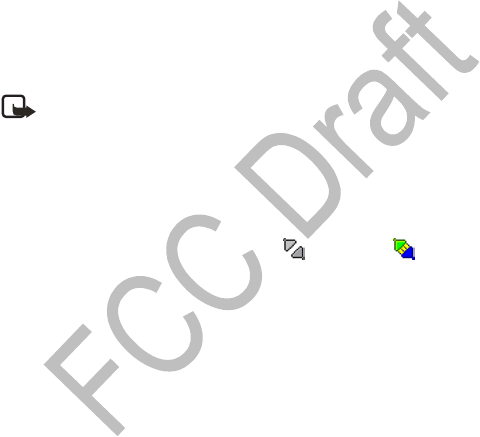
[ 157 ]
PC Suite
• CONNECT YOUR PHONE TO THE PC
When you use PC Suite for the first time, you must connect your phone to
the PC. Thereafter, you can use PC Suite whether or not your phone is
connected to your PC. You can connect your phone to the PC through an
infrared or Bluetooth connection.
See the following online help topics for details:
• Connecting your Nokia 3620 or Nokia 3660 phone to a PC
•Disconnecting and reconnecting your Nokia 3620 or Nokia 3660
phone to a PC
See “PC Suite documentation and help” on page 154 to locate the online
help.
Note: When you connect your phone to your PC, PC Suite
automatically synchronizes the clock on the phone with the PC.
Therefore, you need to make sure that the clock on your PC is
correct.
If you have problems connecting your phone to the PC, check to see if
both your phone and PC are switched on and that you have selected the
correct communications port. Check the icons on the taskbar to see the
connection status. The connection icon changes to when your
phone is connected to the PC. You can double-click on this icon in your
Windows taskbar to open a Connection Properties window that identifies
which communications port PC Suite is using.
• START PC SUITE
You can start PC Suite from the Start menu: click the Start button, select
Programs, select the PC Suite for Nokia 3620 and Nokia 3660 folder, and
then click PC Suite for Nokia 3620 and Nokia 3660.
If you are connecting your phone to the PC for the first time, after starting
PC Suite you are asked to do two things:
• Name your phone.
You can use more than one Nokia 3620 or Nokia 3660 phone with PC

[ 158 ]
Suite. To be able to identify individual phones, you must give a name
to each phone.
• Select tasks to be created.
To be able to back up and synchronize information between your phone
and PC, you must have the appropriate tasks created. During the first
connection, PC Suite lists tasks that can be created automatically. You
do not have to create these tasks at this point, if you do not want to.
However, if you create the tasks, you can edit them later.
For more detailed information, refer to the PC Suite online help (see “PC
Suite documentation and help” on page 154).
• ONLINE AND OFFLINE MODES
You can use PC Suite either in online mode or in offline mode. You have
the following options:
• Work online—Connect your phone to the PC and let PC Suite identify
it. In online mode your phone is connected to your compatible PC, and
you can work with the information stored on the phone.
• Work offline—Leave your phone disconnected and choose the name
of your phone from a list of named devices.
The menus and other available options in offline mode differ from those
of online mode.
• CONNECTION STATUS
The icon on the right-hand side of the status bar and on the Windows
taskbar displays the connection status as follows:
Disconnected
Connected
Transferring data (animated icon)
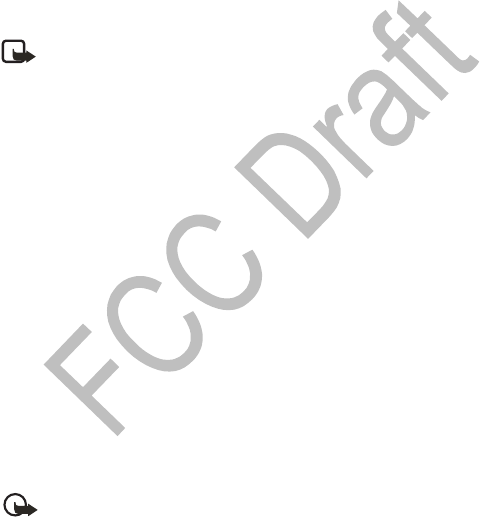
[ 159 ]
PC Suite
• PC SUITE APPLICATIONS
A number of icons are displayed on the left-hand side of the main PC Suite
window—this area is known as the application bar. To use an application,
click its icon. For information on using an application, see the online help.
Backup/Restore
With Backup/Restore, you can back up information on your phone. If you
ever lose information from your phone (for example, through accidental
deletion), or need to refer to an earlier, backed up version, you can restore
it to your phone. Backup/Restore supports Memory cards.
Note: Operator logos, ringing tones (polyphonic ringing tones
(MIDI) and single tones) and Java-applications that you have
installed on your phone after you first started using it are not saved
during backup. Therefore, these items cannot be restored. Only the
original Nokia 3620 and Nokia 3660 ringing tones are saved.
Control Panel
You can use Control Panel to change some of the general settings of
PC Suite. The following features are included in Control Panel:
•Connection enables you to specify the port that PC Suite uses when
attempting to connect to a phone.
•Data Location enables you to specify where you want to store
backups and synchronization files.
•File Converters enables you to select which, if any, video and audio
converters are used when files are copied to the phone using File
Transfer.
•Device Manager enables you to see which phones have been
connected to your PC, and to remove details of phones that you no
longer want to connect.
Important:You cannot restore information that you have removed
using Device Manager.

[ 160 ]
Data Import
With Data Import, you can transfer contacts and calendar data to your
Nokia 3620 or Nokia 3660 from the Nokia 3320, Nokia 3360, Nokia 3600,
Nokia 3620, Nokia 3650, Nokia 3660, Nokia 6210, Nokia 6250, Nokia 6310,
Nokia 6310i, Nokia 6320, Nokia 6340, Nokia 6360, Nokia 6370, Nokia 6385,
Nokia 6510, Nokia 6590, Nokia 6610, Nokia 6650, Nokia 7110, Nokia 7160,
Nokia 7190, Nokia 7210, Nokia 7650, Nokia 8210, Nokia 8290, Nokia 8310,
Nokia 8390, Nokia 8810, Nokia 8850, Nokia 8890, Nokia 8910, Nokia 9210
Communicator, Nokia 9290 Communicator, or Palm device.
Synchronize
With Synchronize, you can synchronize your phone contacts and calendar
data with Microsoft and Lotus applications.
To be able to synchronize, you must have tasks created for synchronization.
When you connect your phone to your PC for the first time, PC Suite
identifies your phone and creates a number of tasks. You can modify these
tasks and create other tasks if you want. You can also schedule tasks to
be run at regular intervals, every time you connect your phone to your PC,
or on command only.
The animated icon appears on the Windows taskbar when
synchronization is in progress. The icon indicates that the data
on your phone is being synchronized with the data on the PC.
File Transfer
With File Transfer, you can copy files between your phone and your PC, as
well as delete and rename selected files. With the Multimedia converters,
video and audio format files that you copy from the PC to your phone are
automatically converted to the video and audio format used by the phone.
Image Transfer
With Image Transfer, you can copy, move, rename, and delete image files
on your phone and your PC. You can also view image files if there is an
associated viewer application.
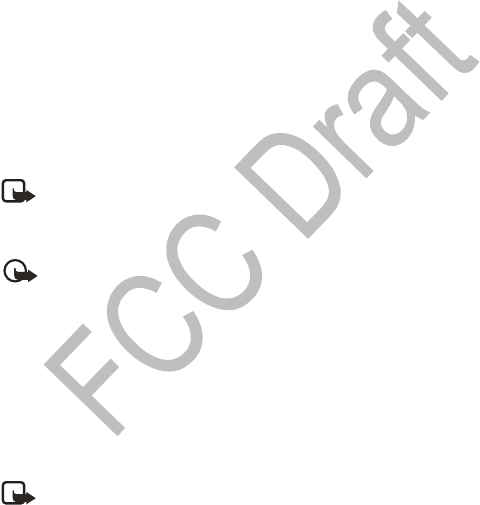
[ 161 ]
PC Suite
Settings wizard
With the Settings wizard, you can configure the e-mail account, remote
connection, message center, and multimedia message center settings of
your phone. For example, you can manage settings manually or copy a
working configuration from the PC to the phone. You can also back up
your phone settings to a file.
Install software on your phone
With PC Suite, you can install Java and device software on your phone.
These applications do not have an icon on the application bar. Instead, you
can start these applications from the Tools menu. See the Installing
software online help topic for details.
Installation packages can be received in a multimedia message, as an
e-mail attachment, by Bluetooth connection, or by infrared and
downloaded to your phone. If you are using PC Suite to transfer the file,
save it to the c:\nokia\installs folder.
Note: You can only use Java installation files with the extension
.jad or .jar, and device software installation files with the extension
.sis.
Important:Only install software from sources that offer adequate
protection against viruses and other harmful software.
• REMOVE PC SUITE FROM YOUR PC
Uninstalling PC Suite removes all files and folders that were added by
the PC Suite installation program, but does not remove backed-up and
archived files or synchronization information. Therefore, if you reinstall
PC Suite you can back up, restore, and synchronize using the same
settings as before.
Note: If you want to remove backed-up files, synchronizations, and
other information relating to the phones you have connected, you
must do this before removing PC Suite. For further information, see
the Viewing and removing details of a Nokia 3620 or Nokia 3660
online help topic.

[ 162 ]
To remove PC Suite, proceed as follows:
1Click the Windows Start button, point to Settings, and
click Control Panel.
2Double-click Add/Remove Programs.
3Select PC Suite for Nokia 3620 and Nokia 3660 from the list of
installed programs, and click Add/Remove.
A confirmation dialog box opens.
4Confirm that you want to remove the PC Suite software from your PC.
After confirming that you want to remove PC Suite, the uninstall
program removes the program files and informs you that you need to
restart your PC to complete the uninstall process. When your PC
restarts, the uninstall program completes the removal of PC Suite
from your PC.
Note: Uninstalling PC Suite does not remove the Nokia
Connectivity SDK. You can remove the Nokia Connectivity SDK
from your PC using the Add/Remove Programs application of the
Windows Control Panel.
The uninstall program leaves some files on your PC that contain
information about the Nokia devices you have connected to your PC. If
you decide to reinstall PC Suite, you will be able to continue using
PC Suite as before.
Note: Remember to make back-up copies of all important data to
protect against possible loss or alteration.
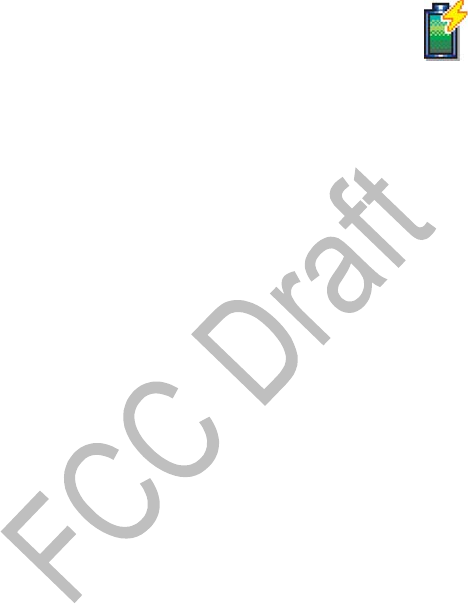
[ 163 ]
Reference information
19 Reference information
• BATTERY STATEMENTS
Charging and discharging
Your phone is powered by a rechargeable battery.
Note that a new battery’s full performance is achieved only after two or
three complete charge and discharge cycles!
The battery can be charged and discharged hundreds of times but it will
eventually wear out. When the operating time (talk-time and standby
time) is noticeably shorter than normal, it is time to buy a new battery.
Use only batteries approved by the phone manufacturer and recharge your
battery only with the chargers approved by the manufacturer. Unplug the
charger when not in use. Do not leave the battery connected to a charger
for longer than a week, since overcharging may shorten its lifetime. If left
unused a fully charged battery will discharge itself over time.
Temperature extremes can affect the ability of your battery to charge.
Use the battery only for its intended purpose.
Never use any charger or battery that is damaged.
Do not short-circuit the battery. Accidental short-circuiting can occur
when a metallic object (coin, clip or pen) causes direct connection of the
+ and - terminals of the battery (metal strips on the battery) for example
when you carry a spare battery in your pocket or purse. Short-circuiting
the terminals may damage the battery or the connecting object.
Leaving the battery in hot or cold places, such as in a closed car in summer
or winter conditions, will reduce the capacity and lifetime of the battery.
Always try to keep the battery between 15°C and 25°C (59°F and 77°F). A
phone with a hot or cold battery may temporarily not work, even when
the battery is fully charged. Battery performance is particularly limited in
temperatures well below freezing.
Do not dispose of batteries in a fire!
Dispose of batteries according to local regulations (e.g. recycling). Do not
dispose as household waste.
Remove the battery only when the phone is switched off.

[ 164 ]
• USE PROPER CARE AND MAINTENANCE
Your phone is a product of superior design and craftsmanship and should
be treated with care. The suggestions below will help you to fulfill any
warranty obligations and to enjoy this product for many years.
• Keep the phone and all its parts and accessories out of the reach of
small children.
• Keep the phone dry. Precipitation, humidity and all types of liquids or
moisture can contain minerals that will corrode electronic circuits.
• Do not use or store the phone in dusty, dirty areas. Its moving parts
can be damaged.
• Do not store the phone in hot areas. High temperatures can shorten
the life of electronic devices, damage batteries, and warp or melt
certain plastics.
• Do not store the phone in cold areas. When it warms up (to its normal
temperature), moisture can form inside, which may damage electronic
circuit boards.
• Do not attempt to open the phone. Non-expert handling may damage it.
• Do not drop, knock or shake the phone. Rough handling can break
internal circuit boards.
• Do not use harsh chemicals, cleaning solvents, or strong detergents
to clean the phone.
• Do not paint the phone. Paint can clog the moving parts and prevent
proper operation.
• Use only the supplied or an approved replacement antenna.
Unauthorized antennas, modifications or attachments could damage
the phone and may violate regulations governing radio devices.
All of the above suggestions apply equally to your phone, battery, charger
or any accessory. If any of them is not working properly, take it to your
nearest qualified service facility. The personnel there will assist you and,
if necessary, arrange for service.

[ 165 ]
Reference information
• UNDERSTAND IMPORTANT SAFETY INFORMATION
Traffic Safety
Do not use a hand-held telephone while driving a vehicle. Always secure
the phone in its holder; do not place the phone on the passenger seat or
where it can break loose in a collision or sudden stop.
Remember road safety always comes first!
Operating environment
Remember to follow any special regulations in force in any area and always
switch off your phone whenever it is forbidden to use it, or when it may
cause interference or danger.
Use the phone only in its normal operating positions.
Parts of the phone are magnetic. Metallic materials may be attracted to
the phone, and persons with a hearing aid should not hold the phone to
the ear with the hearing aid. Always secure the phone in its holder, because
metallic materials may be attracted by the earpiece. Do not place credit
cards or other magnetic storage media near the phone, because information
stored on them may be erased.
Electronic devices
Most modern electronic equipment is shielded from radio frequency (RF)
signals. However, certain electronic equipment may not be shielded against
the RF signals from your wireless phone.
PACEMAKERS
Pacemaker manufacturers recommend that a minimum separation of
6 in (15.3 cm) be maintained between a wireless phone and a pacemaker
to avoid potential interference with the pacemaker. These
recommendations are consistent with the independent research by and
recommendations of Wireless Technology Research. To minimize the
potential for interference, persons with pacemakers should
• Always keep the device more than 6 in (15.3 cm) from their
pacemaker when the device is switched on

[ 166 ]
• Not carry the device in a breast pocket
• Hold the device to the ear opposite the pacemaker
If you have any reason to suspect that interference is taking place, switch
off your device immediately.
HEARING AIDS
Some digital wireless phones may interfere with some hearing aids. In the
event of such interference, you may want to consult your service provider.
Other medical devices
Operation of any radio transmitting equipment, including cellular phones,
may interfere with the functionality of inadequately protected medical
devices. Consult a physician or the manufacturer of the medical device to
determine if they are adequately shielded from external RF energy or if you
have any questions. Switch off your phone in health care facilities when
any regulations posted in these areas instruct you to do so. Hospitals or
health care facilities may be using equipment that could be sensitive to
external RF energy.
Vehicles
RF signals may affect improperly installed or inadequately shielded
electronic systems in motor vehicles (e.g. electronic fuel injection systems,
electronic anti-skid (anti-lock) braking systems, electronic speed control
systems, air bag systems). Check with the manufacturer or its representative
regarding your vehicle. You should also consult the manufacturer of any
equipment that has been added to your vehicle.
Posted facilities
Switch your phone off in any facility where posted notices so require.
Potentially explosive atmospheres
Switch off your phone when in any area with a potentially explosive
atmosphere and obey all signs and instructions. Sparks in such areas could
cause an explosion or fire resulting in bodily injury or even death.

[ 167 ]
Reference information
Users are advised to switch off the phone when at a refueling point
(service station). Users are reminded of the need to observe restrictions on
the use of radio equipment in fuel depots (fuel storage and distribution
areas), chemical plants or where blasting operations are in progress.
Areas with a potentially explosive atmosphere are often but not always
clearly marked. They include below deck on boats; chemical transfer or
storage facilities; vehicles using liquified petroleum gas (such as propane
or butane); areas where the air contains chemicals or particles, such as
grain, dust or metal powders; and any other area where you would normally
be advised to turn off your vehicle engine.
Vehicles
Only qualified personnel should service the phone, or install the phone in
a vehicle. Faulty installation or service may be dangerous and may invalidate
any warranty which may apply to the unit.
Check regularly that all wireless phone equipment in your vehicle is mounted
and operating properly.
Do not store or carry flammable liquids, gases or explosive materials in the
same compartment as the phone, its parts or accessories.
For vehicles equipped with an air bag, remember that an air bag inflates
with great force. Do not place objects, including both installed or portable
wireless equipment in the area over the air bag or in the air bag deployment
area. If in-vehicle wireless equipment is improperly installed and the air
bag inflates, serious injury could result.
Using your phone while in the air is prohibited. Switch off your phone
before boarding an aircraft. The use of wireless telephones in an aircraft
may be dangerous to the operation of the aircraft, disrupt the wireless
telephone network and may be illegal.
FCC regulations prohibit using your phone while in the air. Switch off your
phone before boarding an aircraft. The use of wireless telephones in an
aircraft may be dangerous to the operation of the aircraft, disrupt the
wireless telephone network and may be illegal.
Failure to observe these instructions may lead to suspension or denial of
telephone services to the offender, or legal action or both.

[ 168 ]
Emergency calls
Note: This phone, like any wireless phone, operates using radio
signals, wireless, and landline networks as well as user-programed
functions. Because of this, connections in all conditions cannot be
guaranteed. Therefore you should never rely solely upon any
wireless phone for essential communications (for example,
medical emergencies).
Emergency calls may not be possible on all wireless phone networks or
when certain network services and/or phone features are in use. Check
with local service providers.
To make an emergency call:
1If the phone is not on, switch it on. Check for adequate signal strength.
Some networks may require that a valid SIM card is properly inserted
in the phone.
2Press as many times as needed (e.g. to exit a call, to exit a menu,
etc.) to clear the display and ready the phone for calls.
3Key in the emergency number for your present location (e.g. 911 or
other official emergency number). Emergency numbers vary by
location.
4Press the key.
If certain features are in use, you may first need to turn those features off
before you can make an emergency call. Consult this guide and your local
cellular service provider.
When making an emergency call, remember to give all the necessary
information as accurately as possible. Remember that your wireless phone
may be the only means of communication at the scene of an accident—
do not cut off the call until given permission to do so.

[ 169 ]
Reference information
• CERTIFICATION INFORMATION (SAR)
THIS MODEL PHONE MEETS THE GOVERNMENT’S REQUIREMENTS FOR
EXPOSURE TO RADIO WAVES.
Your wireless phone is a radio transmitter and receiver. It is designed and
manufactured not to exceed the emission limits for exposure to radio
frequency (RF) energy set by the Federal Communications Commission of
the U.S. Government. These limits are part of comprehensive guidelines
and establish permitted levels of RF energy for the general population. The
guidelines are based on standards that were developed by independent
scientific organizations through periodic and thorough evaluation of
scientific studies. The standards include a substantial safety margin
designed to assure the safety of all persons, regardless of age and health.
The exposure standard for wireless mobile phones employs a unit of
measurement known as the Specific Absorption Rate, or SAR. The SAR
limit set by the FCC is 1.6W/kg.* Tests for SAR are conducted using
standard operating positions accepted by the FCC with the phone
transmitting at its highest certified power level in all tested frequency
bands. Although the SAR is determined at the highest certified power
level, the actual SAR level of the phone while operating can be well below
the maximum value. This is because the phone is designed to operate at
multiple power levels so as to use only the power required to reach the
network. In general, the closer you are to a wireless base station antenna,
the lower the power output.
Before a phone model is available for sale to the public, it must be tested
and certified to the FCC that it does not exceed the limit established by
the government-adopted requirement for safe exposure. The tests are
performed in positions and locations (for example, at the ear and worn on
the body) as required by the FCC for each model.
The highest SAR value for the Nokia 3620 model phone as reported to the
FCC when tested for use at the ear is 1.12 W/kg, and when worn on the
body, as described in this user guide, is 1.28 W/kg. The highest SAR value
for the Nokia 3660 model phone as reported to the FCC when tested for
use at the ear is 0.77 W/kg, and when worn on the body, as described in

[ 170 ]
this user guide, is 1.13 W/kg. (Body-worn measurements differ among
phone models, depending upon available enhancements and FCC
requirements).
While there may be differences between the SAR levels of various phones
and at various positions, they all meet the government requirement. The
FCC has granted an Equipment Authorization for this model phone with
all reported SAR levels evaluated as in compliance with the FCC RF
exposure guidelines. SAR information on this model phone is on file with
the FCC and can be found under the Display Grant section of http://
www.fcc.gov/oet/fccid after searching on FCC ID QFXNHM-10X for the
Nokia 3620 model and FCC ID QFXNHL-8X for the Nokia 3660 model.
For body worn operation, this phone has been tested and meets the FCC
RF exposure guidelines for use with a carry case, belt clip, or holder that
contains no metal and that positions the handset a minimum of 5/8-inch
(1.5 cm) from the body. Use of other carry cases, belt clips, or holders may
not ensure compliance with FCC RF exposure guidelines. If you do not use
a body-worn accessory and are not holding the phone at the ear, position
the handset a minimum of 5/8 inch (1.5 cm) from your body when the
phone is switched on.
*In the United States and Canada, the SAR limit for mobile phones used
by the public is 1.6 watts/kilogram (W/kg) averaged over one gram of
tissue. The standard incorporates a substantial margin of safety to give
additional protection for the public and to account for any variations in
measurements. SAR values may vary depending on national reporting
requirements and the network band. For SAR information in other regions
please look under product information at www.nokia.com/us.
• ACCESSORIES
Original Nokia accessories ensure the best possible operation of your
Nokia mobile phone in various conditions.
Specifications are subject to change without notice. The availability of
particular products and services may vary by region. Please check with the
Nokia dealer nearest you. Operations and some features are network
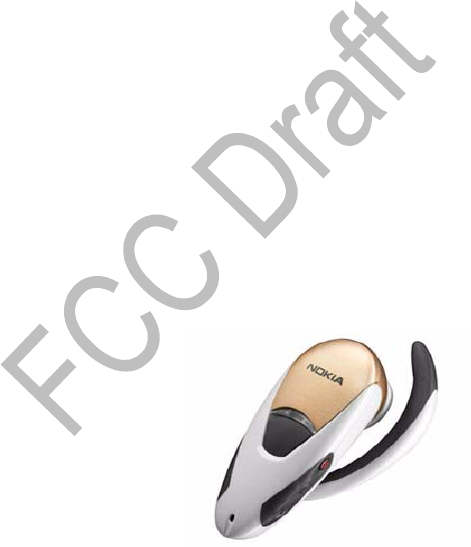
[ 171 ]
Reference information
dependent. Nokia enhancements enable the best possible operation of
your mobile phone in various conditions. Variation in operation times will
occur depending on SIM card, network and usage settings, usage style and
environments. Please check the availability of WAP services with your
network operator and/or WAP service provider. The availability of Bluetooth
wireless technology may vary by country and Bluetooth products are not
approved for use everywhere. Please check with the local authorities.
Use accessories safely
A few practical rules for accessory operation:
• Keep all accessories out of the reach of small children.
• When you disconnect the power cord of any accessory, grasp and pull
the plug, not the cord.
• Check regularly that any vehicle-installed accessories are mounted
and are operating properly.
• Installation of any complex car accessories must be made by qualified
personnel only.
• Use only batteries, chargers, and accessories that have been approved
by the phone manufacturer. The use of any other types could invalidate
any approval or warranty applying to the phone and could be dangerous.
Audio accessories
WIRELESS HEADSET HDW-2
The Nokia Wireless Headset
HDW-2 is designed with
Bluetooth technology and is
compatible with the Nokia
3620 and Nokia 3660 phones
and other phones supporting
the Bluetooth 1.1 specification
and Headset or Handsfree
profiles.
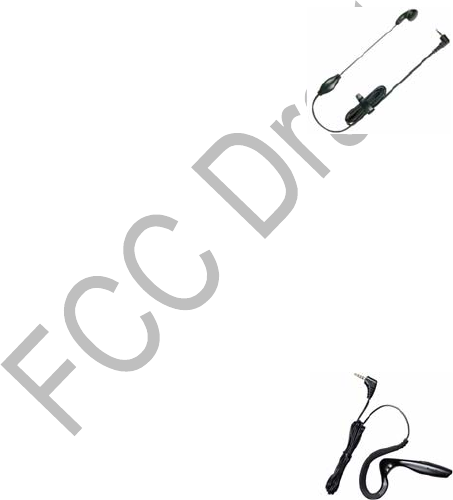
[ 172 ]
The compact headset gives hands-free control of your phone without
cables or wires. The earpiece fits in either ear allowing for convenient and
discreet access to all basic call controls. The Answer/End button lets you
answer and make calls, redial, and switch the audio back and forth
between the handset and headset. A separate volume control lets you
change the call volume as necessary while moving from place to place.
To maximize call security, the headset also supports encryption of the
wireless connection for compatible phone models.
HEADSET HDE-2
The HDE-2 headset is a small and lightweight
portable headset for easy handsfree operation.
It has a clip to hold the headset firmly in place.
HEADSET HDC-5
The HDC-5 headset, with a remote button,
connects directly to the phone. No extra adaptor
is required, and the remote control is provided.
DUAL HEADSET HDD-1
The HDD-1 Dual Headset provides comfortable handsfree operation with
a remote control button for answering and ending calls.
RETRACTABLE HEADSET HDC-10
The HDC-10 Retractable Headset is a compact headset with a retractable
mechanism and remote control.
BOOM HEADSET HDB-5
HDB-5 Headset provides handsfree functionality
and a new “over the ear” concept providing
excellent audio quality.
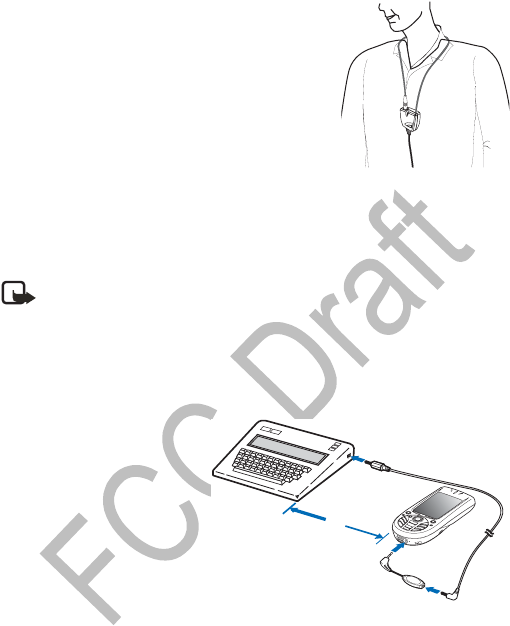
[ 173 ]
Reference information
MOBILE INDUCTIVE LOOPSET LPS-3
The LPS-3 Mobile Loopset gives people with
T-coil equipped hearing aids the ability to make
and receive calls without noise interference.
The Loopset is easy to use and gives
hearing-impaired users clear access to digital
telephony. You wear the Loopset around your
neck, connect it to your phone, and speak
directly toward the microphone.
If you are using a Loopset, you must activate it on your mobile phone by
selecting Menu→ Tools→ Settings→ Accessory→ Accessory in
use→Loopset
Note: The Loopset can be purchased separately as an accessory.
For operating instructions, refer to the booklet that comes with the
LPS-3.
For more information, see “Learn about accessibility solutions” on p. 5.
PHONE ADAPTER HDA-9
The HDA-9 Phone Adapter is
a Nokia accessory that
allows you to connect your
mobile phone to a
Telecommunications Device
for the Deaf (TTY/TDD) to
make a call in digital mode.
If you are using a Phone
Adapter, you must activate
it on your mobile phone by selecting Menu→ Tools→ Settings→
Accessory→ Accessory in use→TTY.
In addition to the Nokia 3620 or Nokia 3660 phone, you’ll need the
following for TTY/TDD communication:
• A TTY/TDD device that is “cellular ready” or “cellular compatible”
18 in.
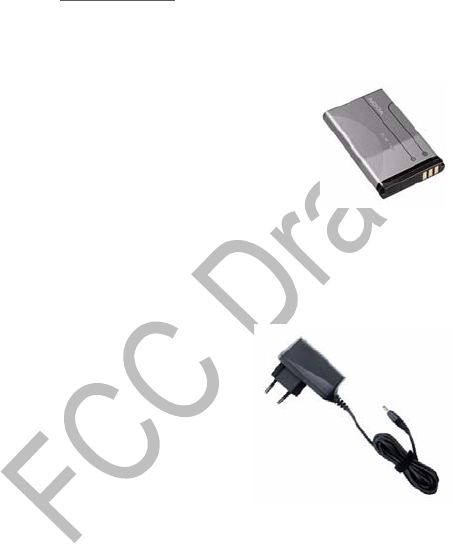
[ 174 ]
• A cable for connecting the TTY/TDD to your phone, usually supplied by
the manufacturer of the TTY/TDD device
• The Phone Adapter (HDA-9), which can be purchased separately as an
accessory at www.nokia.com
For more information, see “Learn about accessibility solutions” on p. 5.
Battery
The 850 mAh, Li-Ion based BL-5C battery provides
power in a thin and light package. It provides a talk
time of up to 2–4 hours and up to 150–200 hours
standby time. Charging time is 1 hour and 35 minutes.
Variation in operation times will occur depending
on SIM card, network and usage settings, usage
style and environments. Talk time is reduced by
5 percent if Enhanced Full Rate is active, and
increased by up to 30 percent if Half Rate is active.
Chargers
The Nokia 3620 and Nokia 3660 use the
ACP-12U standard charger and mobile
chargers LCH-9 and LCH-12. The LCH-12
mobile charger can be used with 12 Vdc
or 24 Vdc. The Nokia 3620 and Nokia 3660
phones are also compatible with the
ACP-12U and ACP-8U travel chargers.
Car accessories
WIRELESS CAR KIT CARK-112
The wireless car kit offers a convenient handsfree option in a car,
with a remote control button. The kit includes the Remote Control
Button CUW-2, Handsfree Unit HFW-1, Microphone HFM-8,
HF Speaker HFS-12, and power cable PCU-4.
ACP-12U
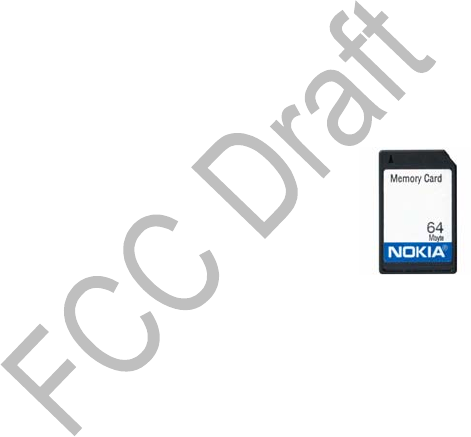
[ 175 ]
Reference information
MOBILE HOLDER MBC-16
The MBC-16 Mobile Holder has ergonomic release buttons and a swivel
mount. It supports use with the mobile charger and Plug-in HF Car Kit.
PLUG-IN HF CAR KIT PPH-1
This handsfree car kit includes a built-in speaker. It uses the
phone microphone, but also has a connector for an external
microphone, HFM-8.
HEADREST HANDSFREE BHF-2
This headrest installs on a car headrest for handsfree audio. The terminal
charges with the LCH-9 or LCH-12 mobile charger.
MICROPHONE HFM-8
This HFM-8 is a small, directional microphone.
Memory card
The 64 MB memory card provides removable storage
for your phone. The memory card increases available
memory and storage for your multimedia files like video
clips, and sound files, photos, messaging information, or
to backup information from your phone’s memory.
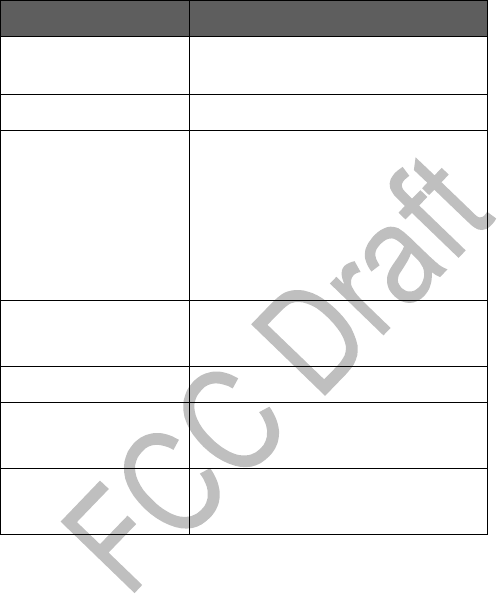
[ 176 ]
• NOKIA 3620 TECHNICAL INFORMATION
Feature Specification
Weight 4.5 oz (130 g) with 850-mAh Li-lon
battery
Size 139 cc
Frequency range Lowband 850
824–849 MHz (TX)
869–894 MHz (RX)
Highband 1900
1850–1910 MHz (TX)
1930–1990 MHz (RX)
Transmitter output
power
Lowband up to 2 W
Highband up to 1 W
Battery voltage 3.7 V nominal
Operating temperature 14°F to + 131°F
(-10°C to + 55°C)
Number of channels 124 lowband
299 highband
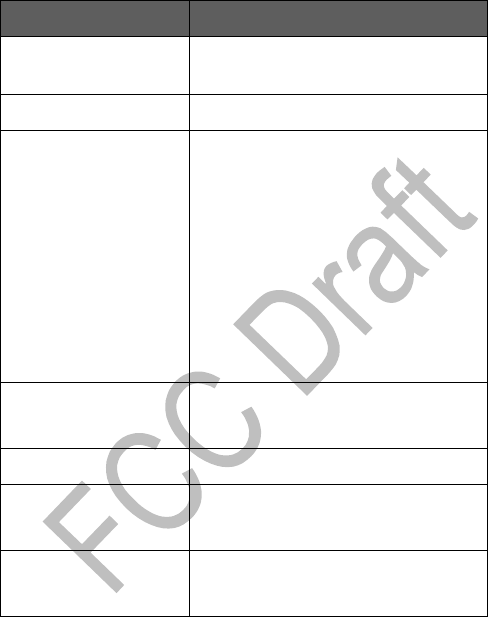
[ 177 ]
Reference information
• NOKIA 3660 TECHNICAL INFORMATION
Feature Specification
Weight 4.5 oz (130 g) with 850-mAh Li-lon
battery
Size 139 cc
Frequency range Lowband 900
880–915 MHz (TX)
925–960 MHz (RX)
Highband 1800
1710–1769 MHz (TX)
1805–1864 MHz (RX)
Highband 1900
1850–1910 MHz (TX)
1930–1990 MHz (RX)
Transmitter output
power
Lowband up to 2 W
Highband up to 1 W
Battery voltage 3.7 V nominal
Operating temperature 14°F to + 131°F
(-10°C to + 55°C)
Number of channels 194 lowband
299 highband

[ 178 ]
• TROUBLESHOOTING
If you experience problems with your phone, the information below may
help you resolve the problem. If you cannot find a solution in this user
guide, contact the Nokia Customer Care Center for further assistance.
See “Contact Nokia” on p. 4.
Memory low
When following notes are shown, the phone memory is low and you must
start to delete some data: Not enough memory to perform operation.
Delete some data first. or Memory low. Delete some data.
• To view what kind of data you have and how much memory the
different data groups consume, go to Manager and select Options→
Memory details. Delete the following items regularly:
• messages from the Inbox, Drafts, and Sent folders in Messaging
• retrieved e-mail messages from the phone memory
• saved browser pages
• images and photos in Images
• If you want to delete contact information, calendar notes, call timers,
call cost timers, game scores, or any other data, go to the respective
application to remove the data.
Note: If you are deleting multiple items and another of the
following notes is shown: Not enough memory to perform
operation. Delete some data first. or Memory low. Delete some
data. try deleting items one by one (starting from the smallest
item).
Clearing calendar memory
To remove more than one event at a time, go to the Month view, select
Options→ Delete, and select one of the following:
•Before date—to delete all calendar notes which take place before a
certain date. Enter the date before which all calendar notes will be
deleted.

[ 179 ]
Reference information
•All entries—to delete all calendar notes.
Erasing log information
To erase all the log contents, Recent calls log, and Messaging delivery
reports permanently, go to Logs and select Options→ Clear log or go to
Settings→ Log duration→ No log.
Different ways to store data
• Use PC Suite to take a backup copy of all data to your computer.
• Send images to your e-mail address and then save the images to your
computer.
• Send data by infrared or a Bluetooth connection to another device.

[ 180 ]
• Nokia ONE-YEAR LIMITED WARRANTY
Nokia Inc. (“Nokia”) warrants that this cellular phone (“Product”) is free
from defects in material and workmanship that result in Product failure
during normal usage, according to the following terms and conditions:
1The limited warranty for the Product extends for ONE (1) year beginning
on the date of the purchase of the Product. This one year period is
extended by each whole day that the Product is out of your possession
for repair under this warranty.
2The limited warranty extends only to the original purchaser (“Consumer”)
of the Product and is not assignable or transferable to any subsequent
purchaser/end-user.
3The limited warranty extends only to Consumers who purchase the
Product in the United States of America.
4During the limited warranty period, Nokia will repair, or replace, at
Nokia’s sole option, any defective parts, or any parts that will not
properly operate for their intended use with new or refurbished
replacement items if such repair or replacement is needed because
of product malfunction or failure during normal usage. No charge
will be made to the Consumer for any such parts. Nokia will also
pay for the labor charges incurred by Nokia in repairing or replacing
the defective parts. The limited warranty does not cover defects in
appearance, cosmetic, decorative or structural items, including framing,
and any non-operative parts. Nokia’s limit of liability under the limited
warranty shall be the actual cash value of the Product at the time the
Consumer returns the Product for repair, determined by the price paid
by the Consumer for the Product less a reasonable amount for usage.
Nokia shall not be liable for any other losses or damages. These remedies
are the Consumer’s exclusive remedies for breach of warranty.
5Upon request from Nokia, the Consumer must prove the date of the
original purchase of the Product by a dated bill of sale or dated
itemized receipt.

[ 181 ]
Reference information
6The Consumer shall bear the cost of shipping the Product to Nokia in
Melbourne, Florida. Nokia shall bear the cost of shipping the Product
back to the Consumer after the completion of service under this
limited warranty.
7The Consumer shall have no coverage or benefits under this limited
warranty if any of the following conditions are applicable:
a) The Product has been subjected to abnormal use, abnormal
conditions, improper storage, exposure to moisture or dampness,
unauthorized modifications, unauthorized connections,
unauthorized repair, misuse, neglect, abuse, accident, alteration,
improper installation, or other acts which are not the fault of
Nokia, including damage caused by shipping.
b) The Product has been damaged from external causes such as
collision with an object, or from fire, flooding, sand, dirt, windstorm,
lightning, earthquake or damage from exposure to weather
conditions, an Act of God, or battery leakage, theft, blown fuse,
or improper use of any electrical source, damage caused by computer
or internet viruses, bugs, worms, Trojan Horses, cancelbots or
damage caused by the connection to other products not
recommended for interconnection by Nokia.
c) Nokia was not advised in writing by the Consumer of the alleged
defect or malfunction of the Product within fourteen (14) days
after the expiration of the applicable limited warranty period.
d) The Product serial number plate or the accessory data code has
been removed, defaced or altered.
e) The defect or damage was caused by the defective function of the
cellular system or by inadequate signal reception by the external
antenna, or viruses or other software problems introduced into
the Product.
8Nokia does not warrant uninterrupted or error-free operation of the
Product. If a problem develops during the limited warranty period, the
Consumer shall take the following step-by-step procedure:
a) The Consumer shall return the Product to the place of purchase
for repair or replacement processing.

[ 182 ]
b) If “a” is not convenient because of distance (more than 50 miles)
or for other good cause, the Consumer shall ship the Product
prepaid and insured to:
Nokia Inc., Attn: Repair Department
795 West Nasa Blvd.
Melbourne, FL 32901
c) The Consumer shall include a return address, daytime phone
number and/or fax number, complete description of the problem,
proof of purchase and service agreement (if applicable). Expenses
related to removing the Product from an installation are not
covered under this limited warranty.
d) The Consumer will be billed for any parts or labor charges not
covered by this limited warranty. The Consumer will be responsible
for any expenses related to reinstallation of the Product.
e) Nokia will repair the Product under the limited warranty within
30 days after receipt of the Product. If Nokia cannot perform repairs
covered under this limited warranty within 30 days, or after a
reasonable number of attempts to repair the same defect, Nokia
at its option, will provide a replacement Product or refund the
purchase price of the Product less a reasonable amount for usage.
In some states the Consumer may have the right to a loaner if the
repair of the Product takes more than ten (10) days. Please contact
the Customer Service Center at Nokia at the telephone number
listed at the end of this warranty if you need a loaner and the
repair of the Product has taken or is estimated to take more than
ten (10) days.
f) If the Product is returned during the limited warranty period, but
the problem with the Product is not covered under the terms and
conditions of this limited warranty, the Consumer will be notified
and given an estimate of the charges the Consumer must pay to
have the Product repaired, with all shipping charges billed to the
Consumer. If the estimate is refused, the Product will be returned
freight collect. If the Product is returned after the expiration of
the limited warranty period, Nokia’s normal service policies shall
apply and the Consumer will be responsible for all shipping charges.

[ 183 ]
Reference information
9You (the Consumer) understand that the product may consist of
refurbished equipment that contains used components, some of
which have been reprocessed. The used components comply with
Product performance and reliability specifications.
10 ANY IMPLIED WARRANTY OF MERCHANTABILITY, OR FITNESS FOR A
PARTICULAR PURPOSE OR USE, SHALL BE LIMITED TO THE DURATION
OF THE FOREGOING LIMITED WRITTEN WARRANTY. OTHERWISE, THE
FOREGOING LIMITED WARRANTY IS THE CONSUMER’S SOLE AND
EXCLUSIVE REMEDY AND IS IN LIEU OF ALL OTHER WARRANTIES,
EXPRESS OR IMPLIED. NOKIA SHALL NOT BE LIABLE FOR SPECIAL,
INCIDENTAL, PUNITIVE OR CONSEQUENTIAL DAMAGES, INCLUDING
BUT NOT LIMITED TO LOSS OF ANTICIPATED BENEFITS OR PROFITS,
LOSS OF SAVINGS OR REVENUE, LOSS OF DATA, PUNITIVE DAMAGES,
LOSS OF USE OF THE PRODUCT OR ANY ASSOCIATED EQUIPMENT,
COST OF CAPITAL, COST OF ANY SUBSTITUTE EQUIPMENT OR FACILITIES,
DOWNTIME, THE CLAIMS OF ANY THIRD PARTIES, INCLUDING
CUSTOMERS, AND INJURY TO PROPERTY, RESULTING FROM THE
PURCHASE OR USE OF THE PRODUCT OR ARISING FROM BREACH OF
THE WARRANTY, BREACH OF CONTRACT, NEGLIGENCE, STRICT TORT,
OR ANY OTHER LEGAL OR EQUITABLE THEORY, EVEN IF NOKIA KNEW
OF THE LIKELIHOOD OF SUCH DAMAGES. NOKIA SHALL NOT BE LIABLE
FOR DELAY IN RENDERING SERVICE UNDER THE LIMITED WARRANTY,
OR LOSS OF USE DURING THE PERIOD THAT THE PRODUCT IS BEING
REPAIRED.
11 Some states do not allow limitation of how long an implied warranty
lasts, so the one year warranty limitation may not apply to you (the
Consumer). Some states do not allow the exclusion or limitation of
incidental and consequential damages, so certain of the above
limitations or exclusions may not apply to you (the Consumer). This
limited warranty gives the Consumer specific legal rights and the
Consumer may also have other rights which vary from state to state.

[ 184 ]
12 Nokia neither assumes nor authorizes any authorized service center
or any other person or entity to assume for it any other obligation or
liability beyond that which is expressly provided for in this limited
warranty including the provider or seller of any extended warranty or
service agreement.
13 This is the entire warranty between Nokia and the Consumer, and
supersedes all prior and contemporaneous agreements or understandings,
oral or written, relating to the Product, and no representation,
promise or condition not contained herein shall modify these terms.
14 This limited warranty allocates the risk of failure of the Product
between the Consumer and Nokia. The allocation is recognized by
the Consumer and is reflected in the purchase price.
15 Any action or lawsuit for breach of warranty must be commenced
within eighteen (18) months following purchase of the Product.
16 Questions concerning this limited warranty may be directed to:
Nokia Inc.
Attn: Customer Service
7725 Woodland Center Blvd., Ste. 150
Tampa, FL 33614
Telephone: 1-888-NOKIA-2U (1-888-665-4228)
Facsimile: (813) 287-6612
TTY/TDD Users Only: 1-800-24-NOKIA (1-800-246-6542)
17 The limited warranty period for Nokia supplied attachments and
accessories is specifically defined within their own warranty cards
and packaging.

[ 185 ]
Reference information
Manufactured or sold under one or more of the following US patents:
4868846 4945633 5001372 5101175 5151946 5173927 5212834 5230091
5241583 5311151 5317283 5331638 5335362 5353328 5371481 5378935
5384782 5396657 5400949 5416435 5442521 5446364 5479476 5526366
5553125 5557639 5565821 5570369 5581244 5600708 5625274 5677620
5692032 5729541 5760568 5794142 5802465 5809413 5827082 5839101
5844884 5845219 5870683 5884103 5889770 5907823 5912570 5914690
5914796 5917868 5920826 5956332 5956625 5956633 5966378 5977887
5987137 5991857 6006114 6011853 6014551 6014573 6026161 6035189
6038238 6043760 6047196 6049796 6050415 6055439 6060193 6069923
6072787 6081732 6084920 6084962 6094587 6097964 6105784 6112099
6115617 6119180 6121846 6128509 6138091 6140966 6144243 6144676
6148209 6151485 6151507 6163609 6164547 6167248 6185295 6188909
6249584 6259312 6266330 6272361 6282436 6292668 6295286 6311054
6314166 6324389 6324412 6347218 6363259 6370362 6370389 6377820
6381468 6392660 6400958 6453179 6463278 6470470 6487397 6522670
6198928 4969192 5266782 5390223 5444816 5487084 5640395 5664053
5699482 5701392 5722074 5754976 5805301 5835889 5857151 5859843
5862178 5898925 5930233 5946651 5960354 5960389 5963901 6005857
6011971 6031827 6118775 6128322 6137789 6167248 6170073 6178535
6195338 6199035 6240076 6266321 6285888 6356759 6377803 6430163
6438370 6456237 RE32580 5818437 5953541 6011554 4558302

[ 186 ]
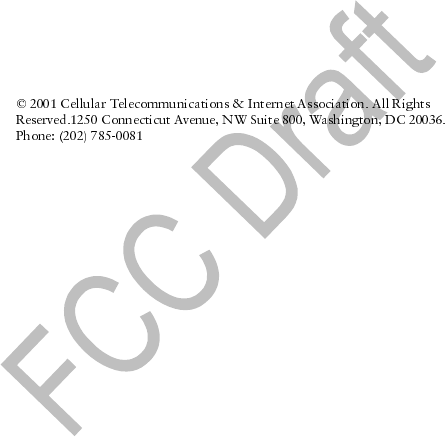
[ 187 ]
Message from the CTIA
Appendix A
Message from the CTIA
(Cellular Telecommunications
& Internet Association)
to all users of mobile phones.
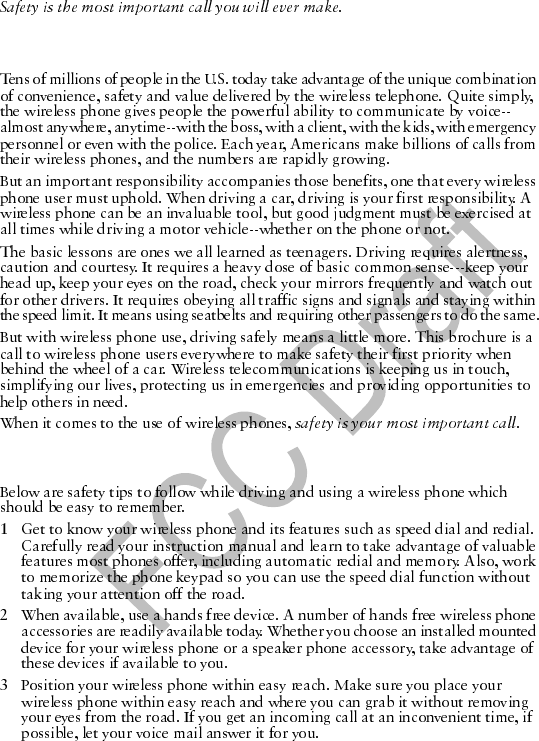
[ 188 ]
A Guide to Safe and Responsible Wireless Phone Use
Wireless Phone “Safety Tips”
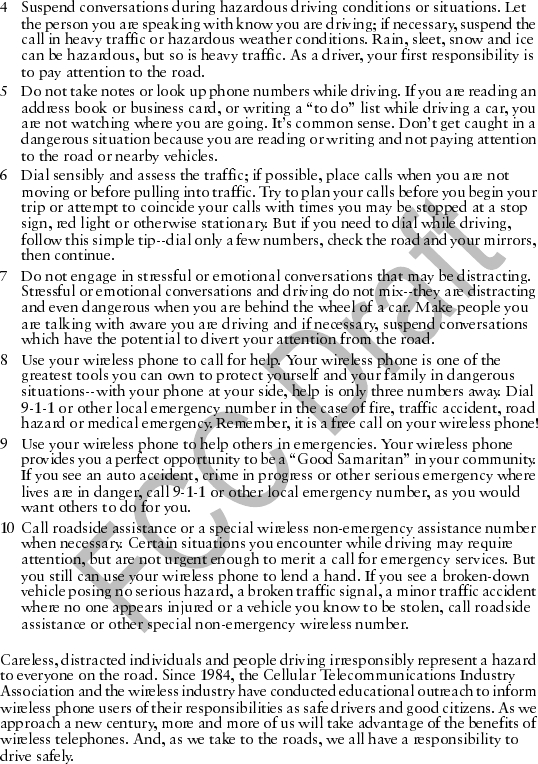
[ 189 ]
Message from the CTIA
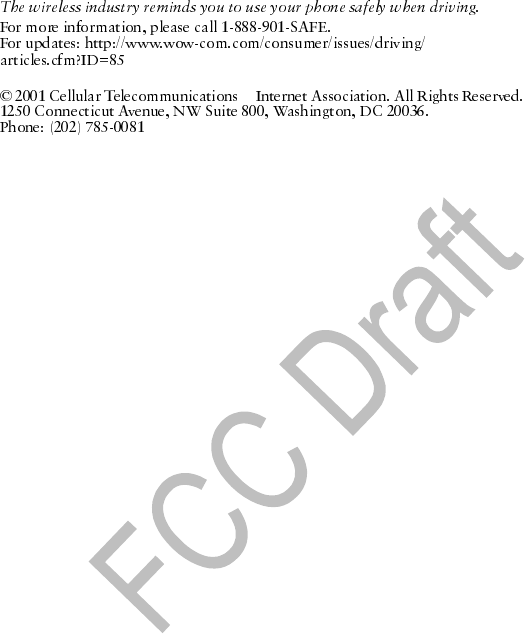
[ 190 ]
&
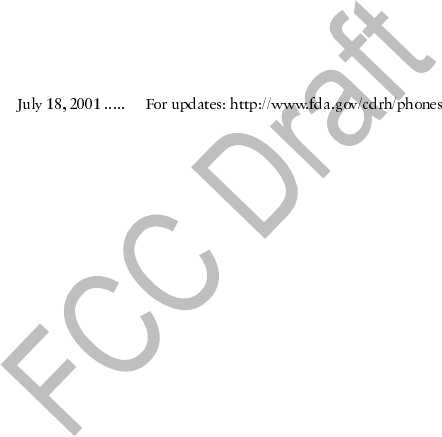
[ 191 ]
Message from the FDA
Appendix B
Message from the FDA
(U.S. Food and Drug
Administration) to all users of
mobile phones.
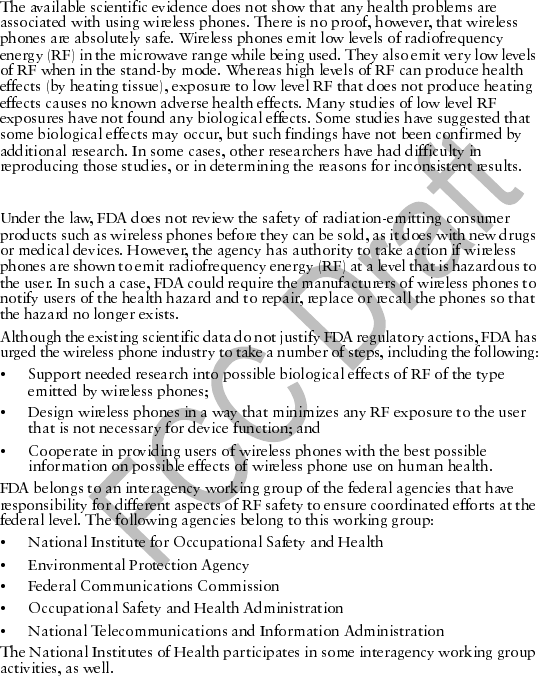
[ 192 ]
Consumer Update on Wireless Phones
U.S. Food and Drug Administration
1. Do wireless phones pose a health hazard?
2. What is FDA’s role concerning the safety of wireless phones?
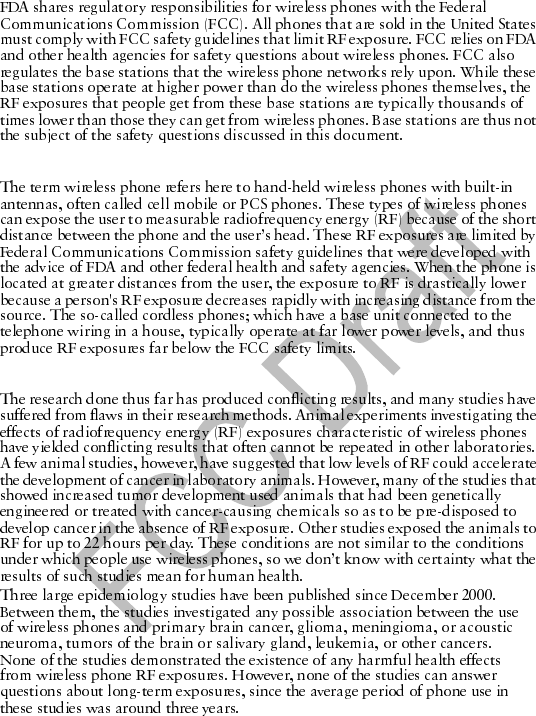
[ 193 ]
Message from the FDA
3. What kinds of phones are the subject of this update?
4. What are the results of the research done already?

[ 194 ]
5.What research is needed to decide whether RF exposure from wireless
phones poses a health risk?
6. What is FDA doing to find out more about the possible health effects
of wireless phone RF?
7. How can I find out how much radiofrequency energy exposure I can
get by using my wireless phone?
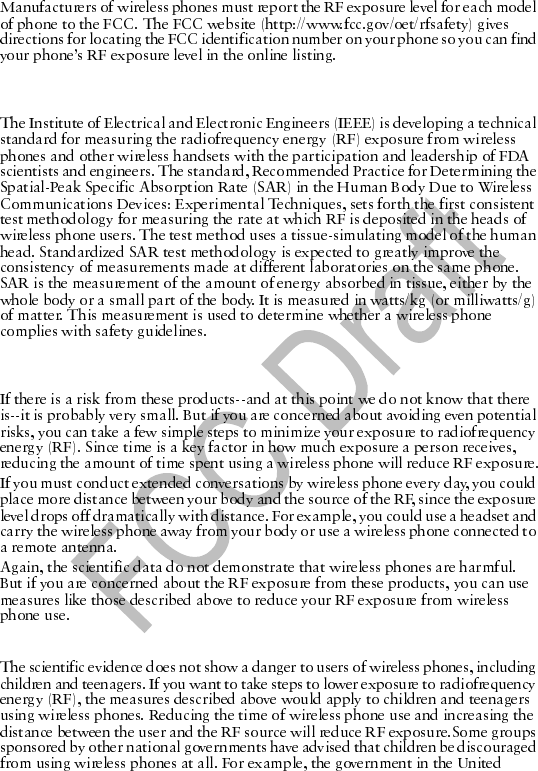
[ 195 ]
Message from the FDA
8. What has FDA done to measure the radiofrequency energy coming
from wireless phones?
9. What steps can I take to reduce my exposure to radiofrequency
energy from my wireless phone?
10. What about children using wireless phones?
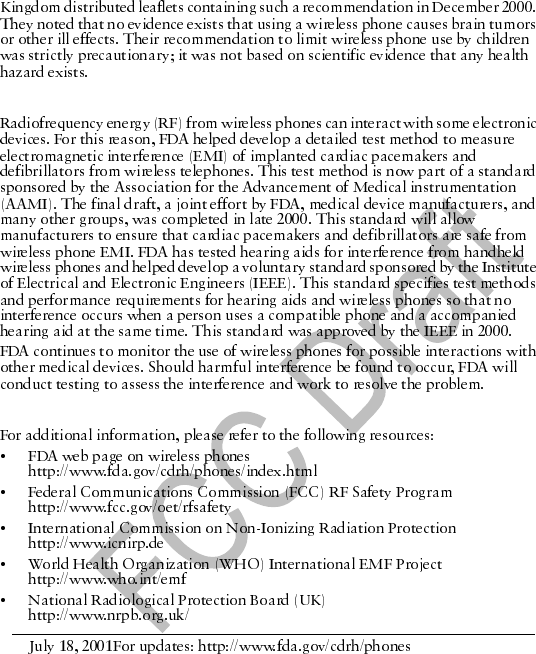
[ 196 ]
11. What about wireless phone interference with medical equipment?
12. Where can I find additional information?

[ 197 ]
Index
Numerics
1-touch dialing
Assign a phone number 57
Making calls 24
A
Access codes 46
Access points 38
Advanced settings 43
Settings 40
Accessibility solutions 5
See also Accessory (LPS-3 and
HDA-9)
Accessory 170
Activating 51, 173
HDA-9 Phone Adapter 173
LPS-3 Loopset 173
Settings 51
Activate loudspeaker 20
Alarm clock 123
Snooze 123
Animations 66
Answering a call 25
Automatic answer 51
Applications 137
Install a Java application 138
Java application settings 139
Open a Java application 139
Uninstall a Java application 139
Attachments 98
Audio files, See Media files
Automatic answer 51
B
Battery information 163
Battery saving mode 62
Bluetooth connection 144
Cancel pairing 149
Connection requests 147
Connection status indicators 148
Device icons 148
Disconnect 150
Paired devices short names 149
Pairing requests 147
Passcode 147
Receive data 150
Send data 146
Settings 146
Bookmarks
Add 131
Send 131
View 130
Browser
Access points, see Access points
Browsing 132
Connect 129
Empty memory 135
End connections 135

[ 198 ]
WAP pages 128
XHTML pages 128
Buffering 72
Business card, sending 58
C
Cache, emptying 135
Calculator 119
Calendar 11 3
Alarm 11 6
Calendar entry fields 11 4
Sending entries 11 7
Settings 11 6
Stopping alarms 117
Views 115
Call cost limit
Resetting the counter 31
Set by a service provider 30
Call register, See Log
Call restrictions 50
Calling 22
Calls
1-touch dialing 24
Answer 25
Charging units 30
Conference calls 24
Cost limit 30
Declining 25
Dialed 29
Duration 29
Forwarding 27
International 22
Missed 28
Options during a call 26
Received 28
Settings 36
Transferring 26
Using the Contacts directory 23
Camera 61
Battery saving mode 62
Image types 63
Memory card 64
Memory consumption 64
CD-ROM 152
Cell broadcast messages 101
Cell info display 51
Certificates 48
Trust settings 50
Charges
Packet data 40
Clearing memory
Calendar entries 178
Log information 179
Clip, See Video recorder
Clock 123
Alarm 123
Settings 123
Composer 120
Adjusting sound volume 120
Adjusting tempo 120
Changing tone style 120

[ 199 ]
Listening to tones 120
Computer connections 152
Conference calls 24
Connection indicators, See Icons
Connection settings 38
Contact cards
Adding voice tags 55
Assigning 1-touch dialing num-
bers 57
Assigning default numbers and
addresses 54
Attaching ringing tones 58
Changing voice tags 57
Creating 52
Deleting voice tags 57
Listening to voice tags 57
Remove ringing tones 58
Voice tags 55
Contact groups 59
Adding many members at the
same time 59
Adding ringing tones 58
Removing members 60
Converter 121
Adding exchange rates 122
Converting currencies 122
Converting units 122
Copying
Contacts between the SIM card
and phone memory 52
Text 82
Customer care 5
Cutting text 81
D
Data connections
Icons 15
Settings 38
Date, settings 45
Declining calls 25
Delete all entries 178
Deleting
Calendar entries 114
Contact cards 53
Delivery reports 76
Dialed numbers 29
Digital rights management 134
Display settings 36
DNS, Domain Name Service 43
DRM 134
DTMF tones 27
E
Editing
Calendar entries 113
Contact cards 53
Text 78
E-mail 88
Attachments 98
Deleting 99
Offline 96
Online 95

[ 200 ]
Opening 97
Remote mailbox 95
Retrieving from mailbox 96
Saving attachments 99
Settings 105
Emergency calls 168
Erasing
Call cost counters 31
Log 32
Recent calls log 29
F
Favorites 111
Adding a shortcut 111
File formats
JAD and JAR 140
RealOne Player 71
SIS file 140
Supported 99
Fixed dialing 47
Folders 19
Forwarding calls 25
G
General settings 34
GIF animations 66
GPRS, See Packet data
H
Handsfree, See Loudspeaker
Headset 21
High speed data 39
HSCSD, See High speed data
I
Icons
Accessory 15
Activity 14
Bluetooth connection 148
Browser 130
Calendar entries 115
Data connection 15
E-mail status 96
Favorites 111
In standby mode 13
Infrared 152
Messaging 90
Synchronization 11 5
To-do 118
Idle state, See Standby mode
Image modes 63
Images 65
Formats 67
Full screen 66
Keyboard shortcuts when viewing
images 67
Memory consumption 64
Moving the focal point 66
Organizing 67
Picture messages folder 68
Receive from a digital camera 65
Rotating 67
Viewing image details 67
Zooming 66

[ 201 ]
Indicators, See Icons
Info service 101
Infrared 150
Installing software 141
Internet access points (IAP)
See Access points
Internet service provider 38
IP address 43
ISDN 42
ISP, See Internet service provider
J
JAD and JAR files 140
Java, See Applications
JPEG 61
L
Language, for writing 35
Limit for call costs 30
Lock code 46
Log
Erasing contents 32
Filtering 32
Recent calls 28
Settings 33
Loopset, See Accessory
Loudspeaker
Activating 20
Turning off 21
M
Mailbox 95
Disconnecting 98
Making calls 22
Media files
File formats 71
Playing 71
Sending 73
Memory card 125
Camera 64
Consumption 127
Format 126
Password 126
Restore 126
Video clips 125
Memory low
Troubleshooting 178
Viewing memory consumption
127, 143
Menu 16
Menu key 16
Rearrange the main Menu 17
Messaging
Delivery reports 76
General settings 107
Inbox 90
Main view 75
Messages on the SIM card 101
Multimedia messages 85
My folders 94
Outbox 100
Picture messages 84
Save picture message graphics 68

[ 202 ]
Settings 102
Text messages 83
Writing e-mail 88
Writing text 78
Missed calls 28
Modem
GPRS access point 45
Initialization 44
Using your phone as a modem 153
Multimedia messages 85
Playing sounds 92
Re-playing sounds 92
Music files, See Media files
My folders 94
N
Notes 123
O
Offline 96
Online 95
Organizing, Menu 17
Outbox 100
P
Packet data 39
Connection timer 32
Data counter 32
Pricing 40
Settings 45
Pairing 147
Password, memory card 126
Pasting text 81
PC, connecting to 152
Phone Adapter, See Accessory
Phonebook, See Contacts
Pictures
Taking 61
Viewing 65
PIN code 46
Unblocking 46
Playing video 70, 71
Predictive text input
Tips 80
Turning off 81
Prepaid SIM cards 30
Prices for packet data 40
Profiles 109
Renaming 110
Settings 109
R
RealOne Player™ 71
File formats 71
Volume control 73
Received calls 28
Receiving
Data via infrared 151
Ringing tones, operator logos,
and settings, See Smart mes-
sages
Recent calls log 28
Call charging units 30
Call cost limit 30

[ 203 ]
Call costs 30
Call duration 29
Dialed numbers 29
Erasing call lists 29
Missed calls 28
Received calls 28
Recorder, recording sounds 124
Recording video 69
Remote mailbox 95
Disconnecting 98
Removing software 142
Reports 76
Resolution 64
Restricting calls 50
Ringing tones 109
Adding a personal ringing tone 58
Muting 25
Receiving in a smart message 93
Settings 109
S
Safety information
Care and maintenance 164
Electronic devices 165
Emergency calls 168
Operating environment 165
Potentially explosive atmo-
spheres 166
Traffic safety 165
Vehicles 167
Screen saver, settings 36
Search field 19
Security
Access codes 46
Security certificates 48
Settings 46
Sending
Calendar entries 117
Contact cards, business cards 58
Data via infrared 151
Media files 73
Video clips 70, 73
Service command editor 101
Service messages
Service message settings 107
Service messages 93
Service provider for data connections
38
Settings 34
Access codes 46
Accessory 51
Applications (Java) 139
Bluetooth connection 146
Calendar 116
Call restrictions 50
Call settings 36
Certificates 48
Clock 123
Connection 38
Date and time 45
Display 36

[ 204 ]
E-mail 105
Fixed dialing 47
General settings for Messaging
107
Info service 107
Lock code 46
Log 33
Messaging 102
Phone settings 34
PIN code 46
RealOne Player 73
Security 46
Service messages 107
Sounds 109
Text messages 102
Video recorder 70
Shortcuts
in Favorites 111
in Images 67
SIM card
Copying names and numbers 52
Messages 101
Names and numbers 33
Viewing messages on SIM 33
SIS file 140
Smart messages
Receiving 92
Sending 83
Snooze 123
Software
Installing 141
Removing 142
Transferring a .sis file to your
phone 141
Sound files, See Media files
Sounds 109
Remove personal ringing tone 58
Standby mode 12
Icons 14
Settings 36
Stopping
Alarm clock 123
Calendar alarm 117
Streaming 71
Switching between applications 17
T
Taking pictures 61
Text input 78
Text message service center
Adding new 103
Text messages 83
Writing and sending 83
Text templates 94
Time, settings 45
To-do 11 7
Tones 109
Tools
1-touch, See 1-touch dialing
Forward 27
Manager 140

[ 205 ]
Settings, See Settings
Voice mail, See Voice mail
Traditional text input 78
Transferring calls 26
Troubleshooting 178
TTY/TDD communication 173
U
Unit converter 121
USSD commands 101
V
Video clips, See Media files
Video player, See RealOne Player™
Video recorder 69
Memory card 70
Saving video clips 69
Sending video clips 70
Settings 70
Video clips 70
Viewing
GIF animations 66
Images 65
Voice dialing 55
Voice mail
Changing mailbox number 23
Check messages 23
Forwarding calls to 27
Voice recorder 124
Voice tags 55
Adding 55
Changing 57
Deleting 57
Listening 57
Making calls 56
Volume control 20
During a call 22
W
WAP pages, browser 128
Writing 78
Predictive text input 79
Traditional text input 78
X
XHTML browser 128
Z
Zooming 66

[ 206 ]
NOTES

[ 207 ]
NOTES
Para obtener un manual del usuario en español favor de
llamar o enviar un fax al teléfono 1-888-NOKIA-2U,
fax 813-249-9619.

[ 208 ] 10/03

[ 209 ]

[ 210 ] 10/03